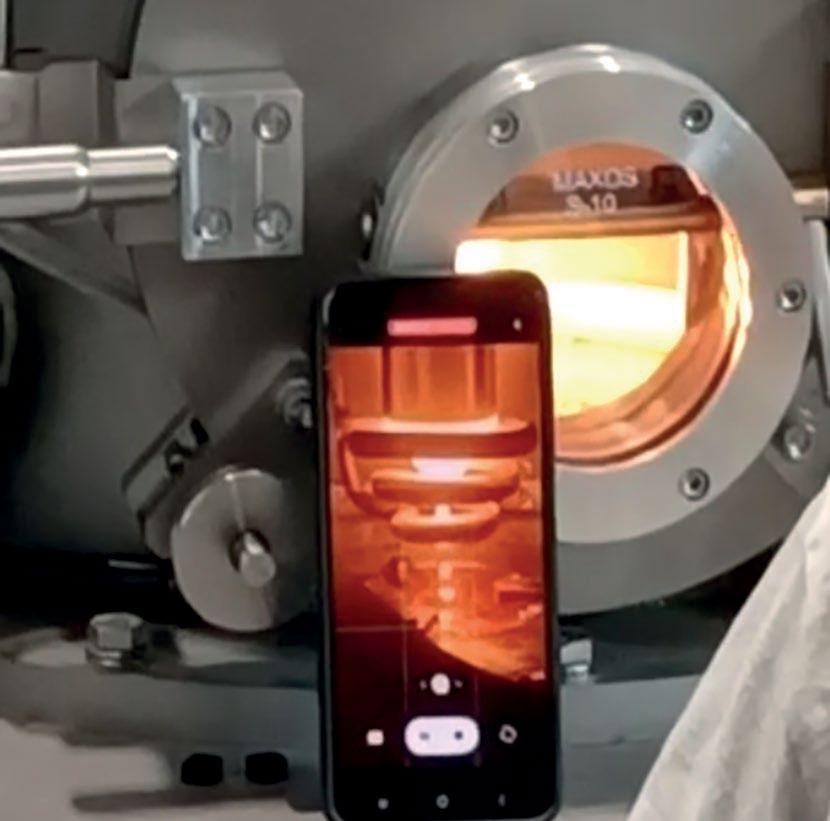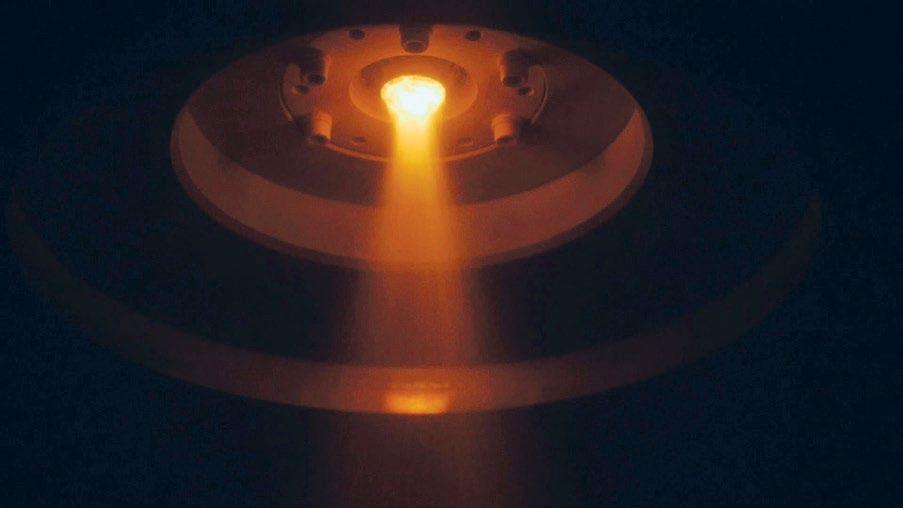

For a sustainable tomorrow

Höganäs AB commits to reduce absolute scope 1 and 2 GHG emissions 51% by 2030 from a 2018 base year.* Höganäs AB also commits to reduce absolute scope 3 GHG emissions from purchased goods and services, upstream transportation and distribution, and business travel 30% within the same timeframe.
*The target boundary includes land-related emissions and removals from bioenergy feedstocks.
Our climate tagret is validated by Science Based Targets initiative.
For more info scan the QR Code
www.hoganas.com

Publisher & Editorial Offices
Inovar Communications Ltd
11 Park Plaza
Battlefield Enterprise Park Shrewsbury SY1 3AF United Kingdom
Tel: +44 (0)1743 469909 www.pm-review.com
Managing Director & Editor
Nick Williams, nick@inovar-communications.com
Group News Editor
Paul Whittaker, paul@inovar-communications.com
Advertising Sales Director
Jon Craxford, jon@inovar-communications.com Tel: +44 (0)207 1939 749
Assistant News Editor
Charlie Hopson-VandenBos charlie@inovar-communications.com
Editorial Assistant
Amelia Gregory, amelia@inovar-communications.com
Consulting Editor
Dr David Whittaker
Technical Consultant
Dr Martin McMahon
Digital Marketer
Mulltisa Moung, mulltisa@inovar-communications.com
Production Manager
Hugo Ribeiro, hugo@inovar-communications.com
Operations & Partnerships Manager
Merryl Le Roux, merryl@inovar-communications.com
Office & Accounts Manager
Jo Sheffield, jo@inovar-communications.com
Subscriptions
PM Review is published on a quarterly basis. It is available as a free electronic publication or as a paid print subscription. The annual subscription charge is £150.00 including shipping.
Accuracy of contents
Whilst every effort has been made to ensure the accuracy of the information in this publication, the publisher accepts no responsibility for errors or omissions or for any consequences arising there from. Inovar Communications Ltd cannot be held responsible for views or claims expressed by contributors or advertisers, which are not necessarily those of the publisher.
Advertisements
Although all advertising material is expected to conform to ethical standards, inclusion in this publication does not constitute a guarantee or endorsement of the quality or value of such product or of the claims made by its manufacturer.
Reproduction, storage and usage
Single photocopies of articles may be made for personal use in accordance with national copyright laws. All rights reserved. Except as outlined above, no part of this publication may be reproduced or transmitted in any form or by any means, electronic, photocopying or otherwise, without prior permission of the publisher and copyright owner.
Design and production
Inovar Communications Ltd.
ISSN: 2050-9693 (PRINT)
ISSN: 2050-9707 (ONLINE)
© 2024 Inovar Communications Ltd

Putting the spotlight on the challenges facing PM
As highlighted in my preview of the World PM2024 congress ( page 57 ), so much has changed in Powder Metallurgy’s traditional markets since the last time the PM World Congress was held in Yokohama, twelve years ago.
In addition to the ongoing and accelerating trend of internal combustion engine downsizing – resulting in a gradual reduction in the average weight of PM parts used in each car – the increasing global production and sales of electric vehicles has further impacted PM. Inevitably affected by this is St. Marys, northwest of Pittsburgh, recognised as the ‘Powder Metal Capital of the US.’
Despite these trends, however, some PM companies in the region believe that there is still a bright future for PM if they are able to adapt to the ongoing challenges. One such company is Phoenix Sintered Metals, which is not only enjoying strong organic growth, but has been bold enough to expand through acquisitions ( page 45 ).
Of course, the need for countries and regions around the world to maintain manufacturing capabilities for critical technologies has never been higher on the agenda. Just one area where this touches on the PM industry is magnets, with sintered hard magnets and iron powder soft magnetic cores increasingly used in electric motors. PM companies around the world are seeing increasing opportunities in this area. One example, highlighted in this issue ( page 65 ), focuses on the rise of Europe’s sintered hard magnets industry.
Nick Williams Managing Director, PM Review
Cover image
PM parts entering a continuous sintering furnace (Courtesy Phoenix Sintered Metals)

Find out more at www.riotinto.com Our materials, your life
Rio Tinto Metal Powders (RTMP) is committed to finding better ways to provide the materials the world needs now and in the future.
As a producer of iron and steel powders at our plant located in Quebec, Canada, RTMP is a key supplier to the automotive industry, which is undergoing a transition towards electrification. RTMP is contributing to the development of new Soft Magnetic Composite (SMC) materials for electric components, from pump assemblies to small electric motors in e-bikes and EV’s to support the energy transition. Together, we can create a better life for the generations to come.


Metal Powders www.qmp-powders.com



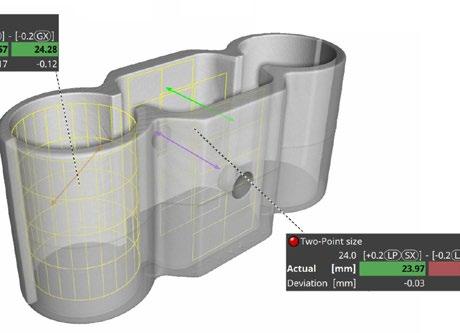



45 Phoenix Sintered Metals: A story of transformation, growth and community from America’s PM heartland
Northwest of Pittsburgh, specifically in a thirty mile or so radius of St. Marys, lies the heart and soul of America’s Powder Metallurgy industry. But, as the global automotive industry stumbles towards electrification, and the downsizing of engines continues unabated, what is the future for the industry in this area?
Bernard North visited Phoenix Sintered Metals for PM Review and reports on a hope-inspiring success story that is driven by employee engagement, operational excellence, strong technology, and customer satisfaction. >>>
57 World PM2024 Yokohama: The stage is set for the PM industry to find a path to sustainable growth
In October, the Powder Metallurgy World Congress series returns to Asia for the first time in six years. Yokohama, the host city of World PM2024, last welcomed the international PM community in 2012. In the intervening period, the commercial landscape for PM, Metal Injection Moulding, and metal Additive Manufacturing has changed beyond recognition.
As PM Review’s Nick Williams reports, our industry now has an opportunity to come together to share knowledge and speak with one voice to a new generation of end-users about PM’s role in the future of sustainable industrial manufacturing. >>>

Experience the power of performance, the spark of innovation, and the strength of partnership
Performance:
As a global leader in powders, pastes, and granules, we excel in materials like Aluminum, Copper, Titanium, and more. Our precision manufacturing ensures superior product attributes tailored to your requirements.
Innovation:
Utilizing state-of-the-art research and development alongside cutting-edge technologies, we provide tailored solutions for PM and additive manufacturing. Our emphasis on materials and process advancements positions us as industry leaders in quality, service, and operational excellence.
Partnership:
Count on us as your trusted development and production ally. Our expertise in metal powders and alloys ensures top-tier materials for critical applications, empowering industries worldwide.
At Kymera International, we’re not just a powder provider; we’re your strategic partner in the world of specialty material solutions and additive manufacturing. Contact us today to revolutionize your projects
www.kymerainternational.com
info@kymerainternational.com
65 The state of Europe’s hard magnets industry and the challenge of optimising the mass production of Nd 2Fe 14B permanent magnets
Europe’s shift towards electric vehicles is driving one of the region’s most significant periods of transformation. As the demand for conventional Powder Metallurgy parts reduces, the need for permanent magnets is rising.
Here, GKN Powder Metallurgy Engineering GmbH’s Dr Markus Schneider, Kevin Haffke and Dr Dennis Wawoczny present the story of the rise, fall, and rise again of sintered Nd 2Fe 14B magnet production in Europe. They then explore how the theory of brittle solids, when applied to sintered rare earth permanent magnets, offers a path to improved production robustness and quality. >>>


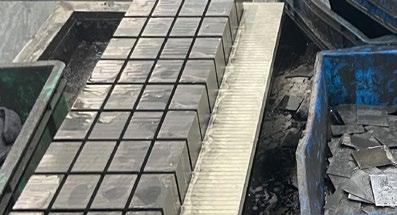
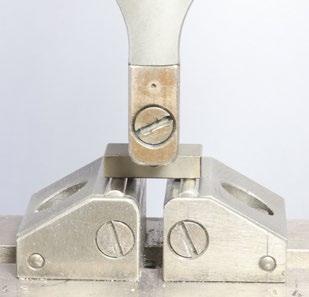



100 Advertisers’ index & buyer’s guide
Our advertisers’ index and buyer’s guide serves as a convenient guide to suppliers across the PM supply chain. In the digital edition of PM Review magazine, available at www.pm-review.com, simply click on a company name to view its advert, or on the company’s weblink to go directly to its website.
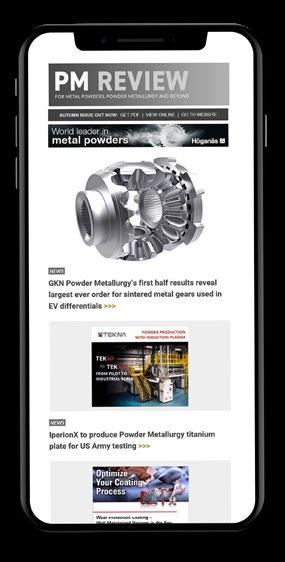
Subscribe to the PM Review newsletter, sent weekly to key PM professionals and end-users worldwide, to make sure you benefit from timely access to the latest industry news and technology trends.


submit news for inclusion in Powder Metallurgy Review contact Paul Whittaker at paul@inovar-communications.com
Jean-Marc Durbuis named as the new CEO of GKN Powder Metallurgy
Dowlais Group plc has announced Jean-Marc Durbuis as the new Chief Executive Officer of GKN Powder Metallurgy. Durbuis joined the company on March 12, following the departure of Diego Laurent who served GKN for thirtyone years.
GKN Powder Metallurgy is a leading provider of powder metal materials, components, applications, and electrification solutions through its three business units GKN Powders/Hoeganaes, GKN Sinter Metals and GKN Additive.
“I want to thank Diego for his thirty-one years at GKN. He has achieved so much during this time at both GKN Powder Metallurgy and GKN Automotive. I am particularly grateful for all he has done to maintain GKN Powder Metallurgy’s position as one of the world’s leading suppliers of powder metal materials and sintered metal components,” stated Liam Butterworth, CEO of Dowlais Group Plc.
Over the past twenty years, Durbuis has held several senior executive positions in the chemical sector, leading global teams in complex and demanding businesses. He has a proven track
record across all operational functions and has been a member of several executive committees and boards. He joins GKN Powder Metallurgy from Allnex, a global supplier of resins and additives to the coating and inks industry, where he was the Executive Vice President of one of Allnex’s global divisions and was a member of the
Allnex Executive Committee and Board of Directors.
Durbuis added, “I am delighted to be joining GKN Powder Metallurgy as its new CEO. It is a world-class business and will play a vital role in introducing new products to market, as we navigate the transition to EVs. I look forward to working with the team and meeting my new colleagues across the globe.”
www.gknpm.com
www.dowlais.com

Jean-Marc Durbuis has been appointed as the new CEO (Courtesy GKN Powder Metallurgy)
Advertisers’ index & buyer’s guide
Looking for PM production equipment, metal powders, R&D support and more?
Discover suppliers of these and more in our advertisers’ index and buyer’s guide, from page 100 to 101


Höganäs announces closure of Alvier PM Technology
Höganäs AB, headquartered in Höganäs, Sweden, has announced that Alvier AG PM Technology, located in Buchs, Switzerland, will close on June 30, 2024. Höganäs acquired Alvier in 2018 when, at the time, it was Europe’s largest Powder Metallurgy tooling manufacturer with a client base reaching across four continents and customers in more than twenty countries.
It was stated that, despite exploring various options and alternative pathways to achieve financial viability for Alvier PM, it became evident that the company’s current direction did not align with Höganäs’ strategic objectives. This, it said, combined with the challenging market conditions and the financial pressures Alvier PM faces, led to the decision.
“Efforts have been made to refine the product portfolio, optimise costs,
enhance efficiency, and strengthen customer relationships, in addition to looking for synergies with the Höganäs group. Unfortunately, these efforts have not led to the required improvements, making this decision necessary,” stated Andreas Jähnke, President Product Area Electro & Mechanical Technology.
Alvier was founded in 1986 as Werkzeugbau Alvier AG based on the concept of developing and producing high-quality, complex-shaped tool components for Powder Metallurgy.
In 1991, the company developed its first helical gear system, winning an EPMA award the following year. It developed multi-pattern die sets for mechanical presses and refined its helical gear system for high-speed presses.
“This decision to close Alvier AG PM-Technology was taken after careful consideration of all options
Kittyhawk acquires Stack HIP from Stack Metallurgical Group
Kittyhawk, Inc, Garden Grove, California, has announced that it has acquired Stack HIP, LLC, Albany, Oregon, from Stack Metallurgical Group (SMG). With the backing of Dallas-based private equity firm Trive Capital, the acquisition represents a significant expansion of its Hot Isostatic Pressing (HIP) capacity and capabilities for aerospace, space, defence and medical applications.
“SMG built a world-class facility in Stack HIP. With this acquisition, Kittyhawk is the premier provider of HIP services on the West Coast. We look forward to supporting our customers’ growth and will continue to make significant investments in capacity to meet the demands of our growing customer base,” commented Tanner Cope, Managing Director at Trive.
Stack HIP provides HIP services to aerospace, defence, and medical customers. The company reportedly
possesses the largest high-pressure HIP vessels in North America, enabling the processing of the biggest and most complex castings and additively manufactured metal parts. Post closing, SMG will continue to operate its classical heat treatment and aluminium special processing facilities in Portland, Oregon; Spokane, Washington; and Salt Lake City, Utah.
“We’re excited to welcome Stack HIP customers, employees, and suppliers into the Kittyhawk family,” said Brandon Creason, President of Kittyhawk. “Stack HIP will allow Kittyhawk to service mission critical parts up to [160 cm] in diameter, enabling us to process the full array of components for our customers. At Kittyhawk, we commit every day to providing the best service and quality to our customers, and we’re thrilled to now do that with the

Alvier PM Technology will close at the end of June, 2024 (Courtesy Höganäs AB)
and considering the long-term prospects,” added Thomas Bühler, CEO of Alvier.
The closure of Alvier PM will impact twenty-nine employees. “We understand that this is difficult news for our affected employees, and we will support them during this period,” Jähnke concluded.
www.alvier.com
www.hoganas.com
added capabilities and dedicated employees of Stack HIP. We look forward to the continued relationship with SMG to deliver unmatched special processing services to our valued customers.”
Doug Puerta, CEO of SMG commented, “We look forward to continued collaboration with Kittyhawk to deliver a differentiated level of service, quality, and value to our shared customers. This transaction will allow both companies to further drive capacity, quality, and capabilities in our respective services to best serve the PNW market.”
“This is an important step in growing the platform specialised in this highly-differentiated HIP capability. The Company continues to benefit from strong industry tailwinds, and we are excited to support our customers by investing in capacity,” said David Stinnett, partner at Trive.
www.trivecapital.com www.stackmet.com www.kittyhawkin.com
•
Electric • 16 - 200t

Electro Hydraulic • 350t - 2,000t


Equispheres secures $14.6M funding round led by Martinrea International
Metal powder producer Equispheres, Inc, based in Ottawa, Ontario, Canada, has completed an initial close on its Series B financing totalling around $14.6 million (CA $20 million). The financing was led by Martinrea International Inc., a global automotive supplier specialising in the design, development, and manufacturing of highly engineered, lightweight structures and propulsion systems. The financing round also saw participation from new institutional investors and will remain open until June 30, 2024.
Equispheres offers a range of aluminium powders for Additive Manufacturing, produced with its

Equispheres aluminium alloy powder particles magnified to 100μm (Courtesy Equispheres)
innovative atomisation technology. The company’s aluminium powders are reported to increase building speeds up to nine times higher than industry standards, thereby lowering production costs by up to 80%.
“The potential of Additive Manufacturing to transform traditional manufacturing is undeniable as evidenced by the fact that most of the top companies in the automotive, aerospace and defence sectors are actively engaged. Yet widespread industrial adoption requires a leap in productivity,” said Kevin Nicholds, president and CEO of Equispheres.
“By working closely with global leaders in automotive, aerospace and defence, we have been able to use our technology to engineer materials that unlock new high-speed Additive Manufacturing processes and new applications.”
“We believe our path to success lies in partnering with our customers to reduce the overall cost of Additive Manufacturing,” shared Nicholds. “This will lead to tremendous growth potential, where metal powders will be the largest part of the value chain,” noting that the global casting market for aluminium alone is approximately CA $100 billion annually.
Uzbekistan looks to develop $500M rare earth and Powder Metallurgy projects
Uzbekistan’s President Shavkat Mirziyoyev has announced plans to develop rare earth projects worth a total of $500 million. During a meeting to discuss geology, the mining and metallurgical industry, the President suggested that the production of products in the Powder Metallurgy industry, which did not previously exist in the country, could yield $300 million per year.
Uzbekistan’s domestic mining industry reached almost $11 billion last year, with the bulk of this coming from precious and
non-ferrous metals. However, there is reported to be substantial untapped potential for critical minerals, with some thirty-two discovered in the country.
The president pointed to the excellent prospects opening up. The need to expand the development of existing, and the exploration of new deposits of critical raw materials, was emphasised. It was stated that, currently, six types of such raw materials are mined in Uzbekistan. At the same time, products with high added value can be obtained from
Funding will reportedly be used to bring on multiple new reactors in 2024 to support existing production programmes, expand facilities and continue to expand collaboration on new materials with strategic partners.
“Equispheres’ continuing track record for driving performance improvements with Additive Manufacturing is truly impressive, opening doors to a wide variety of new and exciting higher-volume applications,” stated Pat D’Eramo, Chief Executive Officer of Martinrea International.
“Martinrea is the ideal lead investor for our Series B financing,” Nicholds commented. “Not only are they a highly successful global automotive leader who are experts in lightweighting of aluminium components, but they are also an innovative thought leader with a great culture. We can learn a lot from Martinrea on our journey to be the leader in what is forecast to be a multi-billion materials market for Additive Manufacturing.”
“We are also grateful to have the continued support of Business Development Bank of Canada and Sustainable Development Technology Canada at this critical growth stage,” he added.
www.equispheres.com www.martinrea.com
platinum, indium, and vanadium, as well as minerals containing tungsten, molybdenum, rhenium, zinc, and manganese.
It was added that an agreement on critical raw materials was recently reached with the European Union, allowing greater access to this large market.
With this in mind, President Mirziyoyev ordered the establishment of a project office and collaboration with leading institutes and scientific centres to develop prospective projects. The task has also been set to organise a Scientific Centre for Advanced Technologies for Precious Metals. www.hukumat.uz
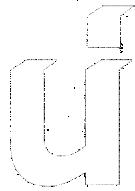
A SOLID LINE OF THINKING: SINTERING WITH A SOLID INFILTRANT
SOLIDIFY YOUR CASE FOR ULTRA INFILTRANT
There’s a solid line of thinking in the copper infiltration of ferrous PM parts and it can change the way you do business. Ultra Infiltrant is a wrought, homogeneous copper-based alloy that offers significant benefits over powder form copper infiltrants. Benefits like less waste, improved productivity, reduced erosion, no adherent residue and increased strength and hardness values. Benefits that affect your production line and ultimately your bottom line. Ultra Infiltrant is available in single and multi-turn wire rings, straight-length slugs, or other configurations to accommodate virtually any automated process. Ultra Infiltrant was designed for copper infiltration of ferrous PM parts in today’s cost competitive manufacturing environments, where the handling of fragile green infiltrant slugs is difficult and can lead to excessive waste. Additionally, it performs well in nitrogen-hydrogen based atmospheres so widely used in sintering operations globally.
SOLIDIFY YOUR INFILTRATION PROCESS FOR ULTRA INFILTRANT
Less waste, easier production, superior product: what more is there? Ultra Infiltrant revolutionizes the PM industry by eliminating all the negatives associated with infiltrant powders and improving on the process as a whole. The net result? How about overwhelmed customers and a boost to your bottom line? That’s what Ultra Infiltrant offers, so put it to work and get started on a solid line of thinking.

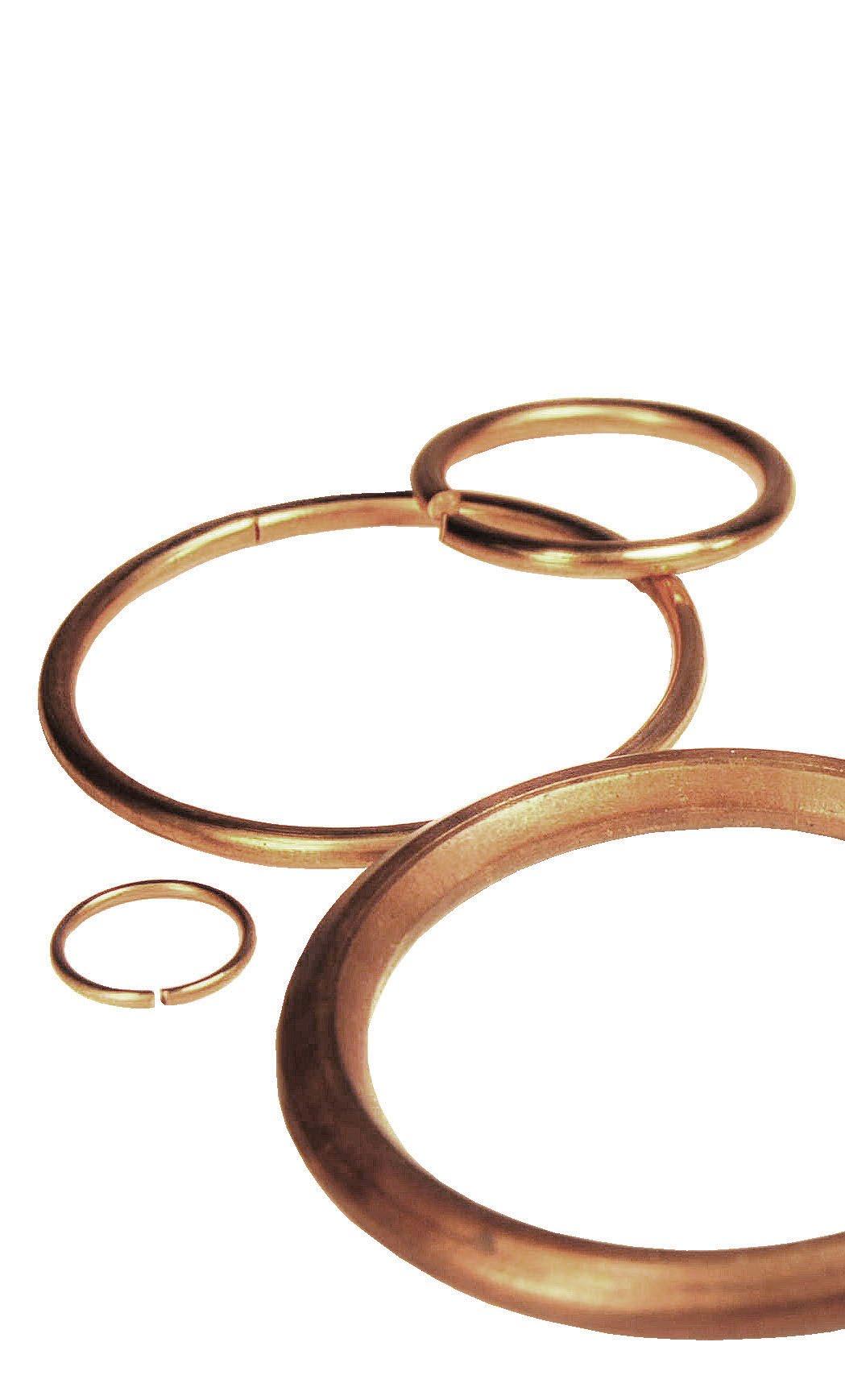
GKN Powder Metallurgy secures new business with 23% year-onyear increase in bookings
Dowlais Group plc, the parent company of GKN Powder Metallurgy, GKN Automotive and GKN Hydrogen, has released its 2023 Annual Report. The report states that adjusted revenues for GKN Powder Metallurgy in 2023 were £1,047 million, 3.5% ahead of 2022. Adjusted operating profit for the year was £96 million, at an adjusted operating margin of 9.2%.
It was stated that GKN Powder Metallurgy had been heavily focused on inflation recovery throughout the year, and successfully recovered around 100% of commodity and energy inflation for the full year through pricing initiatives and surcharge pass-through agreements. The business offset other inflationary increases through operational adjustments.
Commercial progress and EV transition
GKN Powder Metallurgy made commercial progress in the year, securing new business wins with a 23% year-on-year increase in bookings when measured by forecast peak annual revenues. The business has a broad and stable customer base, with over 3,000 customers in automotive and other industrial markets.
A key priority for the business is navigating the EV transition, as a significant proportion of its sales is currently from products used in ICE vehicles. It was added that progress continues to be made, with approximately 72% of the value of its new business wins in 2023 for EV or propulsion source agnostic product groups, by forecast peak annual revenue. This was a material step-up from the prior year and reflects that the new products the company has
2023
2023
Auto
EV opportunity
developed over recent years are gaining commercial traction.
The business continues to identify new areas in which its PM expertise can be applied to EV-specific products. This includes areas such as battery connectors and packs; components for high-voltage cables, electric motors and thermal management systems; e-pumps; x-by-wire components and differential gears. Multiple business wins in EV-specific products were secured in the year, including the single largest contract the business has ever secured, for the supply of sintered differential gears for a leading US vehicle manufacturer, with production due to commence in 2025.
New markets for its metal powders
GKN Powder Metallurgy’s strategy to successfully navigate the EV transition is not only based on adapting its core sinter metals business but also on identifying new markets for its metal powders. The business reported it has had success this year in selling iron powder to produce cathodes for Lithium Iron Phosphate (LFP) batteries. LFP batteries are becoming more widely used and are gaining share in the growing
EV battery market due to their lower cost and thermal stability. The business is already supplying customers with this material and working with vehicle and battery manufacturers (and their suppliers) on several potential opportunities involving localised supply across Europe, North America, and China.
Permanent magnets for electric motors
An additional potential growth area that the business is pursuing is the manufacture and supply of permanent magnets for electric motors for EVs and other applications. Progress was made during the year, including the first commercial agreement for the manufacture of magnets for Schaeffler. The business reportedly continues to see interest in these products from multiple customers (both OEMs and Tier 1 suppliers) aiming to diversify their supply chains for these critical components. Commercial negotiations and advanced technical qualifications have continued with several potential customers, and the business is said to be working on establishing a robust and sustainable supply chain for

critical raw materials as part of its ‘Mine-to-Magnet’ supply chain strategy.
Construction of a new low-scale production line capable of producing up to 400 tonnes of permanent magnets a year has commenced and is expected to be operational in Q1 2025. Investment in the manufacturing of magnets totalled £2 million in the year, and appropriate investment in full-scale production facilities will be considered as and when contractual demand reaches the required threshold, and returns meet its financial criteria.
While primarily an automotivefocused business, GKN Powder Metallurgy supplies a wide range of products to other industrial markets, including: consumer white goods; heating, ventilation and air conditioning (HVAC); and lawn and garden products. These markets represent approximately 20% of the revenue, and advancing non-automotive
opportunities, in particular into highgrowth sectors such as medical, advanced computing and renewable energy, will continue to be a strategic target for the business. As an example, during the year the company won a substantial order for the supply of isostatic tubes for a renewable energy project in China.
Sustaining transformation
GKN Powder Metallurgy added that it is committed to offering sustainable solutions to its customers. The business has continued to invest in sustainability projects throughout the world. As a result, energy usage was reduced by 80 GWh, more than 10,000 tonnes of waste was diverted from landfill, and consumption of water was reduced by 25 million litres.
The business obtained a Platinum EcoVadis sustainability medal for its 2023 submission, placing it in the top 1% of businesses assessed, an

The report states that adjusted revenues for GKN Powder Metallurgy in 2023 were £1,047 million (Courtesy Dowlais Group)
award that recognises the very positive sustainability progress it has made in recent years. GKN Powder Metallurgy also submitted its first science-based targets to the SBTi for validation, targeting a 42% reduction in absolute Scope 1 and 2 emissions by 2030 from a 2022 base year, a 25% reduction in absolute Scope 3 emissions by 2030 from a 2022 base year and reaching net-zero emissions by 2050.
www.gknpm.com
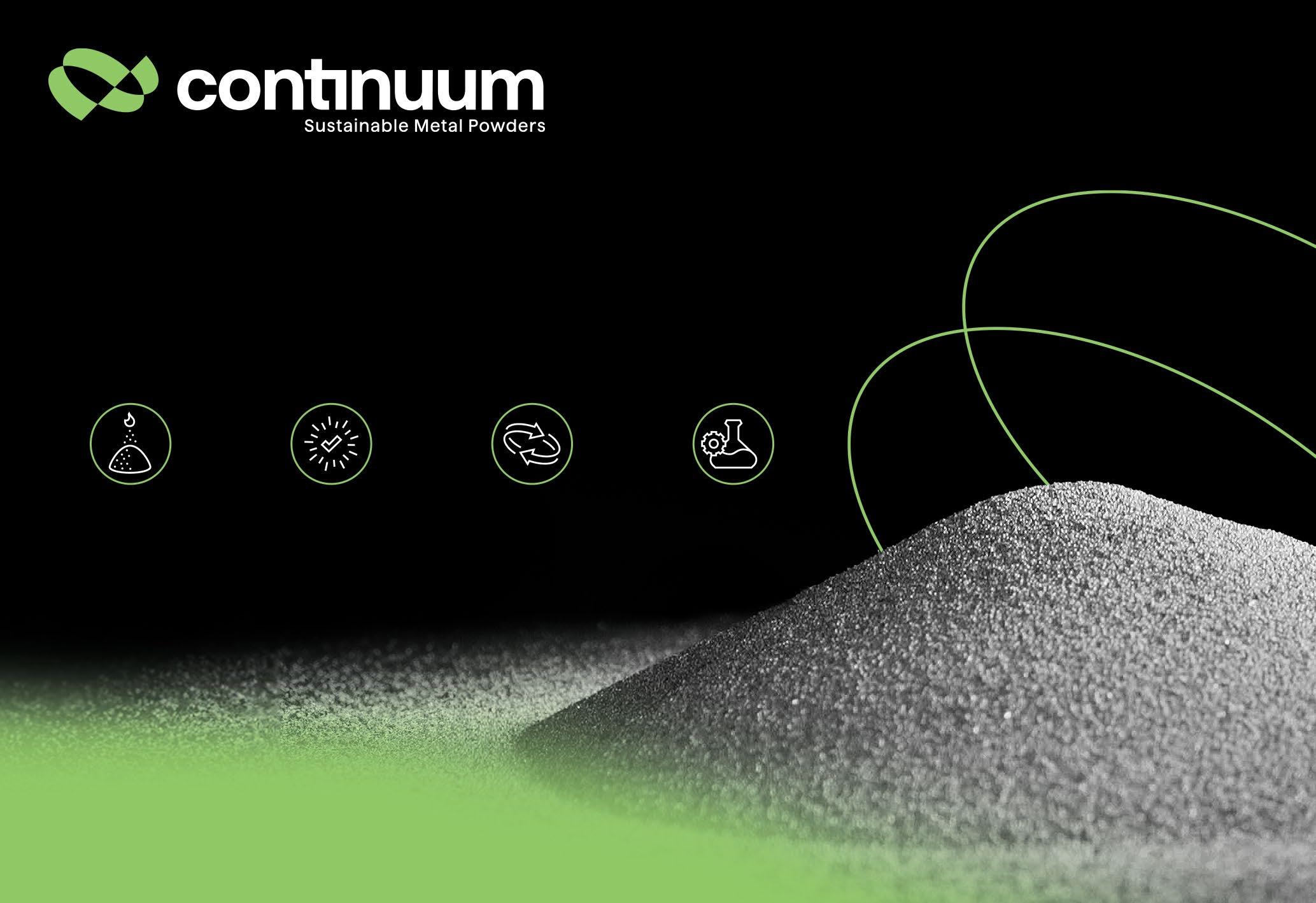

Tooling for Powder Compacting Technology
•
•
• Low scrap rate
• Maximal machine utilization
•

Sandvik to acquire majority stake in China-based cutting tool manufacturer Ahno
Sweden’s Sandvik has signed an agreement to acquire a majority stake (72.4%) in Suzhou Ahno Precision Cutting Tool Technology Co Ltd (Ahno), based in Jiangsu, China, from the current majority owner Ningbo Baosi Energy Equipment Co Ltd and related parties. Ahno will be reported within the business area segment Sandvik Machining Solutions.
Ahno is said to have a leading position in precision cutting tools in the fast-growing local premium segment, with a broad product and service offering and an extensive sales, distribution and production footprint in China. The main customer industries are general engineering and automotive, of which a significant portion are for electric vehicles; medical being a growing segment for the company.
“This acquisition will strengthen our position in the strategically important Chinese market,” stated Stefan Widing, president and CEO of Sandvik. “Ahno’s competitive assortment and closeness to customers is a great platform to drive further growth of our tooling business in China. Much of the offering is focused on fast growing segments, like electric vehicles, which makes Ahno a perfect fit with our strategy.”
Ahno will form the basis of a new China-based division within Sandvik Machining Solutions, established following the closing of the transaction. Sandvik’s international tooling brands will continue to be operated in China as they are today. Ahno’s current market position, combined with Sandvik’s leading competence and international brand presence, is expected to enable an attractive growth platform in ‘China for China’ going forward.
“This acquisition is in line with our strategic ambition to grow in China and build a leading position in the local premium segment. In addition, Ahno enhances our local production capabilities, making it a great addition to Sandvik,” added Nadine Crauwels, President of Sandvik Machining Solutions.
Ahno was founded in 2002 and currently has around 1,200 employees. In 2023, the company generated revenues of approximately CNY 812 million (£90,145,771), mainly from China. The impact on Sandvik’s EBITA margin will be limited, though the impact on Sandvik’s earnings per share (excluding non-cash amortisation effects from business combinations) will be positive. The enterprise value for the acquired stake is CNY 1,456 million (£162,465,345) corresponding to a multiple of 10.9 x EV/EBITDA 2024. The transaction is expected to close during the third quarter of 2024 and is subject to customary closing conditions.
www.ahno-tool.com www.home.sandvik

Kennametal announces Sanjay Chowbey as new president and CEO
Kennametal Inc, based in Pittsburgh, Pennsylvania, USA, has announced that Sanjay Chowbey, currently VP of Kennametal Inc. and president of Metal Cutting Segment, will succeed Christopher Rossi as president and CEO. Rossi has decided to retire from the company after nearly seven years, effective May 31, 2024.
“On behalf of the entire Board, I want to thank Chris for his many contributions to Kennametal and congratulate Sanjay on his welldeserved appointment as CEO,” said William M Lambert, Chairman of the Board. “Chris is leaving the company better than he found it, having successfully executed the company’s Simplification/Modernisation strategy, which improved the efficiency and customer service level of its factories while enabling the manufacturing of new product inno -
vations. In addition, Chris led the company through the challenges of COVID-19, drove a significant and lasting cultural transformation and improved the underlying performance of the business.”
Rossi will continue to serve on the company’s Board of Directors until his retirement, at which time Chowbey will join the Board. Rossi and Chowbey will work together to ensure a seamless transition.
Chowbey joined Kennametal in 2021 as President of the Metal Cutting segment. Under his leadership the business has grown its customer base, consistently delivered sales growth, expanded its operating margins and launched more than twenty new products.
“I am honoured and excited to serve as the next CEO of Kennametal,” stated Chowbey. “We have


Kennametal Inc has announced Sanjay Chowbey as its President and CEO (Courtesy Kennametal)
a proud eighty-six-year legacy of helping customers make products that touch everyday life and enable people to drive, fly, power and build. We have extraordinary employees who are focused on serving stakeholders around the world and working to do things better than we did the day before. I look forward to accelerating our transformational journey to create shareholder value through growth, margin expansion and a balanced capital allocation strategy.” www.kennametal.com











MP Materials receives $58.5M to boost US rare earth magnet production
MP Materials Corp, Las Vegas, Nevada, USA, has received a $58.5 million award to advance its construction of a rare earth magnet manufacturing facility. The Section 48C Advanced Energy Project tax credit allocation was issued by the IRS and Treasury following a competitive, oversubscribed process administered by the Department of Energy that evaluated the technical and commercial viability and environmental and community impact of approximately 250 projects.
Neodymium-iron-boron (NdFeB) magnets are an indispensable component found in the electric motors and generators that power hybrid and electric vehicles, robots, wind turbines, drones, electronics, and critical defence systems. Global demand is expected to triple by 2035.
MP Materials began constructing its Fort Worth, Texas, manufacturing facility in April 2022. The company is currently producing magnet precursor materials in a North American pilot facility. It expects to
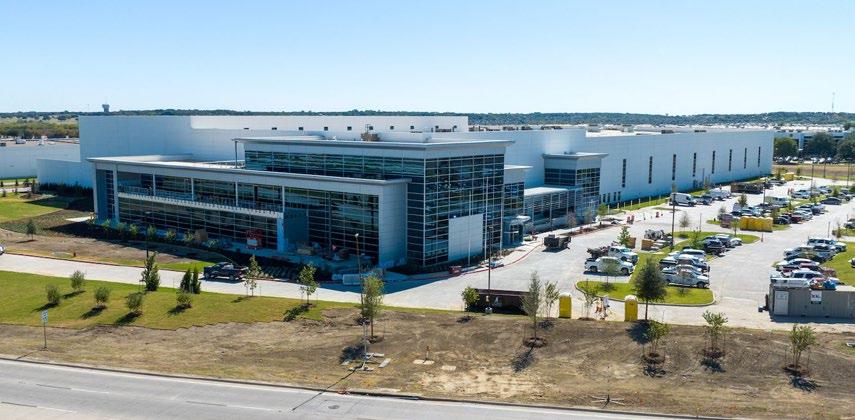
of a rare earth magnet manufacturing facility (Courtesy MP Materials Corp)
Kymera International acquires copper-based powder producer Royal Metal Powders
Kymera International, a speciality materials company headquartered in Raleigh, North Carolina, USA, has acquired Royal Metal Powders Inc., a manufacturer of water and air-atomised copper-based powders located in Maryville, Tennessee.
Under the continued leadership of Mike Lutheran, president of Royal Metal Powders, Kymera will continue operations at Royal’s facility until all production can be moved to Kymera’s manufacturing sites in North Carolina, Pennsylvania and Germany. It was added
that Lutheran will be joining Kymera as Senior Vice President.
“The copper powder markets have encountered headwinds over the past few years, but we remain committed to ensuring Kymera and Royal’s customers receive timely and high-quality supply of these critical materials for decades to come,” stated Barton White, CEO of Kymera. “As demonstrated by our recent $20 million expansion of our North Carolina facility, Kymera is positioned to provide uninterrupted, long-term supply for the entire market.”
commence commercial production of precursor materials in Fort Worth this summer, and finished magnets by late 2025. MP will reportedly supply these products to General Motors, its foundational customer, to support its North American EV production.
MP will source the factory’s raw material inputs from Mountain Pass, California, where MP owns and operates what it claims to be America’s only scaled and operational rare earth mine and separations facility. At the factory, NdPr oxide produced at Mountain Pass will be reduced to NdPr metal and converted to NdFeB alloy and finished magnets, delivering an end-to-end supply chain with integrated recycling and sustainability.
According to a Section 232 investigation completed by the Department of Commerce in 2022, sintered NdFeB magnets are “required for critical infrastructure” and “irreplaceable in key defence applications,” yet the US is “essentially one hundred percent dependent on imports,” posing a national security risk. More than 90% of the world’s NdFeB magnets are currently produced in China.
www.mpmaterials.com
Royal Metal Powders offers a wide variety of powders, including copper, brass, premix and pre-alloyed bronze powders, nickel/silver, tin powder, electrolytic copper powders, lead powders, and phos copper powders.
Adam Shebitz, Partner at Palladium Equity Partners, the parent company of Kymera International, added, “We are pleased that Kymera continues to demonstrate its unwavering commitment towards the copper powder market. Following the recent expansion undertaken at Kymera’s RTP facility, the acquisition of Royal’s assets reinforces Kymera’s position as a well-capitalised and highgrowth supplier of niche speciality materials.”
www.kymerainternational.com

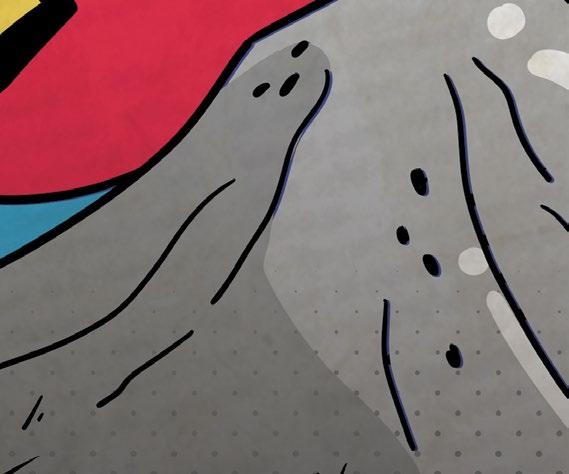
PUT THE POW IN POWDER


Metal powder that packs a punch


• Alloys backed by 134+ years of metallurgy leadership
• In-house alloy development, atomization, and QC
• Global distribution, ships within 48 hours












IperionX completes commercial-scale titanium HAMR furnace installation
IperionX Limited, based in Charlotte, North Carolina, USA, has announced that the Hydrogen Assisted Metallothermic Reduction (HAMR) titanium furnace has been successfully installed and delivered to the Titanium Manufacturing Campus in Virginia, USA. The first energisation and commissioning are on track to commence in the second quarter of 2024.
The advanced HAMR furnace is similar in scale to a traditional single-unit Kroll titanium furnace, and is reported to enhance IperionX’s manufacturing capabilities with numerous competitive advantages. These include lower operating temperatures, increased efficiencies, shorter production cycles, and higher product qualities.
These manufacturing advancements are supported by IperionX’s portfolio of patented technologies that can produce titanium powders, semi-finished titanium products, near-net shape forged titanium products, and additively manufactured titanium components. These technologies can reportedly manufacture high-performance titanium products with superior energy efficiency, lower costs, and lower environmental impacts.
The full development of IperionX’s Titanium Manufacturing Campus is reportedly advancing to plan, with first deoxygenation production of titanium powder scheduled to commence in mid-2024. Full run rate target capacity of at least 125 metric tons per year is anticipated for the

end of 2024, which is expected to scale-up to full target production capacity of 2,000 metric tons per year in 2026.
“The deployment of our advanced HAMR titanium furnace at the Virginia facility is another crucial step to re-shore a full ‘end to end’ titanium supply chain within the United States,” stated Anastasios (Taso) Arima, IperionX CEO. “This furnace has a similar capacity to existing furnaces used in the incumbent industry’s Kroll process, but with far less energy consumption and lower complexity to unlock a range of higher value manufactured titanium products. The successful commissioning and production from this furnace is the cornerstone for a transformation of the US titanium industry to manufacture high-performance, low cost titanium alloys for advanced American industries.”
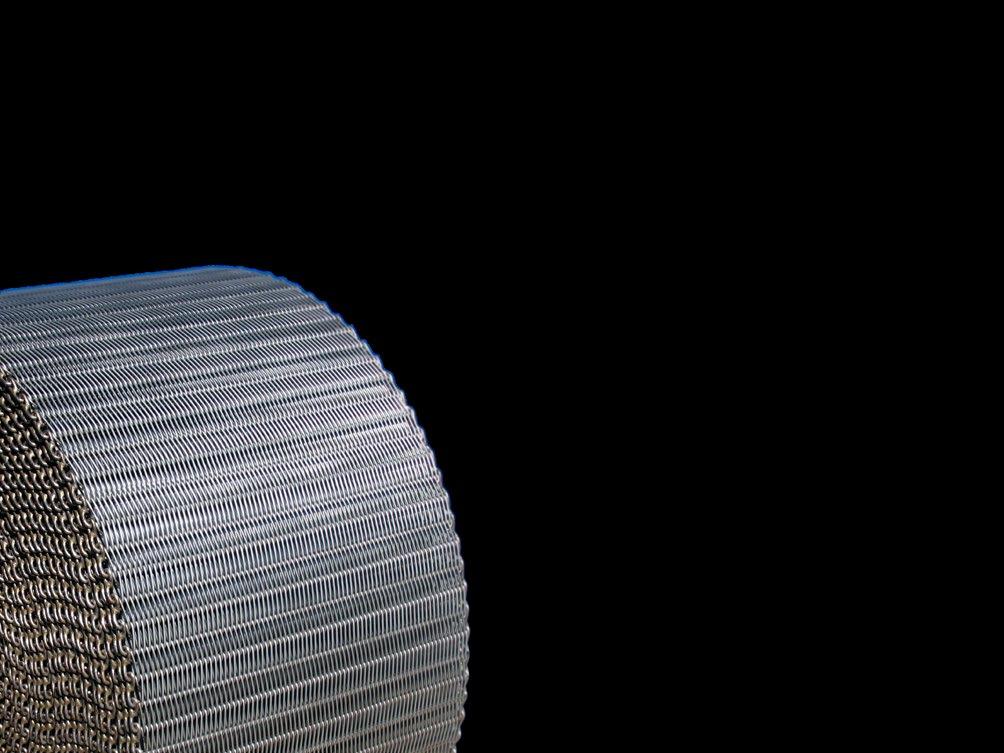

www.iperionx.com

SUPPLIER
Established in Barcelona, We are the biggest manufacturer of mesh belts for sintering furnaces with global presence around the globe
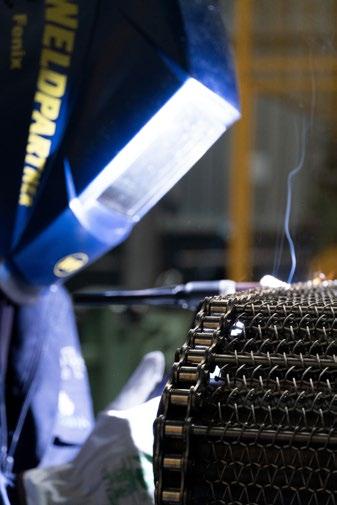



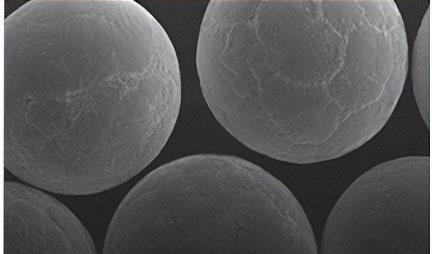
Retech’s new Plasma Gas Atomizer will atomize reactive and refractory metals faster, more economically, and better than ever.
Our Plasma Atomization technology not only atomizes reactive and refractory metals at unprecedented rates, but includes features that eliminate many other obstacles to cost effective atomization of titanium and other refractory metals.
• Highest Throughput in the Industry – Produces powders far faster than any other available technology
• Simplified Feedstock Preparation – Accepts elemental feedstock, scrap, sponge, recycled materials and other low-cost feed
• Retech’s Proprietary Hearth Melting Technology – Production of ultra-high purity product
• Versatile Atomization of Multiple Alloys – Suitable for any alloy that can be plasma melted
Jiangsu Vilory Advanced Materials Technology raises $50M for facility expansion
Jiangsu Vilory Advanced Materials Technology Co., Ltd (VMP), located in Jiangsu, China, has successfully raised $50 million in two rounds of financing. The funding will be used to finance the construction of VMP’s new production facility.
VMP offers a wide range of metal powders, produced using the company’s vacuum inert gas atomisation (VIGA) powder production technology. Currently, the company operates ten VIGA machines and has an annual capacity of 750 tonnes. It was stated that Phase II of the new facility is nearing completion and will soon be operational. Phase III of the development has now commenced.
The funding rounds were led by China State-owned Enterprise Mixed Ownership Reform Fund Co., Ltd., which became VMP’s second-largest strategic external shareholder. This was followed by Jiangsu State-owned Enterprise Mixed Ownership Reform Fund (Limited Partnership) and other Chinese institutions.
China’s Enterprise Mixed Ownership Reform Fund focuses on core technologies in key areas, striving to build a model for the reforming of state-owned science


Our powder is:
•
Spherical
•
Free-flowing
•
•
•
Due to the efficiency of our cuttingedge technology we can offer the lowest priced powder on the market with no compromise in quality.
D50 of 35µm for most materials
D50 of 20µm for titanium super alloys
Has high tap density
We process directly from:
Raw elemental material •
Pre-alloyed stock • Sponge •
Recycled chip
Recycled parts •
Over-sized powder •

We can handle refractory and reactive alloys •

VMP has raised $50 million to further the construction of its new production facility (Courtesy VMP)
and technology enterprises and pioneering independent innovation. Its investment in VMP is expected to further strengthen the company’s position in the industry, and promote the development of metals for the Additive Manufacturing sector.
Jiangsu Mixed Reform added that its investment is intended to help VMP strengthen its research and development capabilities, expand production capacity and serve the country’s manufacturing strategy.
During 2023, VMP undertook two national R&D projects and reported breakthroughs in the research and development of five materials. The company also developed what is reputed to be the country’s first single-furnace VIGA equipment with a charging capacity of 500 kg, which has now been put into production. Throughout the year, twenty-six invention patents were authorised, resulting in a total of 143 patents now authorised. www.wllxcl.com/enindex.aspx
ZF opens auto tech centre in Monterrey, Mexico
ZF Group has opened a campus that will house four corporate function hubs and the company’s first R&D centre in Mexico. The new building joins the advanced electronic components manufacturing plant that began production in 2023.
Martin Fischer, president of ZF North America and member of the Board of Management, shared, “This centre is of utmost importance to our company regionally and globally, as it will allow us to drive innovation and the development of new technologies, helping us stay at the forefront of the mobility industry. In addition, the hubs of corporate functions such as finance, IT and HR operations, which are also part of this campus, are extremely relevant to guarantee the operation and efficiency of the company, since they serve various regions.”
ZF invested $200 million to create the complex. The R&D centre has 16 laboratories that can perform tests to prevent and correct product failures. Its equipment simulates the real-world conditions a vehicle is exposed to in different environments, allowing engineers to gain accurate information about its behaviour in various situations.
www.zf.com

Global electric car sales estimated to reach 17 million in 2024
The International Energy Agency (IEA) has estimated that electric car sales could reach 17 million in 2024, accounting for around one in five cars sold worldwide. The market share of EVs could reach up to 45% in China, 25% in Europe and over 11% in the United States, underpinned by competition among manufacturers, falling battery and car prices, and ongoing policy support, it was stated.
In the first quarter of 2024, electric car sales grew by around 25% compared with the first quarter of 2023, similar to the year-on-year growth seen in the same period in 2022. From January to March of this year, almost 1.9 million electric cars were sold in China, marking an almost 35% increase compared to sales in the first quarter of 2023. China Passenger Car Association
reported that in March, NEV sales in China surpassed a share of 40% in overall car sales for the first time.
As in 2023, sales of plug-in hybrid electric cars are reportedly growing faster than sales of pure battery electric cars. Plug-in hybrid electric car sales in the first quarter increased by around 75% year-onyear in China, compared to 15% for battery electric car sales which started from a lower base.
In Europe, the first quarter of 2024 saw year-on-year growth of over 5%, slightly above the growth in overall car sales and thereby stabilising the EV sales share at a similar level as last year. The share of EVs in total car sales was slightly lower than last year. As in China, PHEV sales in both Germany and the United Kingdom were stronger than BEV sales.
In the United States, first-quarter sales reached around 350,000, almost 15% higher than the same period the year before. Electric car sales in the United States are projected to rise by 20% in the year, translating to almost half a million more sales relative to 2023. Over the entire year, around one in nine cars sold are expected to be electric.
The majority of the additional 3 million electric car sales projected for 2024 relative to 2023 are estimated to be from China. Despite the phase-out of NEV subsidies last year, sales in China have remained robust, indicating that the market is maturing. With strong competition and relatively low-cost electric cars, sales are estimated to grow by almost 25% in 2024 to around 10 million. If confirmed, this figure will come close to the total global electric car sales in 2022. As a result, electric car sales could represent around 45% of total car sales in China over 2024. www.iea.org
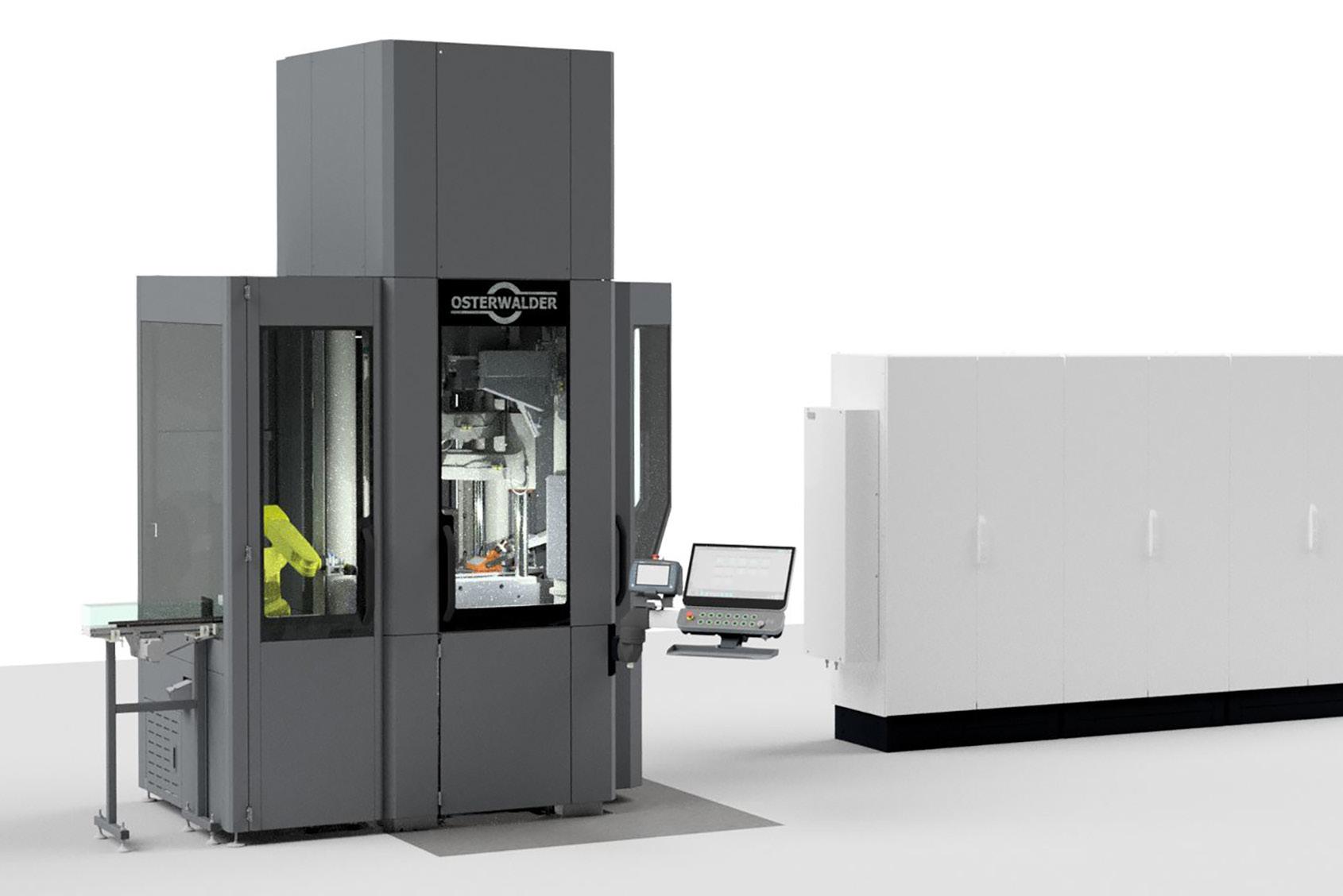
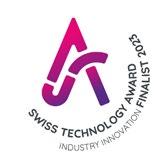


Sandvik to acquire German cutting tools and solutions provider Almü
Sandvik AB, headquartered in Stockholm, Sweden, has signed an agreement to acquire Almü Präzisions-Werkzeug GmbH (Almü), a
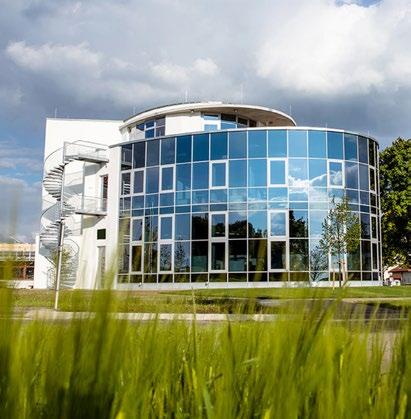
Almü is headquartered in Zell unter Aichelberg, Germany (Courtesy Almü)
Germany-based cutting tools and solutions provider within high-precision drilling, reaming, milling and tooling systems. With the acquisition of Almü, Sandvik stated it is looking to strengthen its offering towards lightweight components in the automotive segment, an area which is increasing in importance due to the shift towards electric vehicles.
“Strengthening our position within lightweight materials is one of the key priorities within Sandvik. We have had good progress and made several acquisitions in this area over the past two years, and I am very pleased that we, through the acquisition of Almü, continue to execute on our strategy,” stated
Arc Completa’s Four Nines Metals offers high-purity copper powder
Arc Completa, Inc., Waltham, Massachusetts, USA, has established Four Nines Metals, a company offering a range of metals including high-purity copper powder. Arc Completa’s metal products are known for certified and traceable materials from sustainable sources, with no sanctions or other restrictions on their release or delivery.
The ultra fine copper powder is reported to be 99.9998% pure. The
product line also includes nickel wire (99.76% pure), aluminium ingots (98.7% pure), platinum (99.95% pure), and lithium (99.5% pure). Certifications are provided by Institut fur settene Erden und Metalle e.V. (ISE) 2020 and Independent Global Assaying Services (IGAS) 2018. “We are excited to offer these high purity metals to the marketplace,” shared Gary Ainsworth, president of Arc Completa. “We know there is heavy
MTC PS adds third Hot Isostatic Press at Swedish facility
MTC Powder Solutions (MTC PS), Surahammar, Sweden, has announced its investment in a third Hot Isostatic Press (HIP). The new machine will be installed alongside MTC PS’ new large HIP unit in the factory currently under construction in Sweden.
This follows on from the announcement of an investment of
the second largest HIP unit in the Metal Technology Co. Ltd (MTC) Group. MTC PS’ third HIP unit will extend the capacity and offerings further to meet the increased demand from multiple industries.
“Having three HIP units on the same site will not only increase capacity significantly but also increase our flexibility as we will be
Stefan Widing, president and CEO of Sandvik.
Almü was founded in 1978, has forty-four employees, and is headquartered in Zell unter Aichelberg, Germany. The company has a strong position within the DACH region (Germany, Austria and Switzerland) and a solid customer base in the automotive segment. In 2022, the company generated revenues of around €6 million. The impact on Sandvik’s EBITA margin and earnings per share will reportedly be limited.
The transaction is expected to close during the second quarter of 2024 and is subject to customary closing conditions. Almü will be reported in Sandvik Coromant, a division within Sandvik Manufacturing and Machining Solutions. www.home.sandvik www.almue.de
demand for quality materials and a sustainable supply, and Arc Completa can facilitate access to these material at a discount. Our team of experts is always available to help guide customers through quality certs, purchasing, and logistics to reliably receive their materials. The website is another tool for users to easily obtain information about our metals and other services.”
To support the launch, the company has created the FourNinesMetals.com website. www.fourninesmetals.com www.arccompleta.com
able to run multiple HIP cycles in parallel shortening lead times to our customers,” commented Jimmy Bovin, Sales & Marketing Manager MTC PS.
The investment is one part of the larger project called SHIN, which looks to expand the HIP offering significantly in Europe for demanding markets, such as aerospace, defence, nuclear, renewables, big science, and small modular reactors.
www.mtcpowdersolutions.com
ADDING VALUE TO ADDITIVE MANUFACTURING
Bodycote provides a complete service solution for metal parts built by the additive manufacturing process, including stress relief to minimise distortion and residual stress, EDM to prepare the component for hot isostatic pressing (HIP), heat treatment or HIP to remove microporosity, and associated quality assurance testing.
Reduction in rejection rates and inspection costs
Fatigue properties on par with wrought material
Significant improvement in fatigue strength, fracture toughness, and tensile ductility
100% reduction in porosity possible
Improved machined surfaces and consistency in properties
Improved microstructure

the partner of choice for additive manufacturing
heat treatment | metal joining | hot isostatic pressing | surface technology
Malvern Panalytical launches compact XRF spectrometer
Malvern Panalytical, part of Spectris plc, Egham, Surrey, UK, announced the launch of Revontium, an XRF spectrometer. This new instrument delivers elemental analysis in a compact footprint for the optimal balance between precision and efficiency. Revontium offers an alternative to 1-2 kW floor-standing systems, and is said to deliver high-quality, repeatable results at a reduced cost of ownership and environmental impact. Together, these benefits are intended to open new possibilities for elemental analysis across multiple industries.
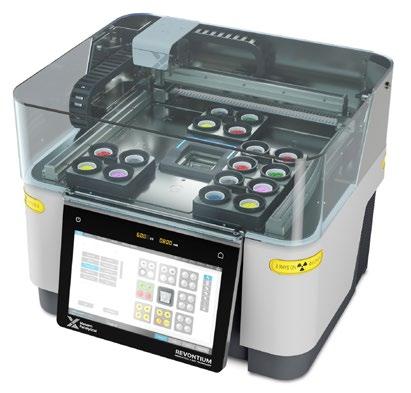
The Revontium XRF spectrometer (Courtesy Malvern Panalytical)
X-ray fluorescence (XRF) is a nondestructive technology for elemental analysis, with a number of gains over techniques such as inductively coupled plasma spectroscopy (ICP) and atomic absorption spectroscopy (AAS). However, large floor-standing wavelength-dispersive (WDXRF) instruments can be both energy- and cost-intensive. Revontium is reportedly the only XRF spectrometer on the market delivering comparable results and data quality to these larger instruments, at a reduced footprint.
Revontium’s cost of ownership is reportedly more than 25% lower than that of WDXRF, AAS, and ICP instruments. This is due to its reduced need for consumables, and simpler maintenance and sample preparation requirements. Revontium is said to need fewer consumables, such as acids and high-purity gases, than ICP, requires no daily calibration, and analyses samples in ambient conditions. Unlike high-powered WDXRF instruments, there are reportedly no external chiller requirements and associated costs, thanks to internal cooling in the Revontium system. Its
Sieving and filtration machine maker
Russell Finex celebrates 90 years
Russell Finex, headquartered in Feltham, Middlesex, UK, is celebrating its ninetieth year in business. The company was started in 1934 when three builders, Victor Robinson, Charles Holliday, and Charles James Askham established RPA Builders. Within a few years, an engineer and inventor, Justin Hurst, bought shares in the company and developed and patented a new sieving machine.
During the Second World War, the company exclusively manufactured sieves for the Ministry of Supply to assist in the sieving of tracer bullet powders, utilising the newly patented Russel sieving machine.
Following the war, the company’s growth accelerated with new markets opening and new machines being regularly released. In 1970 and 1972, it opened its first subsidiaries in the USA and Belgium after many years of selling equipment through agents into those markets. By the 1990s, the company had grown to such a size that new offices and manufacturing facilities were required, and the site Russell Finex’s international headquarters is on today was bought.
Today, Russell Finex is a global business servicing 140 countries with its network of subsidiaries
power consumption is only 250 watts per hour, compared with 2,000 watts per hour for traditional WDXRF.
After non-destructive XRF analysis using Revontium, the same sample can still be measured using ICP, AAS, XRD, or other methods if required.
Lieven Kempenaers, Product Manager XRF – Malvern Panalytical, shared, “Revontium provides our customers with powerful elemental analysis in a compact format. I’m particularly looking forward to seeing how and where our customers will use Revontium. Its ease of use, analytical rigour, and low cost of ownership will deliver benefits across the market. Of course, our team is ready to support customers in getting the most out of Revontium. We’re here to help!”
“Revontium expands our comprehensive offering in the XRF instrument market. Compared to the next best alternative, this instrument strikes the optimal balance of precision and efficiency, which means more added value for the user. With Revontium, Malvern Panalytical is opening up endless possibilities for elemental analysis, even in industries where XRF hasn’t traditionally been used,” added Mark Fleiner, President of Malvern Panalytical. www.malvernpanalytical.com
and agents. This means that its customers enjoy local support wherever they are and at whatever stage in their journey. A large part of the company’s success over the past ninety years is said to be due to the quality of its machines and service. Some of its machines from the 1970s are still in operation today, and the company continues to restore and supply spare parts for them.
As Russell Finex’s recent expansions in Brazil and India highlight, the company intends to develop its global network and enhance its services around the world. This includes developing new and improved digital infrastructure to assist and streamline its customer experience regardless of location.
www.russellfinex.com

qualloy launches online metal powder marketplace for Additive Manufacturing
A new online metal powder marketplace has been established by qualloy, a Düsseldorf, Germanybased intermediary for buyers and sellers in the metal powder market. The platform is designed to transform the way businesses procure metal powders for Additive Manufacturing and related applications by providing full transparency on prices and delivery terms. It is expected to enable users to make informed decisions quickly.
“Our team at qualloy is dedicated to driving innovation in the Additive Manufacturing industry,” stated Yannik Wilkens, co-founder of qualloy. “With the launch of our marketplace, we are empowering businesses to access a diverse range of high-quality metal powders with ease and efficiency.”
The qualloy marketplace offers a range of features designed to enhance the sourcing experience for users, including advanced search algorithms, transparent pricing, and detailed product specifications. Additionally, qualloy’s team is on hand to provide guidance and support throughout the procurement process. The marketplace will connect customers with globally certified powder suppliers by way of a variety of filtering options, including application, base material, atomisation process, and particle size distribution. This is intended to allow users to find the most suitable metal powder for their requirements with ease. As soon as powders are in the shopping basket, the purchase can be confirmed with one click. The marketplace’s interface and clear

qualloy has launched an online metal powder marketplace (Courtesy qualloy)
categorisation of products is an effort to simplify navigation, making the sourcing process effortless.
“We believe that our marketplace will not only simplify metal powder sourcing but also accelerate the adoption of Additive Manufacturing technologies,” added Wilkens.
www.qualloy.com
The best machine for your product is the one we build with you
Is your powder di icult to press?
Do you have limited shop-floor space?
Do you need a press with automation from ONE supplier?


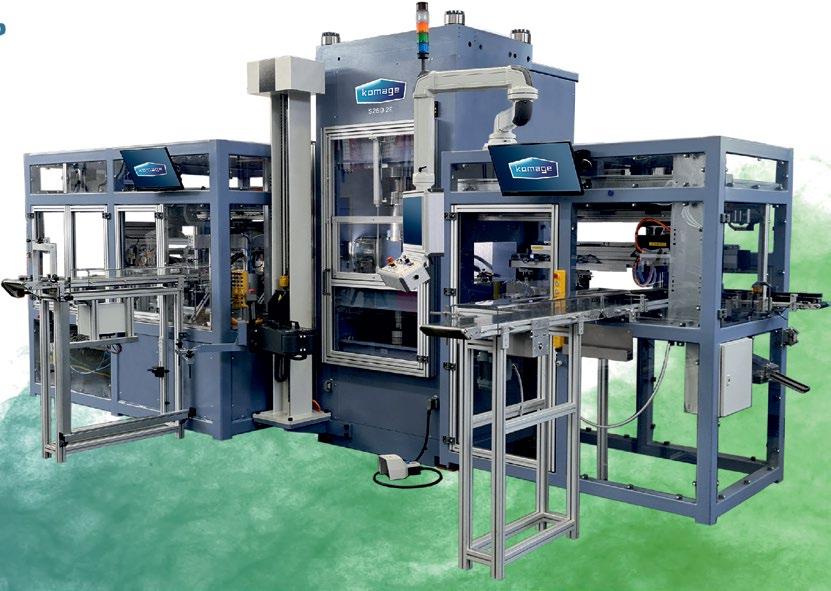
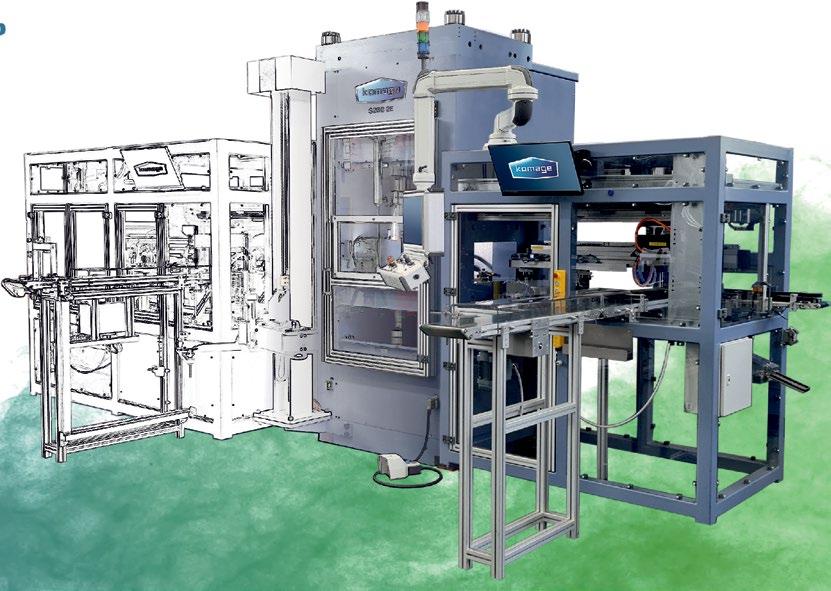

Volume Graphics helps evaluate product quality from CT and other NDT technologies
Volume Graphics GmbH, headquartered in Heidelberg, Germany, has released the latest version of its software suite developed to help users collaborate and evaluate product quality from CT and other Non-Destructive Testing (NDT) technologies.
The widespread digitisation of manufacturing is enabling companies to make products faster. As a result, the physical inspection of finished goods, based on CT and other industrial product-scanning technologies, has taken on even more importance, explains Volume Graphics. As the digital productdevelopment pathway has become increasingly sophisticated, simple scan-data-based, quality-assurance software may be key to its successful application in aerospace, automotive, electronic, medical, and other industries.
The newest release of Volume Graphics’ advanced non-destructive evaluation software suite is intended as a response to this easeof-use need. It features enhanced data interpretation, collaboration and presentation capabilities, enabling users to more easily refine, integrate and share their product-manufacturing-quality results and initiatives.
The underlying architecture of the suite (which includes VGSTUDIO MAX, VGSTUDIO, VGMETROLOGY, VGinLINE, and myVGL) harnesses algorithms developed over decades, incorporates greater automation, and now includes customised deeplearning tools. The latest updates enable even the non-expert user to quickly and effectively apply these powerful resources to quality evaluation throughout the product lifecycle – and collaborate with its experts in a common language.
Interactive reports and PNG format for easier sharing New in 2024.1 is a HTML report functionality that supports 3D interactive part or result views. Self-contained documents are now accessible with any Chromium-based browser like Edge or Chrome, so that analyses can be interactively viewed at any stage of the quality-assurance process
Along with this, a new userrequested PNG export functionality is available. When using PNG as a storage or data-exchange format, all images produced by Volume Graphics analyses can now be copied and pasted directly into almost any kind of media without the need for additional file conversions. This change
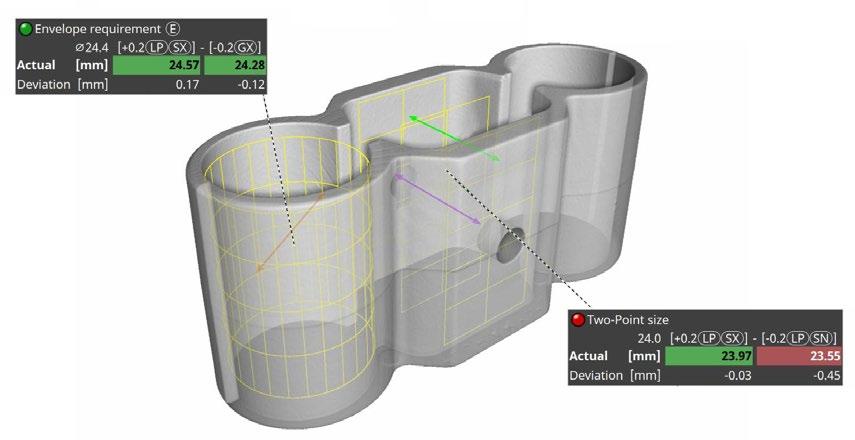
On-screen callouts of industry-standard abbreviations makes it easier to perform GD&T evaluations based on scan data to determine product quality (Courtesy Volume Graphics)

Porosity inclusion analysis results are colour-coded to show whether pores in a manufactured part are within industry tolerance standards (Courtesy Volume Graphics)
provides for more powerful visualisations, reports and presentations – and a faster workflow for importing or exporting volume data.
Linear sizes for metrology
Linear functionality is valuable for users concerned with geometric dimensioning and tolerancing (GD&T). The common abbreviations used to indicate linear sizes are now visually represented directly within report graphics. This simplifies standard conform measurements by providing direct support for modifier symbols – and enables easier evaluations for many size features such as two-point measurements (LP), envelope requirement €, and global modifier symbols like (GG).
PIA updates – of particular interest to the casting industry
Updates in Volume Graphics’ porosity inclusion analysis (PIA) capabilities make it easier for casters to meet industry-compliance requirements P 202 and P 203. Multiple regions of interest can be evaluated to determine whether they are in tolerance, or not – with instant, colour-coded viewing of tolerance states. www.volumegraphics.com
Navigation and Support
In a complex industry, we’ll guide you the entire way.
We’ve got one mission, to support as many metal part makers in the MIM and Metal AM industry as possible. Our team of processing experts utilize 20+ years of experience to share all our knowledge and help you overcome challenges, develop better processes and become successful part makers. We help develop real world, practical solutions based on many lessons learned along our journey. Being the ONLY debind and sinter service provider with full sized production equipment, we are honored that we have been able to support every industry currently utilizing MIM and Metal AM. DSH is the only source for the best process support, toll processing and educational resource for your MIM and Metal AM applications.
We offer:
Remote Process Engineering, Small/Large Toll Processing, R+D projects, Educational Support on Total Process Management.



Your Partner in MIM/AM
Swiss Steel Group offers range of metal powders for Additive Manufacturing
Swiss Steel Group, headquartered in Lucerne, Switzerland, has announced a range of gas atomised metal powders developed for the Additive Manufacturing industry. The company is offering powders based on iron, nickel and cobalt as part of its Printdur brand, as well as low-and medium-alloy steels under its Bainidur AM line. A range of nickelfree powders suited to use in medical applications is available under its Medidur AM range.
Iron-based metal powder
The company’s iron-based powders for Additive Manufacturing are divided into austenitic, age-hardenable and martensitic grades. The austenitic grade Printdur 4404 is reported to provide high corrosion resistance and good oxidation resistance. Printdur 4545 and Printdur 4548 are focused on the combination of wear, corrosion and oxidation properties. Printdur Powderfort, Printdur 2343 and Printdur 2344 are suitable choices for increased wear resistance.
Nickel-based metal powder
Nickel-based metal powders, suited for applications that require high
corrosion resistance, include Printdur Ni625. This alloy is said to offer good resistance to mineral acids such as nitric, phosphoric, sulphuric or hydrochloric acid, and is also corrosion-resistant to alkalis and organic acids. Furthermore, in the solution-annealed condition, the material has good resistance to hot gas corrosion and high creep rupture strength above 600°C.
Cobalt-based metal powder
Printdur CoCrF7 is a cobalt-based metal powder that can be used in both high-temperature applications and medical technology. Printdur CoCrF75 reports excellent resistance to thermal shock and is resistant to oxidising and reducing atmospheres up to approximately 1,150°C. Its properties also include very good biocompatibility and corrosion resistance.
Bainidur AM
The Bainidur AM line expands Swiss Steel Group’s portfolio of metal powders with low- and medium-alloy steels. These are intended to enable fast and efficient Additive Manufacturing of initial samples that also

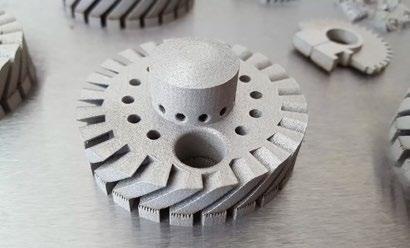
Swiss Steel Group offers a range of metal powders for Additive Manufacturing (Courtesy Swiss Steel Group)
exhibit the subsequent component properties. Heat treatment and thermochemical surface treatments can be tested and optimised with the same material as in series production.
This line also supports the production of spare parts for which the original forging die is no longer available, due, in part, to the good conversion behaviour in the bainite structure.
Medidur AM
The newly-developed material Medidur is an austenitic, patentpending steel powder for Additive Manufacturing. The use of manganese is said to eliminate the need for nickel. The material is non-magnetic, corrosion-resistant and offers high strength, making it advantageous for medical applications.
www.swisssteel-group.com
















































































































Amsted Automotive opens manufacturing facility to supply Asia’s automakers
Amsted Automotive has opened a new manufacturing facility in Nanjing, China. The facility will operate as Means Nanjing Automotive Components Ltd., and will produce driveline solutions for vehicles assembled in the Asian market. There will be capacity to produce one million controllable one-way clutches per year.
“Means Nanjing Automotive Components Ltd. provides our customers in the region better access to Amsted Automotive technology and excellence in manufacturing,” stated Jeremy Holt, President Amsted Automotive. “It will have the flexibility to produce products for a range of conventional, EV and HEV propulsion systems to support global automakers as market preferences and demand changes.”
The company was recently awarded Gold in the ‘Electric Vehicles – Overall Vehicle Technology of the Year’ category in the 2024 Automotive and Transportation Merit Awards. This was in recognition of the company’s Dynamic Controllable Clutch, an electro-mechanical eAxle disconnect system designed for electric vehicles. The part incorporates a PM notch plate and pocket plate.
www.amstedauto.com
SAP Parts adds new compaction press
SAP Parts, Maharashtra, India, has installed a new compaction press at its sintering plant. The new press, with three lower punches and two upper punches, is expected to provide a more consistent and efficient compaction process, whilst increasing production capacity at the facility.
Primarily a manufacturer of mechanical face seals, SAP Parts has several business segments including the supply of precision steel bushings, bearings and Powder Metallurgy sintered components. In addition to its main facility in India, the company has operations in Europe and North America.
www.sapparts.com
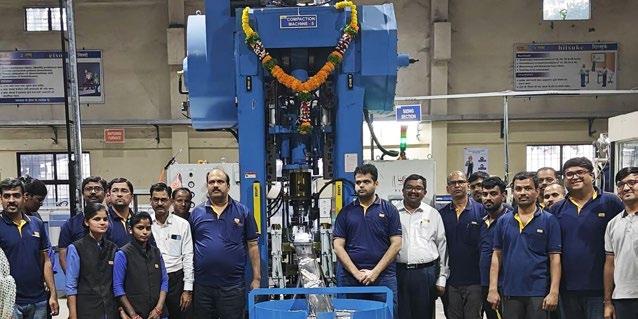
SAP Parts has installed a new metal powder press at its sintering facility near Pune (Courtesy SAP Parts)
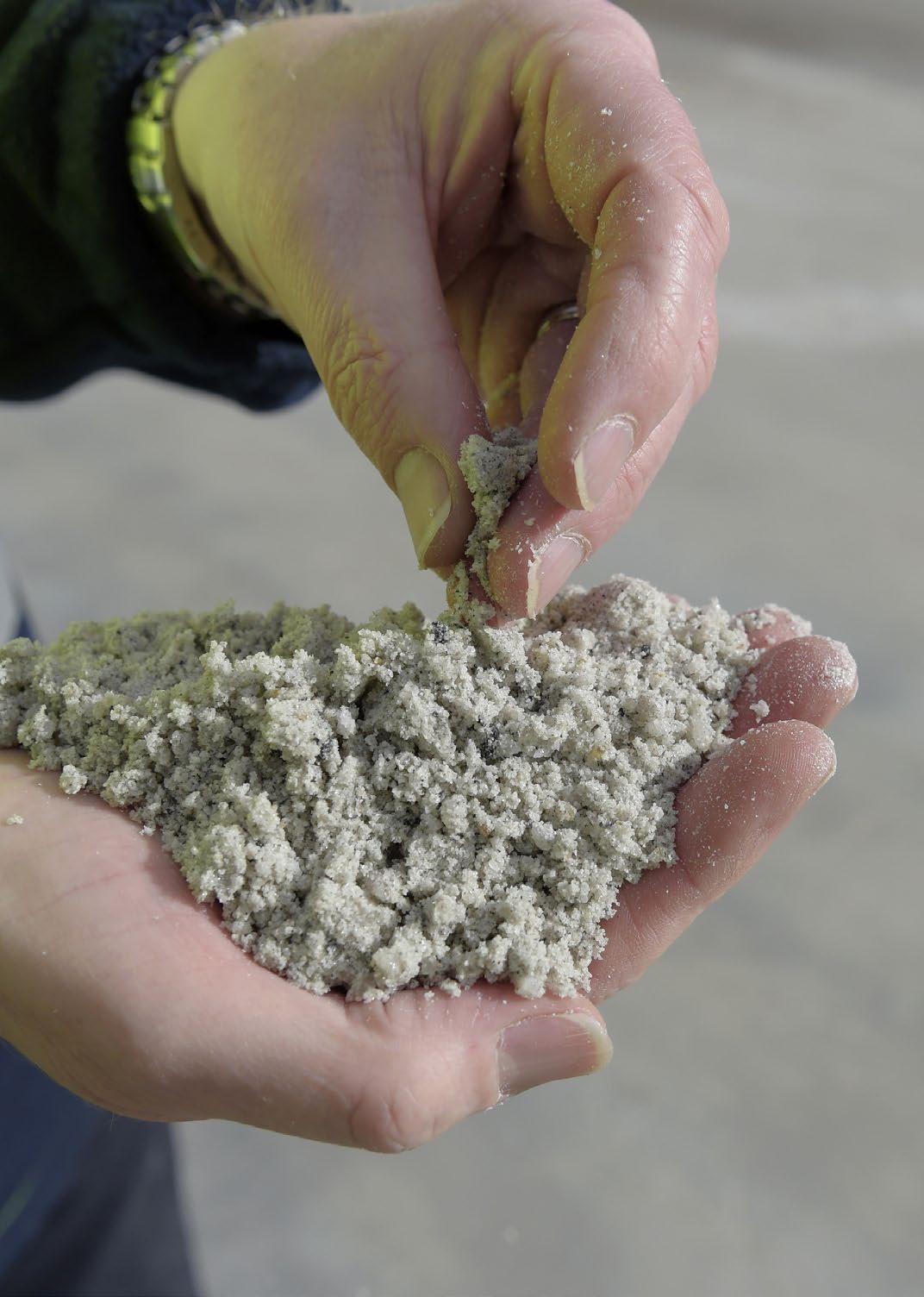
GEA provides multiple technologies for all major lithium process steps, including evaporative concentration, precipitation, crystallization, purification, separation and drying. From concentrated brine to superior spray-dried battery material and its recycling, GEA has you covered.

Download our catalog: Solutions for Lithium Processing.
Sacmi showcases new solutions for Powder Metallurgy sector at ceramitec
Sacmi Group, based in Imola, Italy, showcased its latest technologies for the Powder Metallurgy, hardmetals and ceramic industries at this year’s ceramitec 2024 in Munich, Germany April 9-12. The company explained that changes in the Powder Metallurgy market over the past few
years, mainly related to vehicle electrification, have required new technologies and new components. This has given Sacmi the chance to re-enter the market, leading to the creation of new solutions targeted to help customers tackle emerging production challenges.

Sacmi has re-entered the market with new solutions to help customers tackle emerging production challenges (Courtesy Sacmi)
PyroGenesis to supply Spanish aerospace company with titanium powder
PyroGenesis Canada Inc, Montreal, Quebec, Canada, has announced the signing of an initial contract with an aerospace company in Spain for the supply of titanium metal powder for use in Additive Manufacturing. The unnamed client is reported to be engaged in the development of advanced aeronautics technologies for the European aerospace industry.
The order, for PyroGenesis’ titanium metal powder with a particle size range of 15-63 µm, has already been produced using the company’s NexGen plasma atomisation system. The powder cut range is ideally suited for laser bed Additive Manufacturing methods, including Laser Beam Powder Bed Fusion (PBF-LB).
“This contract represents our initial commercial metal powder order from a European client, a
significant milestone under our new direct distribution strategy. This powder is primarily utilised in laser bed applications within the Additive Manufacturing industry. We are experiencing an increase in activity from Europe and are currently engaging with additional European clients interested in acquiring our titanium powder for their Additive Manufacturing needs,” said Massimo Dattilo, Vice President of PyroGenesis Additive.
The contract was made possible as a result of recent changes to the company’s European metal powder distribution strategy, whereby the company and Aubert & Duval mutually agreed to end their distribution agreement.
“As many of our long-time investors will know, over the past several
Sacmi’s Advanced Technologies Business Unit has focused on multiple solutions, all of which were presented at the show. The Helical Gear system seen at the last ceramitec event has been improved and can now produce gears with angles of up to 45°. Sacmi has also developed a Die Wall Lubrication system that allows high-density parts (up to 7.71 g/cm 3) by compacting zerolubricant powders.
Sacmi reported that a further highlight was a preview of the latest energy-saving press, which, thanks to the adoption of closedloop hydraulic systems, can reduce energy consumption by up to 50% during the pressing cycle. This result is achieved while maintaining the efficiency and speed of standard Sacmi presses. It is applicable to the entire Powder Metallurgy press range and existing presses installed on customers’ premises, letting them reduce operating costs significantly.
www.sacmi.com
years we designed, then readied, our new NexGen plasma atomisation process with a goal to produce the highest quality metal powders in the Additive Manufacturing industry. As commercialisation progresses and initial orders are received, our strategic initiatives continue to advance as well. We are gaining valuable experience in producing powders that cater to a variety of Additive Manufacturing applications including, but not limited to, laser bed, electron beam, Binder Jetting, and direct energy deposition technologies,” stated P Peter Pascali, president and CEO of PyroGenesis. “By ending our distribution agreement with Aubert & Duval, we have essentially eliminated the middleman, thereby essentially reducing costs to the end user. As can be seen from the announcement today we are now successfully selling directly to European-based clients.”
www.pyrogenesis.com

GF Machining Solutions opens Center of Competence in Singapore
GF Machining Solutions, headquartered in Biel, Switzerland, has opened a new Center of Competence in Singapore. The ceremony was attended by 120 customers and partners, along with the GF Machining Solutions management team for South East Asia.
The new Center of Competence displays an array of equipment, including laser, milling and EDM machines such as the LASER S 1000 U, LASER P 400, MILL E 700 U, MILL P 500, CUT F 350, FORM P 350 and FORM P 450, as well as System 3R tools, Service + Success displays, a quality control testing room and various market segment cut parts. It also features a seminar room with a capacity of eighty people to host both customer and internal events. The centre offers the opportunity to carry out live testing, seminars, and training.
“The new Center of Competence is of strategic importance as Singapore serves as a technological benchmark for some of the developing SEA countries,” explained Scott Fosdick, Vice President and Head of Global Sales at GF Machining Solutions, at the ceremony.
The event included a tour of the facility, giving attendees a firsthand look at the innovative solutions and advanced technologies on display. “The solutions we develop are designed to give you,
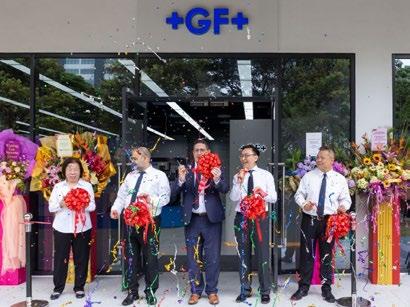
GF Machining Solutions has inaugurated its new Center of Competence in Singapore (Courtesy GF Machining Solutions)
our customers, a real competitive advantage in the market,” added Fosdick. “Our mindset means that we work closely with you, we try to understand your pains that you are experiencing each and every
LE-237iR 2024-1a.ps
T:\MISC\ADS\LE-237\LE-237iR 2024-1a.cdr Tuesday, March 5, 2024 11:22:49 AM Color profile: Disabled
day in your workplaces, and we try to overcome the challenges and support you in every stage.”
This opening is seen as a significant milestone for GF Machining Solutions as it expands its presence in Asia-Pacific, solidifying its commitment to supporting regional and global customers. www.gfms.com

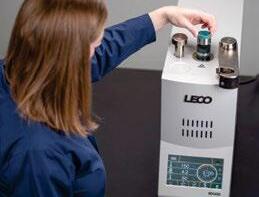


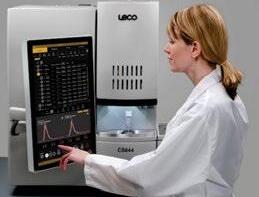




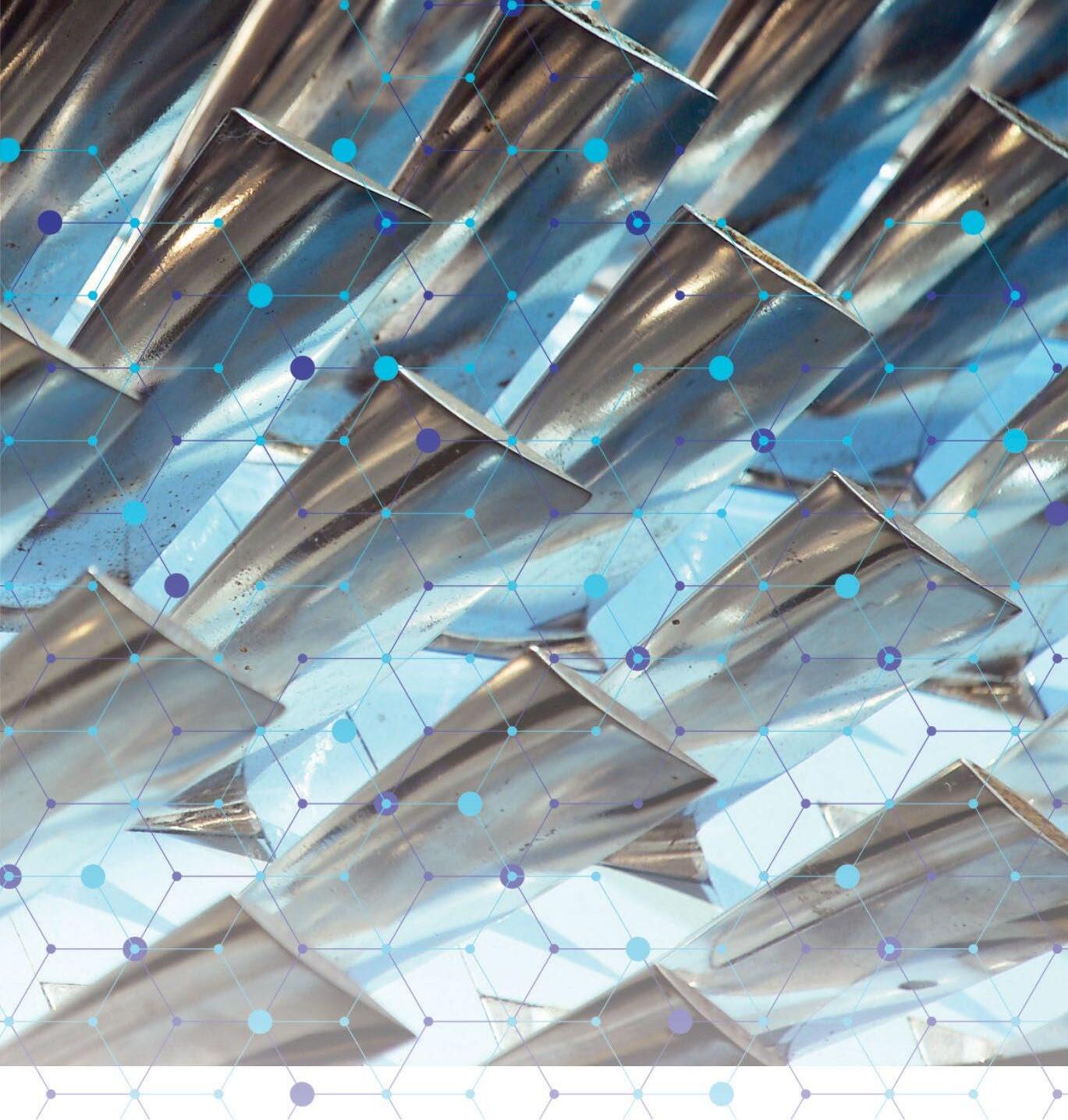

Ionic Rare Earths launches full-scale production of recycled magnet rare earth oxides at Belfast facility
Ionic Rare Earths Limited, headquartered in Melbourne, Australia, has announced that continuous production of high-purity, recycled magnet rare earth oxides (REOs) has commenced at scale at the Demonstration Plant of Ionic Technologies International Ltd’s Belfast, Northern Ireland, UK, facility.
Ionic Technologies recycles Neodymium-Iron-Boron (NdFeB) permanent magnets to high purity separated magnet rare earth oxides (REOs) – enabling the creation of sustainable, traceable, and sovereign rare earth supply chains.
Ionic Technologies is now a producer of a suite of magnet REOs, including neodymium oxide (Nd 2O 3) didymium oxide (NdPr oxide), dysprosium oxide (Dy 2O 3) and terbium oxide (Tb 4O 7) and is the first to produce such high-quality REO products in the UK.
Ionic Rare Earths’ Managing Director, Tim Harrison, commented, “Our Belfast facility is key to us harnessing our technology to accelerate our mining, refining and recycling of magnets and heavy rare earths which are critical for the energy transition, advanced manufacturing, and defence.”
“The commercialisation of our recycling technology is moving rapidly, and the Board of IonicRE is pleased to announce that Demonstration scale production of NdPr oxides have commenced. It is an important milestone, which exhibits our readiness to supply recycled magnet REOs into the market,” Harrison continued. “Our supply chain partners have expressed significant interest in procuring REOs from secondary sources, and with this milestone, we are confident in delivering a full schedule of
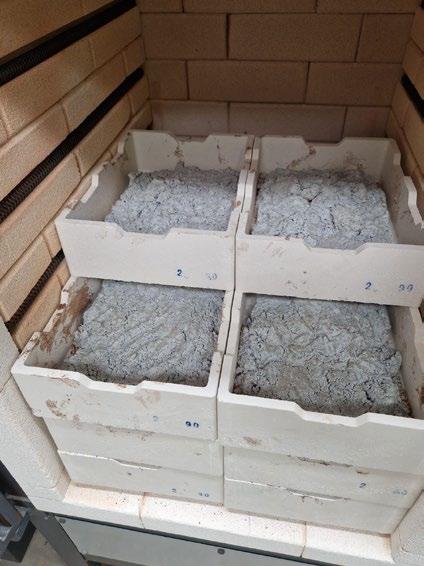

First NdPr oxide (>99.8% grade) production achieved from continuous operations at Ionic Technologies’ Belfast Demonstration Plant (Courtesy Ionic Rare Earths)
magnet recycling campaigns through to mid-2025.”
The Belfast facility is expected to receive a steady supply in magnets to be recycled from sources such as swarf from existing manufacturers of metals alloys and magnets, plus endof-life turbines from grid-scale wind farms, and magnets and components from used electric vehicles (EVs) and other industries.
Harrison explained, “Demand for material of recycled origin is accelerating to align with global policy priorities and off-taker objectives in order to enter these markets. This is being driven by global policy such
as the European Union Critical Raw Materials Act and the US Inflation Reduction Act.
“IonicRE aims to progress the technology with the deployment of modular recycling initiatives in western markets looking to develop domestic, secure, and sustainable supply chains to address strategic supply and sovereign security, placing IonicRE at the epicentre of rare earth element recycling,” he added.
Continuous production achieved Ionic Technologies commenced operations processing an end of life (EOL)


permanent magnet from a decommissioned wind turbine generator. The permanent magnet composition included 26.7% neodymium (Nd), 5.4% praseodymium (Pr), 1.0% dysprosium (Dy) and 1.4% holmium (Ho).
Following the completion of process commissioning, Ionic Technologies has successfully separated NdPr from heavy rare earth elements (REE) DyHo which will undergo further separation to produce high purity Dy 2O 3 and Ho 2O 3 product.
The first production from continuous Demonstration Plant activity has produced approximately 11.5 kg of NdPr oxide grading greater than 99.8% NdPr oxide (total REO content of 99.99%). The production of NdPr oxide at Demonstration Scale follows previous successful production of maiden Nd 2O 3 grading 99.7% and Dy 2O 3 grading 99.8%, and Tb 4O 7 grading > 99.5%.
Initial production of NdPr oxide –and subsequent Dy 2O 3 and Tb 4O 7 to
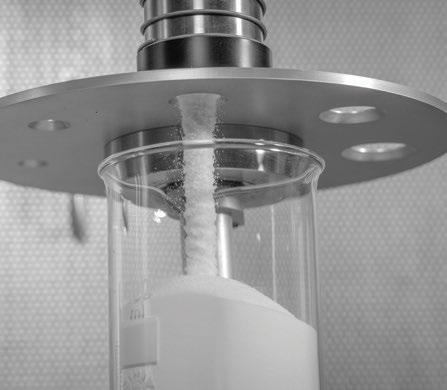
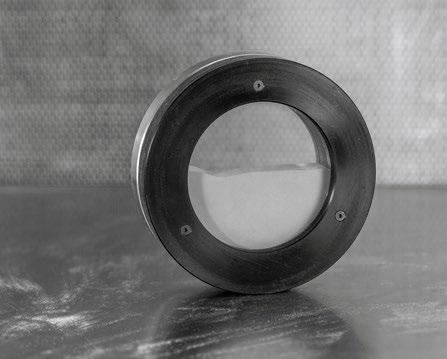
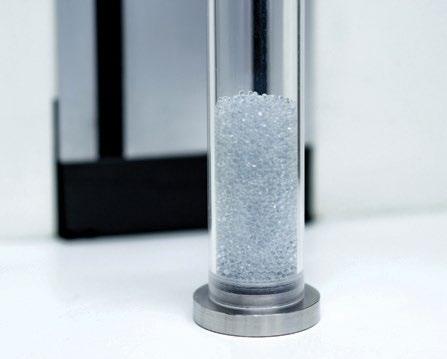
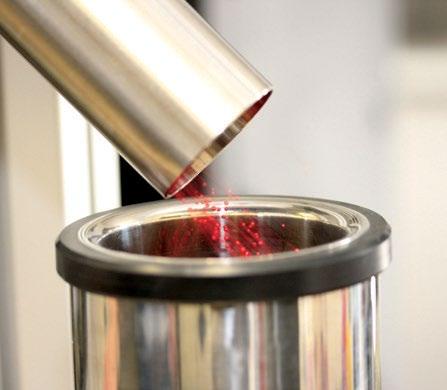

be produced – supports Rare Earths Limited’s collaboration with partners Less Common Metals (LCM) and Ford Technologies. Ionic Technologies will supply REOs to LCM, who will produce alloys for magnet production to be developed in Europe, with
the sintered magnets to be supplied to Ford Technologies in Halewood, UK, to produce electric motors for evaluation, demonstrating a UK magnet rare earth supply chain as part of a UK government-sponsored CLIMATES initiative.




Following the successful commissioning and first continuous production from the Demonstration Plant, Ionic Technologies is now entering late-stage negotiations in relation to strategically significant production campaigns, with a view to progressing towards commercial agreements to roll the technology out to western end users.
The continuous Demonstration Plant will also support the completion of a feasibility study into a commercial scale facility, expected by mid-2024.
Based upon magnet recycling progress, and given the footprint being established in the UK and Europe, the company has also initiated investigating opportunities to advance UK and EU investment market presence, where sentiment and support from the UK government has been very strong.
The production of REOs and Ionic Technology
Ionic Technologies is a 100% owned subsidiary of IonicRE, based in Belfast UK, which the company acquired in H1 2022. Ionic Technologies has developed rare earth element separation and refining technology and applied this to the recycling of spent permanent Neodymium-Iron-Boron (NdFeB) magnets.
The process uses a hydrometallurgical process to extract the rare earth elements, then separate the individual magnet REEs within – Nd, Pr, Dy and Tb – and finally refine to high purity individual magnet rare earths oxides.
In September 2022, IonicTech was awarded a grant of £1.72 million (approximately AUS $2.9 million) from the UK government’s Innovate UK Automotive Transformation Fund Scale-up Readiness Validation (SuRV) programme. This is said to be a significant step towards securing the UK supply of critical rare earth metals for EV manufacture.
In September 2023, Ionic Technologies announced that it had successfully secured addi -

Separation circuit showing extraction gradient advancing to the right with DyHo (orange organic) being extracted from NdPr rich feed stream (pink) (Courtesy Ionic Rare Earths)
tional funding for two Innovate UK CLIMATES grants totalling £2 million (AUS $3.9 million). The successful grant funding submissions centred on two CLIMATES projects:
1. In partnership with LCM and Ford Technologies, Ionic Technologies will develop a traceable, circular supply chain of rare earths for application in EV motors within the UK
2. In partnership with the British Geological Survey, Ionic Technologies has commenced a feasibility study for a commercial magnet recycling plant in Belfast, UK
The magnet recycling Demonstration Plant will provide the data for the development of commercial facilities.
The Ionic Technologies magnet recycling process is agnostic on magnet quality, can process oxidised magnets, and can also manage coatings and films, to produce individually separated and refined high purity REOs.
Technology overview
Since its founding in 2015, as a spinout from Queens University Belfast (QUB), Ionic Technologies has developed processes for the separation and recovery of REEs from
mining ore concentrates and waste permanent magnets.
The technology developed is a step up in efficient, non-hazardous, and economically viable processing with minimal environmental footprint. Ionic Technologies has demonstrated capability for REEs to achieve near complete extraction of REOs from lower quality spent magnets and waste (swarf) to a recovery of high value REO product quality exceeding 99.9% REO.
Ionic Technologies now has ‘first mover’ advantage in the industrial elemental extraction of separated REOs from spent magnets and waste, enabling near-term magnet REO production capability to satisfy growing demand from the energy transition, advanced manufacturing, and defence.
Ionic Technologies’ proprietary technology provides a universal method for the recovery of high purity grade rare earth elements from lower quality and variable grade magnets, to be used in the manufacture of modern highperformance and high specification permanent magnets required to support substantial growth in both electric vehicle and wind turbine deployment.
www.ionicre.com www.ionictechnologies.com

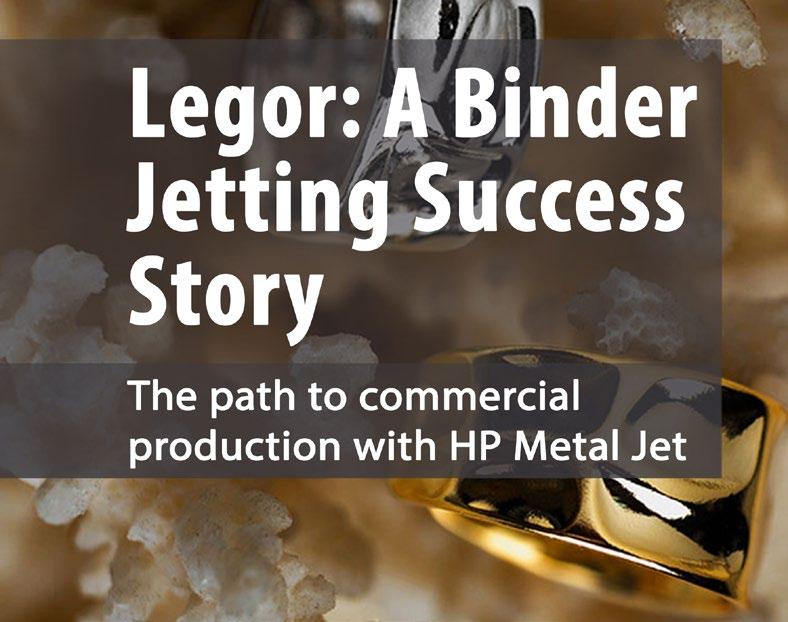
Discover how Legor Jewellery has leveraged HP 3D Metal Jet technology to revolutionise its production process WEBINAR-ON-DEMAND

Fabio Di Falco
Alejandra de la Hija
Marketing Manager, Legor Group Applications Engineer, HP




www.metal-am.com/ webinar-legor-a-binder-jettingsuccess-story-with-hp-metal-jet/
AM 4 AM improves mechanical properties of HiperAL aluminium alloy powder
AM 4 AM, a producer of advanced metal powders for Additive Manufacturing based in Foetz, Luxembourg, has announced further improvements in the mechanical properties of its HiperAL aluminium alloy.
HiperAL is a zirconium derivative of a 7000 series aluminium powder produced by AM 4 AM’s patented cold plasma treatment. The enhanced mechanical properties reached 525 MPa in yield strength and 550 MPa in UTS. The improvement is said to represent a breakthrough, resulting from extensive research and development collaboration with the company’s partner, Pint, headquartered in Metz, France.
“We are thrilled to unveil the enhanced mechanical properties of our HiperAL aluminium alloy,” stated Maxime Delmée, CEO at AM 4 AM. “This achievement underscores our unwavering dedication to innovation and continuous improvement. It is not one small step ahead in the quest of the aluminium with the highest mechanical properties, it represents for our customers a giant leap for economically viable applications of aluminium in AM. With HiperAL, we are empowering our customers to elevate the performance of their aluminium parts and reduce costs like never before.”
www.am-4-am.com
Ipsen introduces Ipsen Connect digital gateway
Ipsen, headquartered in Cherry Valley, Illinois, USA, has announced its new digital gateway, Ipsen Connect. The customer service portal is intended to simplify access to essential resources, including order history, service requests, and furnace documentation.
Ipsen Connect will enable users to request or reorder parts, schedule maintenance, troubleshoot, and arrange calibration appointments. The portal also provides access to troubleshooting guides, online training videos, and answers to frequently asked questions.
Ipsen stated that its Digital Technologies team worked with internal and external stakeholders over several years, leveraging insights to develop and evaluate the portal before its launch.
“By aligning our digital initiatives with our customers’ needs, our goal is to provide cutting-edge solutions that enhance efficiency, productivity, and customer satisfaction,” stated Aymeric Goldsteinas, Ipsen’s Vice President of Digital Technologies.
Following a beta test with forty customers, Ipsen Connect is now available to all existing US customers with vacuum furnace equipment. The service doesn’t require any software installation and can be accessed through any internetconnected PC or mobile browser.
www.ipsenglobal.com
Sandvik launches Osprey C18150 CuCrZr for high-temperature applications
Sweden’s Sandvik AB has launched Osprey C18150, a copper-based metal powder tailored for applications which require increased mechanical strength at high temperatures, whilst maintaining high electrical and thermal conductivity. These attributes are said to make the powder suitable for electrical, electronic and thermal transfer components in a variety of industries such as aerospace and automotive.
Osprey C18150 (CuCrZr) is a copper-based alloy that contains small amounts of chromium and zirconium to balance copper’s high conductivity and heat dissipation capabilities. Thanks to the precipitation of Cr- and Zr-rich particles upon ageing, this balance persists even at elevated temperatures. It
can withstand service temperatures up to 500°C. The alloy has been developed as fine powder for Metal Injection Moulding (MIM) and Binder Jetting (BJT) using Osprey High Yield Technology, but also as a coarser powder for Laser Beam Powder Bed Fusion (PBF-LB) and Directed Energy Deposition (DED).
“Our metal powder portfolio continues to grow, and we are very excited about our latest addition, Osprey C18150,” stated Dr Eleonora Bettini, Customer Application Specialist for Metal Powder at Sandvik. “With our wide range of Osprey C18150 powders, with customised properties and particle size distributions, manufacturers from a variety of industries can enjoy the many benefits that this material has to offer.”

Sandvik’s Osprey C18150 (CuCrZr) powder is available for AM and MIM (Courtesy Sandvik)
Osprey C18150 is manufactured by inert gas atomisation, said to produce a powder with a spherical morphology and providing good flow characteristics and high packing density. The powder has been tested and qualified with in different industries and for different applications.
Available via the Osprey Online webshop in Europe and through KBM Advanced Materials in the US, Osprey C18150 is also available in other fractions and for other manufacturing technologies from Sandvik. www.metalpowder.sandvik

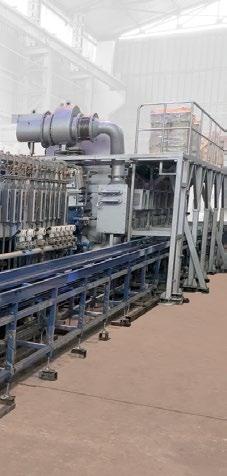
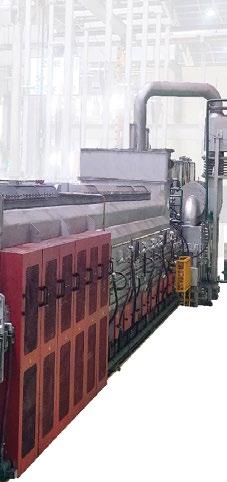



Ipsen celebrates 75th anniversary with record revenue and growth
Ipsen, headquartered in Cherry Valley, Illinois, USA, celebrated its seventy-fifth anniversary in 2023. In this milestone year, the company also achieved several significant accomplishments, including record
revenue and substantial growth. During the year, Ipsen shipped more than fifty vacuum furnaces to customers across ten countries, demonstrating its international reach across a diverse user base. Ipsen
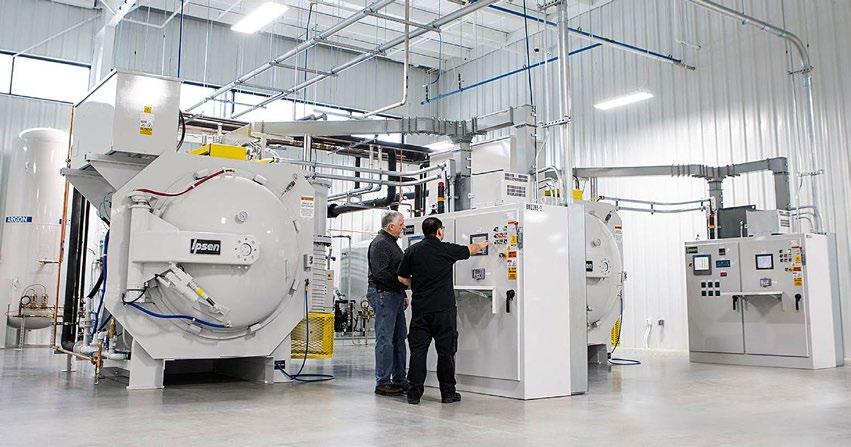
Ipsen celebrated its 75th anniversary with a year of record revenue and growth (Courtesy Ipsen)
Ames National Laboratory and partners to launch critical materials research facility
Ames National Laboratory, Iowa, USA, is partnering with eight other DOE National Laboratories to support the Critical Materials Supply Chain Research Facility, recently announced by the US Department of Energy’s (DOE) Office of Fossil Energy and Carbon Management. Ames Lab will lead the Critical Materials Refinery Center, one of four centres to be established in the facility.
The Minerals to Materials Supply Chain Research Facility (METALLIC) will be led by the National Energy Technology Laboratory (NETL). Together, they will focus on ensuring the resilient, diverse, and secure domestic supply of critical minerals and materials.
Critical materials are essential ingredients in many clean-energy, defence, transportation, and commercial technologies, and include rare
earth metals, lithium, cobalt, and others. High demand, lack of domestic sources and processing, and geopolitical instability can disrupt material supply chains.
Ames National Laboratory’s global reputation in rare earth science, highpurity metal and alloy refining, and critical materials research, coupled with its strong tradition of translating lab-scale discovery science to commercial adoption makes the Lab well-suited to support the mission of METALLIC, said Tom Lograsso, the director of Ames Lab’s Critical Materials Innovation Hub (CMI), which accelerates the innovation of technological solutions to critical materials supply challenges.
“Our recognised research strengths and successful track record in commercialising new technologies at Ames Lab make us valuable partners in METALLIC,” stated Lograsso.
also reported exceptional performance in the aftermarket sector, where it achieved a 38% increase in replacement hot zone orders for both Ipsen and non-Ipsen furnaces compared to its previous record year.
Due to the increasing demand, Ipsen repurposed its former ceramics facility to expand hot zone production capacity.
Additionally, Ipsen completed ISO/IEC 17025:2017 accreditation for pyrometry services, ensuring its adherence to the highest industry standards. Ipsen also conducted calibration and temperature uniformity surveys costing over $1 million.
Recognising the growing service needs of the industry, Ipsen made significant investments in its workforce during the year. The company hired over sixty new employees in 2023 and established a dedicated team for recruiting and training field service engineers in order to further grow its service presence.
www.ipsenglobal.com
“We will be combining our decades of expertise with new capabilities so that we can collaborate and innovate with METALLIC partners to address current and emerging critical materials supply challenges.”
Ames National Laboratory will support METALLIC by standing up new facilities that support mid-scale refining, separations technologies, and advanced alloy processing.
“The Critical Materials Refinery Center will create a national resource that provides key solutions to critical material supply challenges,” said Ryan Ott, who will be the Critical Materials Refinery Center lead. “These powerful new capabilities will allow us to work with partners across the nation to bridge mid-scale processing to commercial adoption of new refining technologies needed to support critical materials supply chains.”
The importance of critical materials to economic and national security requires accelerating discovery-todeployment, which has long been the hallmark of Ames Laboratory research, said Ott. www.ameslab.gov
Used carbide tools recycling programme wins Sandvik’s Sigrid Göransson sustainability award
At Sandvik’s Annual General Meeting, this year’s ‘Sandvik Sustainability Award in Memory of Sigrid Göransson’ was presented to a team from Sandvik Machining Solutions. The winners have developed a digitalised tool recycling programme for customers that is said to have substantially reduced waste.
By working closely with customers, the team further developed the long-established buy-back programmes to retrieve used carbide tools and recycle them into new products.
Aiming to retrieve over 90% of sold carbide volumes, the team developed a digitalised solution offering several benefits. Through a self-service portal, the recycling process has been simplified and allows customers to see how much the sale has contributed to CO 2 reductions and how much material it has sent. It has also increased traceability for Sandvik.
Maria Alexandersson, Customer Recycling Program Manager, stated, “We developed a self-service portal where the customer, with a few clicks, gets the weight and price. We come and get the material and then ship it to Wolfram in Austria where they recycle the material.”

The advantages are numerous. The entire process is much simpler for the customer and the process is faster.
The Sandvik Sustainability Award in Memory of Sigrid Göransson was presented to Eva Kyriakopoulou, Sigrid Surkamp, Maria Alexandersson, Antonia Dåderman and Malvina Roci by Stefan Widing, president and CEO. Antonia Dåderman participated in the award ceremony on behalf of Jill Glynn who was unable to attend. Kathrin Lampel was also not able to attend.
The Sandvik Sustainability award in memory of Sigrid Göransson
Sigrid Göransson was the granddaughter of Göran Fredrik Göransson, founder of Sandvik and daughter of Anders Henrik Göransson, CEO of Sandvik. Sigrid worked to make the company focus on social responsibility and improved working conditions at a time when that was rare.
In the name of Sigrid Göransson, Sandvik has launched an annual sustainability award to celebrate the best innovations within the company. It is an internal award praising the company’s heritage of sustainability and community involvement. The prize goes to a solution that has had a measurable and lasting impact on environmental, economic or social sustainability at Sandvik or in local communities. www.home.sandvik
LARGE SCALE SINTERING OF PM PARTS
SUBSTITUTE TO ATMOSPHERIC MESH BELT FURNACES
PRE SINTERING PARTS HANDLING
DEBINDING - SINTERINGVACUUM CARBURIZING & QUENCHING IN A SINGLE MACHINE
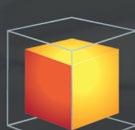
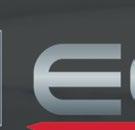



Researchers use Laser Beam Powder Bed Fusion on commercial metal powders to fabricate high-entropy alloys
In a paper titled ‘Laser Powder Bed Fusion Processing of Low Cost CoCrFeNiMoxNby High Entropy Alloys with Promising High-Temperature Properties via In Situ Alloying Commercial Powders,’ authors S Venkatesh Kumaran and José Manuel Torralba, IMDEA Materials Institute, Madrid, Spain, present a new approach to the development of high-entropy alloys (HEAs). The method uses Laser Beam Powder Bed Fusion (PBF-LB) and in-situ alloying of readily available commercial powders.
HEAs have gained significant attention in recent years due to their unique microstructures and exceptional mechanical properties. However, the traditional methods of manufacturing HEAs, such as casting or arc melting, can be expensive and time-consuming, especially when dealing with alloys composed of multiple principal elements. Additionally, the use of critical raw

Arcast Atomizers are custom built and competitively priced to meet the growing demand to produce high quality, low cost, technically advanced metal powders fulfilling the requirements of today’s pioneering manufacturing processes.
We can supply machines to atomize titanium alloys, super alloys, refractory and reactive metals, and ferrous and non-ferrous alloys in high vacuum purged vessels with inert gas replacement atmospheres.
We have installed machines all over the world, from 1 kg research furnaces to 1000 kg production units.

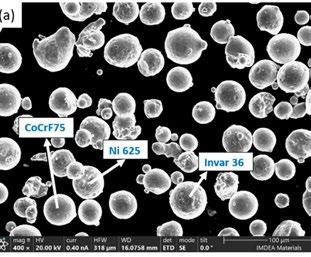
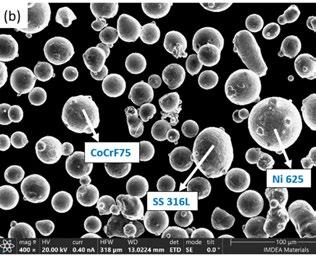
SEM image of (a) C1 and (b) C2 mix of powders (From paper ’Laser Powder Bed Fusion Processing of Low Cost CoCrFeNiMoxNby High Entropy Alloys with Promising High-Temperature Properties via In Situ Alloying Commercial Powders’, Metals, 2024)
metals in the production process raises concerns about their availability and sustainability.
To address these challenges, the authors proposed a novel method that utilises commercial powders instead of pure elemental powders for the fabrication of HEAs. By blending commercial powders – including Ni625, CoCrF75, and 316L – the authors were able to reduce the cost of raw materials while maintaining the desired alloy composition. This approach offers a more cost-effective solution and also opens up the possibility of using scrap and recycled materials for HEA development, promoting sustainable manufacturing practices.
The authors conducted their experiments using PBF-LB Additive Manufacturing and optimised the process parameters to achieve high-density samples with minimal porosity. The resulting HEAs, labelled as C1 and C2, exhibited a single face-centred cubic (FCC) phase, which is known for its excellent mechanical properties. The incorporation of high atomic size elements, such as molybdenum (Mo) and niobium (Nb), enhanced the strength of the alloys without compromising their ductility.
Tensile tests were performed on the fabricated samples at room temperature and elevated temperatures ranging from 700-900°C. The results showed that the mechanical properties of the developed HEAs surpassed those reported in existing literature on HEAs. The presence of Mo and Nb-rich precipitates at elevated temperatures contributed to the remarkable strength of the alloys. These precipitates, when distributed throughout the matrix, enhanced the strength without compromising elongation.
The authors emphasise that their work is not only a feasibility study but also a step towards the development of cost-effective HEAs using PBF-LB. By utilising readily available and cheaper commercial powders, the exploration of new HEAs should become more accessible. Furthermore, this approach is intended to reduce the reliance on critical raw metals, thus improving the efficiency and sustainability of the manufacturing process.
www.materials.imdea.org

Höganäs aims to lead the industry in reducing the climate impact
Sweden’s Höganäs AB has released its Sustainability Report for 2023, highlighting the progress made by the company as well as ongoing challenges and achievements, particularly in addressing climate change.
During the 28th annual United Nations climate meeting (COP28), which took place in Dubai towards the end of 2023, countries reaffirmed their commitments to the Paris Agreement and, for the first time, agreed to ‘transition away from fossil fuels,’ emphasising the inevitable shift toward net-zero emissions in industry, technology and society. Höganäs’ strategy is aligned with this global direction.
“Our end customers in the automotive industry are setting ambitious scope 1, 2 and 3 emission targets
and so are we,” stated Henrik Ager, Group President and CEO. “We aim to lead the industry in reducing the climate impact of metal components to further improve the competitiveness of Höganäs’ metal powders.”
Höganäs is reportedly working towards achieving net-zero in its own operations by 2030 and throughout its value chain by 2037. In line with this, several advancements have been made during the year.
“I am particularly proud that we have reduced our scope 1 and 2 carbon dioxide emissions by 46% since 2018. It is encouraging to see the positive effect of all mitigating activities done so far. In 2023, we also achieved our goal of purchasing only fossil fuel-free or renewable electricity for all our facilities around the world,” said Catharina
Nordeman, Vice President Group Sustainability.
Höganäs believes that zero-emission products like electric vehicles, are compromised if they are made using materials from highly emitting processes.
“That is why we are developing new products for applications that support the climate transition, such as electric vehicles, as well as following our climate roadmap that will take us to net-zero in our own operations by 2030 and in our valuechain by 2037,” stated Nordeman.
In the report, Höganäs highlighted that it is the first metal powder supplier to have its net-zero targets validated by the Science Based Targets Initiative and it has seen a 46% decrease in total carbon dioxide emissions (scope 1 and 2) since 2018.
The full Sustainability Report is available on the company’s website. www.hoganas.com
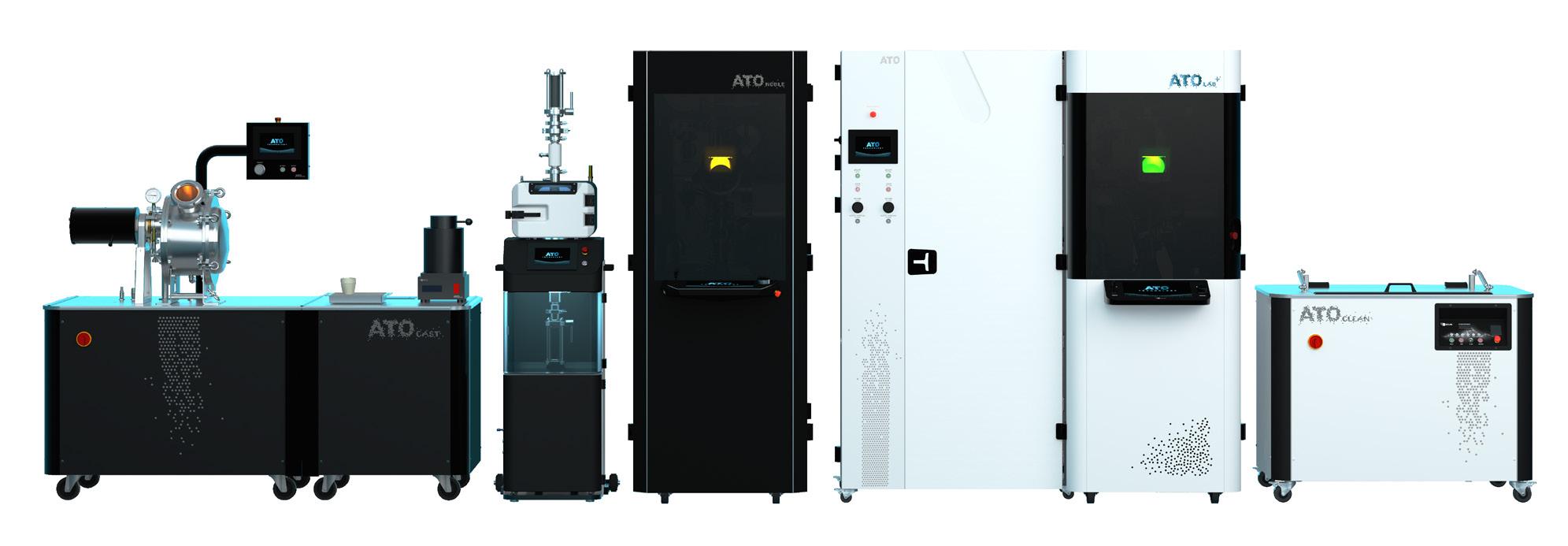


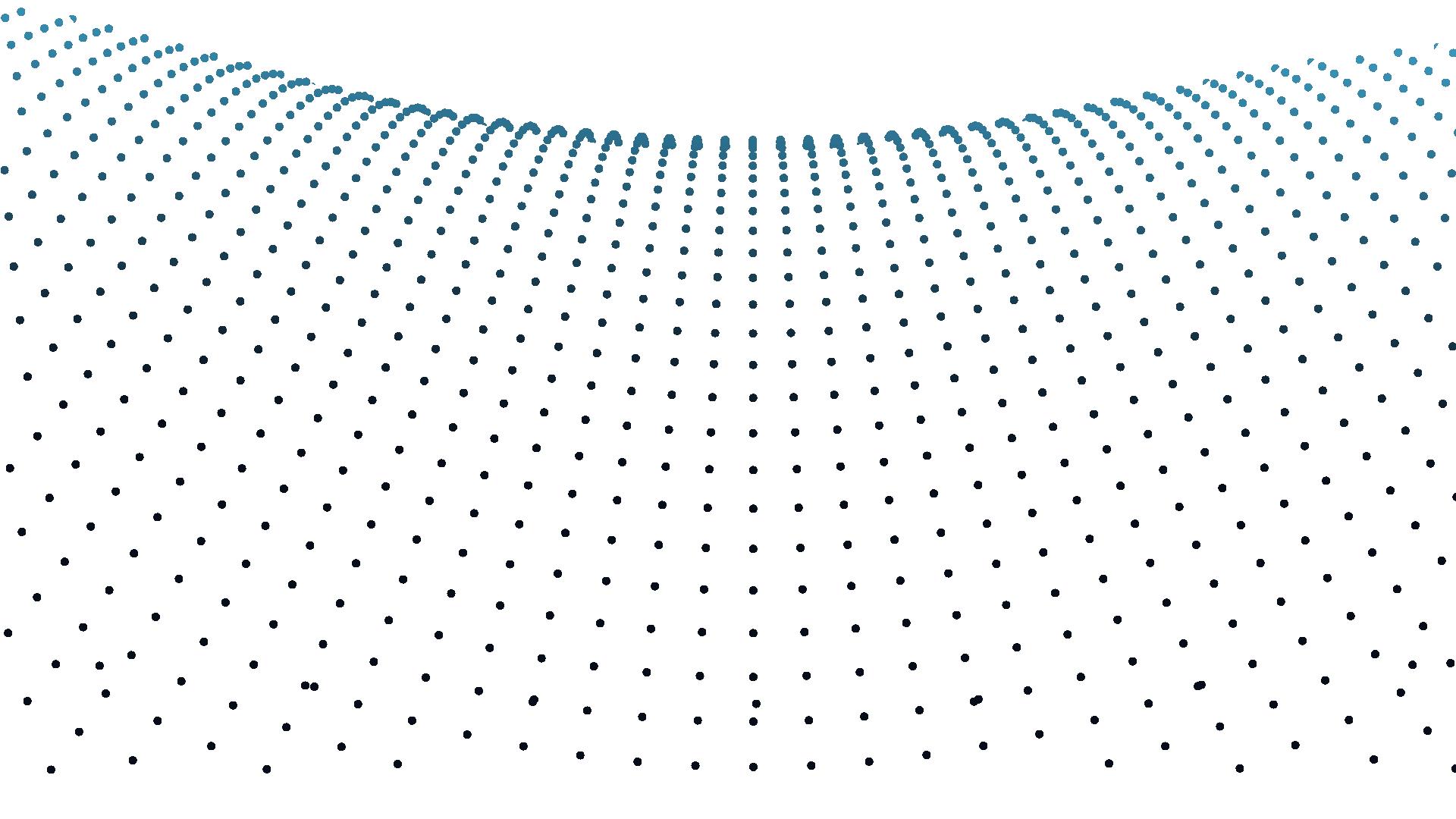
JUNE 16–19 • PITTSBURGH
Americas’ Leading Conferences on Powder Metallurgy and Metal Additive Manufacturing are Coming to the Steel City!

PM, MIM, and Metal AM Tutorials

Carbide Technical Track

Daily Light Registration

Keynote Speaker: Damon West—
“Be the Coffee Bean”
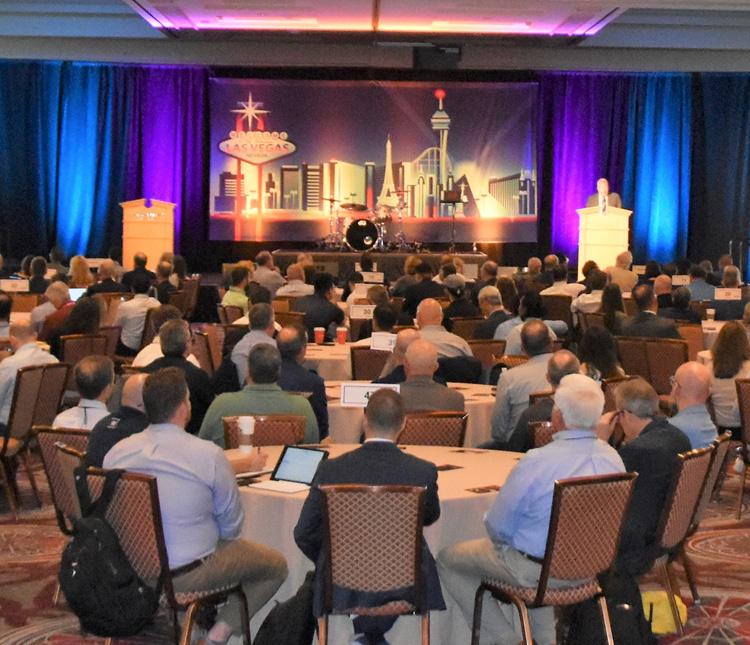







Phoenix Sintered Metals: A story of transformation, growth and community from America’s PM heartland
Northwest of Pittsburgh, specifically in a thirty mile or so radius of St. Marys, lies the heart and soul of America’s Powder Metallurgy industry. But, as the global automotive industry stumbles towards electrification, and the downsizing of engines continues unabated, what is the future for the industry in this area?
Bernard North visited Phoenix Sintered Metals for PM Review and reports on a hope-inspiring success story that is driven by employee engagement, operational excellence, strong technology, and customer satisfaction.
PM Review readers will know that certain events tend to stick in their minds as both inspirational and highly educational, and I was fortunate to have had such an experience recently in the conference room of what is now Phoenix Sintered Metals’ Galeton Plant.
The plant sits beside Pine Creek, in beautiful Potter County, northcentral Pennsylvania. The snow was coming down outside, and with me were three highly experienced and accomplished PM industry professionals: John von Arx, Director of Sales and Marketing; Blaine Stebick, Chief Technology Officer and General Manager – Galeton; and Stephen Leuschel, Chief Operating Officer.
During the discussions that took place in this conference room, and subsequently during plant tours of both the Galeton facility and the parent plant and offices in Brockway, Pennsylvania, Phoenix Sintered Metals’ leadership communicated a true success story of business, professional, and personal growth; all with every expectation of – and confidence in – continued progress.
A history of Phoenix Sintered Metals
To communicate the Phoenix Sintered Metals story, it is important to first understand some background on the company’s owner, Varischetti Holdings, LP. Frank Varischetti, the child of Italian immigrants to
Pennsylvania, who started a small sanitation business with a single truck. He subsequently grew that business into one of the largest privately-owned sanitation businesses in the state, constructing the first state-of-the-art, fully-lined landfill in Pennsylvania in the 1980s. Frank eventually sold his sanita -


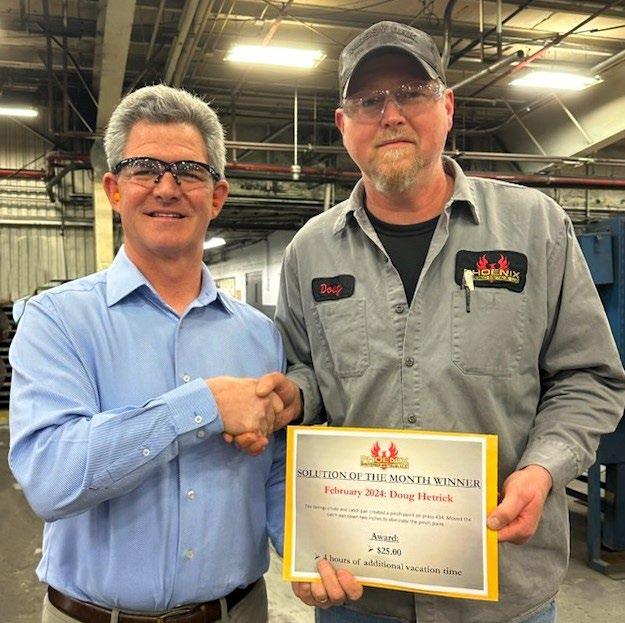

The ideas submitted are evaluated by a Steering Committee and employees are rewarded financially, with recognition, and, in some cases, vacation time (Courtesy Phoenix Sintered Metals)
tion business, turning his focus to successful ventures in real estate, construction equipment, and senior care facilities.
When Frank passed away in 2002, the family-owned business continued under the leadership of his son, Peter, and it has grown to become a large, diversified organisation. The company remains true to its roots, with the Frank Varischetti Foundation, which supports community involvement projects, being central to this. Its headquarters remain in downtown Brockway.
In 2005, Peter noticed that the Powder Metallurgy business in his hometown, Brockway Pressed Metals (BPM), was showing signs of decline, with fewer and fewer vehicles in the employee parking lot. After more than fifty years of local ownership, BPM had been sold to a private equity group and was now closing its doors following a bankruptcy filing.
Varischetti went to the courtordered auction sale and, when the liquidators present asked him why he was there, he responded, “I’m here to save jobs in my town.” And that is exactly what has happened.
“The operational excellence approach is closely modelled on the Toyota Production System, with the goal being to eliminate waste, or ‘negative work’ in Stebick’s parlance, and smooth the flow of value to the customer...”
After purchasing the assets of the former BPM, Varischetti started a new company: Phoenix Sintered Metals, LLC, reflecting the story of the mythological bird, which rises from the ashes of its predecessor. He brought in experienced PM professionals from the area and purchased two small Pennsylvania PM companies. The first, in 2005, was Specialty Pressed Components, Kersey, a producer of firearms components and other small, intricate parts. This was followed by Accumet, Ridgway, in 2006, a lawn and garden components business. These acquisitions helped to achieve a critical mass and diversify the new company’s product range.
Employee empowerment as a basis for operational excellence
Throughout our discussions, von Arx, Stebick, and Leuschel emphasised the central and absolutely critical role that making employees feel safe, appreciated, and empowered has played in Phoenix Sintered Metals’
growth since 2005, and how employee satisfaction provides the bedrock of an effective operational excellence programme.
For companies to make process changes that enable shorter lead times, higher productivity, and higher quality, and to gain critical ideas and input from their employees to assist with those aims, it is essential that employees truly feel safe and that their employer has their best interests at heart. One manifestation of this is that – quoting von Arx - “Employees receive an annual retention bonus for staying at the company, and Pete shakes their hand and says, ‘Thank you for staying with us.’” Von Arx added that, “When we hire new employees, after a short while they will say to me: ‘I didn’t realise that this kind of culture still existed.’”
Starting around 2009/10, the company partnered with the Kennametal Center for Operational Excellence, part of the Alex G. McKenna School of Business, Economics, and Government at Saint Vincent College in Latrobe, Pennsylvania, to provide advice and guidance.
The operational excellence approach is closely modelled on the Toyota Production System, with the goal being to eliminate waste – or ‘negative work’ in Stebick’s parlance – and smooth the flow of value to the customer whilst improving quality, freeing up capacity and reducing costs to enable business growth.
Employees are encouraged to submit ideas to avoid potential hazards through Solution System forms. Such forms are also used for productivity, quality improvement, and cost reduction ideas. The ideas submitted are evaluated by a Steering Committee. Ideas which progress generally involve the idea’s submitter in their implementation, and employees are rewarded financially, with recognition (Fig. 2) and, in some cases, an extra day’s vacation.
A tangible result of this focus on employee wellbeing is that, at the time of writing, it has been over six years since a lost time accident, and,
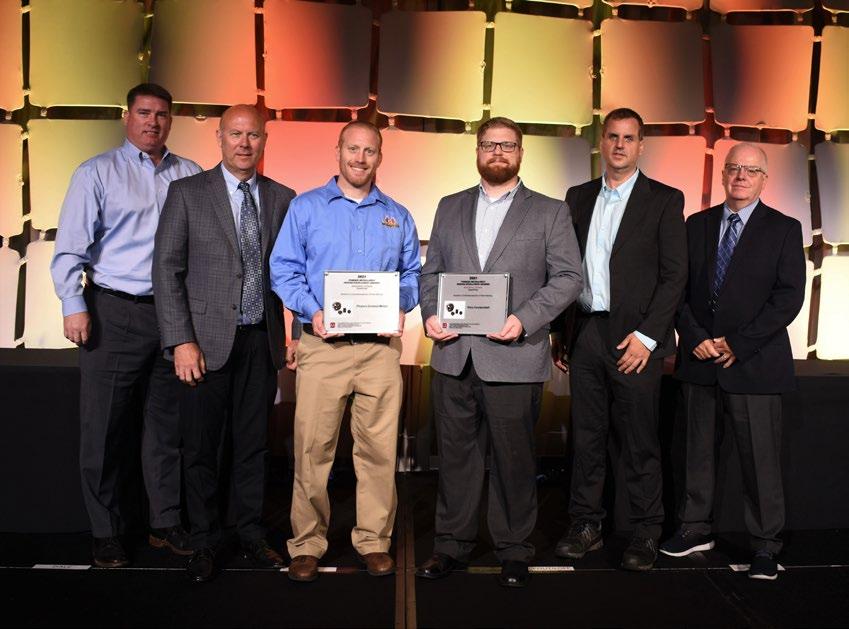
Fig. 3 In 2021, Phoenix Sintered Metals won a Grand Prize in the 2021 MPIF PM Design Excellence Awards (see the part in Fig. 13). Left to right are Mark Ruddy (Sales), Blaine Stebick (CTO, General Manager Galeton), Rob Hayes (VP Engineering), two representatives of the customer (Dana, Inc.) and, far right, John von Arx (Director of Sales & Marketing) (Courtesy MPIF)
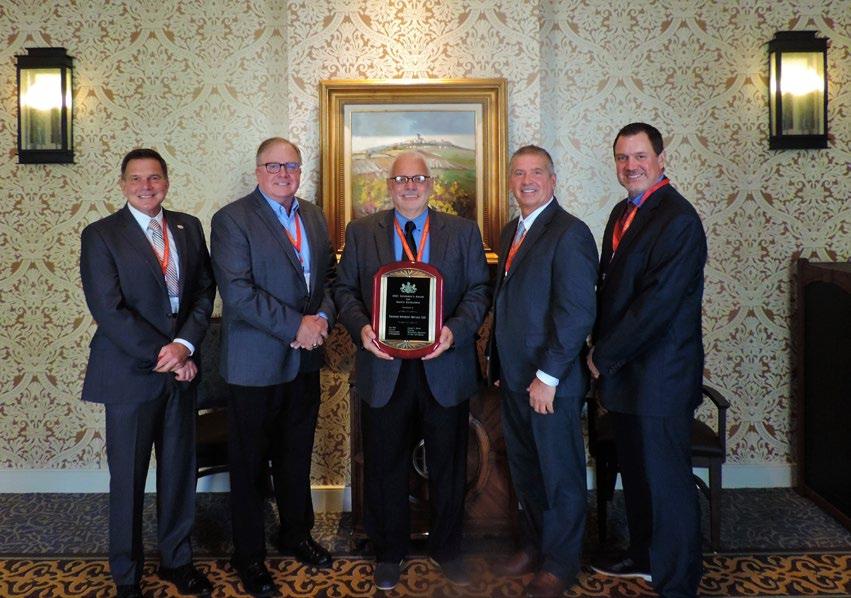
4 Phoenix Sintered Metals was recognised with the Pennsylvania Governor’s Award for Safety Excellence, presented in Harrisburg. Safety Committee manager Terry Fustine is centre, and Steve Leuschel, COO, to his right (Courtesy Phoenix Sintered Metals)
prior to that, there had been five years without a lost time accident. The company has received awards, notably the Occupational Safety and Health Administration’s (OSHA) Safety and Health Recognition Program (SHARP) award, the certifi -
cate for which is proudly displayed in the entrance lobby. The company has also been recognised with the Pennsylvania Governor’s Award for Safety Excellence (Fig. 4), and the MPIF’s Powder Metallurgy Parts Association 2021 PMPA Safety Award.

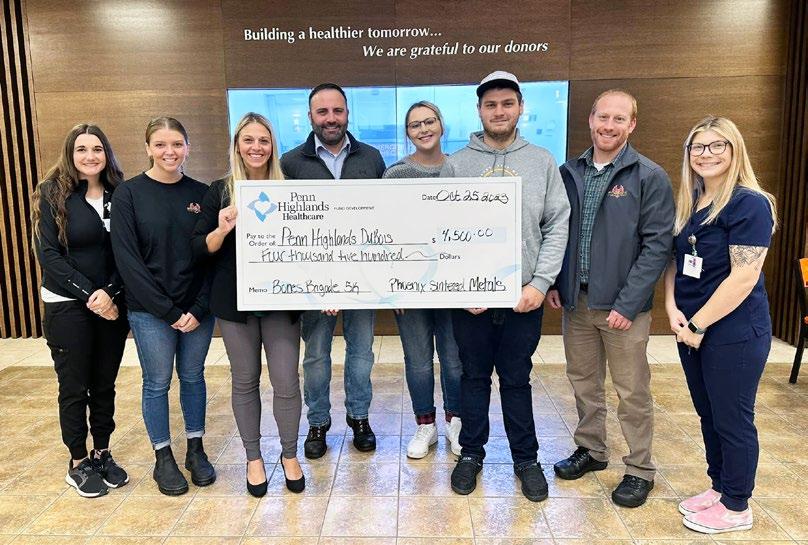
• Pics around Bones Brigade run
Fig. 5 Phoenix Sintered Metals has a very active charity committee that supports the local community. Employees here are presenting a cheque for $4,500 to the Penn Highlands Stroke Center following a charity run (Courtesy Phoenix Sintered Metals)
Placing
community at the heart of the business
Varischetti Holdings places high value on supporting the local community and encourages employees of its companies to take part in activities, which help people outside the specific work environment. Resources and financial support are provided to amplify the efforts of employees.
Von Arx explained that, when the management team sets its yearly goals for subsequent meas -
urement and review, one of them is specifically directed toward helping the community.
Phoenix Sintered’s management team believes that, besides being the right and proper thing to do, such involvement by the company helps the employees – who are, of course, drawn from the local community – to feel a sense of pride in, and belonging at, the company.
“...lining the presses up in a row has enabled the construction of a large trench, which was well-lit and had tools, fixtures, and work surfaces in it, which greatly eased the tasks of tool changing and press maintenance compared to the use of individual (and often cramped and poorly-lit) ‘pits’ below individual presses.”
Elimination of waste as a driver of growth
The 5S+1 lean thinking methodology, a lay person’s translation of which would be ‘sort, set in order, shine, standardise, sustain and safety’, was very evident during a tour of the Brockway facility, including a visible and clear metrics and organisational structure posting area.
Stebick described some key results of negative work elimination as the consolidation of powder mix varieties (with around 250 having been eliminated in the Brockway plant); a reduction in the physical movement of parts and employees through the re-positioning of presses with respect to sintering furnaces; the extensive use of simple, purpose-built ‘pick and place’ materials handling combined with conveyor belts, to reduce onerous manual tasks and the risk of damage to green parts; and ‘poka-yoke’ schemes that make operations mistake-proof, for example by ensuring that trays used for handling parts can’t be stacked incorrectly.
During the tour of the Brockway facility, von Arx drew my attention to another key benefit: lining the presses up in a row has enabled the construction of a large trench, which was well-lit and had tools, fixtures, and work surfaces in it, which greatly eased the tasks of tool changing and press maintenance compared to the use of individual (and often cramped and poorly-lit) ‘pits’ below individual presses.
Similar pick and place/conveyor belt units are used for multiple applications in the plant, including feeding to and dispositioning product from quality inspection equipment. Von Arx pointed out that, by providing a more pleasant working environment and reducing the number and extent of onerous, repetitive tasks, employee satisfaction and retention has been improved.
Stebick quoted an impressive comparison that summed up the results of the multiple operational
excellence initiatives: comparing calendar years 2023 with 2009, over twice the value of product was shipped, using only twelve instead of forty presses, fewer sintering furnaces, and five workdays per week with only limited overtime compared with seven workdays plus overtime. Furthermore, the remaining active presses still have ~50% unused capacity, thus enabling short lead times as well as continued growth.
Capital acquisitions have been fairly minimal, needed only where a specific technical capability was gained, rather than additional capacity per se. Phoenix staff were particularly proud that, during the period of COVID-19 in 2020, they were able to achieve 15% year-overyear sales growth, despite reduced demand for automotive components. This in turn helped Phoenix minimise the loss of key employees, something that hurt many companies at that time. Sales growth in the past five years has averaged over 16% per annum (Fig. 6).
Ultimately, operational improvements need to flow through as increased value to customers, evidenced by 2023 metrics of 98.6% on-time delivery – a metric which remained above 97% throughout the COVID-19 pandemic, a first-time pass yield of 99.66%, and very high employee retention. The leadership team has remained unchanged for over ten years, and about two-thirds of employees have at least five years of service.
The acquisition of the assets of Catalus Corporation
Catalus Corporation was a significant player right from the early days of PM development and commercialisation. It arose, as did much of Pennsylvania’s PM parts industry, out of carbon/graphite manufacturing, which, of course, also uses powder, presses, and high-temperature furnaces. In 1939, St. Marys Carbon Company was registered in Ridgway and its manufacturing
Phoenix Sintered Metals sales growth 2019-2023
The Catalus acquisition will almost double sales

Fig. 6 Phoenix Sintered Metals has averaged 16% annual sales growth over the last five years. The addition of Catalus Corporation, effective February 2024, will almost double sales
“Phoenix staff were particularly proud that, during the period of COVID-19 in 2020, they were able to achieve 15% year-over-year sales growth, despite reduced demand for automotive components. This in turn helped Phoenix minimise the loss of key employees.”
plant opened in nearby St. Marys. In 1952, the first PM bearings were manufactured. PM production grew and, in 1965, a purpose-built plant was opened about 70 miles away in Galeton. Later, the growing PM business became a division – SMC Powder Metallurgy Inc. – of the parent company. In 2018, following the construction of a new facility in St. Marys, the name changed to Catalus Corporation. In late 2023, the parent company decided to sell the assets of Catalus Corporation.
Phoenix Sintered Metals’ management team took a close look at the company and advised Varischetti that they saw, for several reasons, significant synergy between the businesses, and, effective February 1, 2024, Phoenix Sintered Metals purchased the assets of Catalus Corporation. The purchased business was re-named Phoenix Sintered Metals Galeton, LLC., and Stebick has already relocated to the area and assumed the additional role of General Manager.
Phoenix Sintered Metals Brockway
Phoenix Sintered Metals Galeton
Formerly Catalus Corporation
“The two plants each individually process around 2.2 million kg, or 2,200 tonnes, of metal powder per year, which is received in ‘super sacks’ from four different suppliers. Neither plant blends special powder mixes in-house.”
Overall, the two companies are similar in production and sales volume, and most products are relatively similar in size and geometry range, both predominantly ferrous PM with some stainless steel, and serving similar diversified markets (Fig. 7). However, von Arx stated that there was very little overlap in the customer base and, given the similarity of much of the equipment and product range, Stebick is confident that the operational excellence practices that have been so successful in Phoenix’s Brockway facility can be applied on an accelerated timescale in the Galeton facility.
Von Arx also mentioned a further benefit: many customers are becoming increasingly concerned about supply chain security. By having a second, geographically separated plant with similar manufacturing capabilities, Phoenix Sintered Metals can offer that security without the customer needing to negotiate with and qualify a separate supplier.
Production operations
The Brockway and Galeton facilities, despite their different histories, actually have a good deal of commonality in multiple respects. Regarding buildings, Brockway’s is 7,000 m 2 and dates back to the late 1950s/early 1960s, while Galeton’s 10,500 m 2 dates back to 1965, although much of the building is newer.
The two plants each individually process around 2.2 million kg, or 2,200 tonnes, of metal powder per year, which is received in ‘super sacks’ from four different suppliers. Neither plant blends special powder mixes in-house. Quality assurance data are provided by the powder suppliers, although each plant has laboratory facilities to test powders as required.
Both plants also have die shops capable of making new dies. In the case of Galeton, this is managed by
an in-house contractor. In practice, however, most dies are purchased from specialist die manufacturers, while die refurbishment and repair are generally done onsite. Dies may be single- or multi-cavity and range from simple, single-level up to complex eight-level types.
The range of presses is similar for the two plants, ranging in size from a low of 30 tons in Brockway and 45 tons in Galeton, to a high of 825 tons, thus enabling parts ranging in size from 6 mm up to 25 cm in sintered diameter, and from a few grammes up to around 2.3 kg in weight. At Brockway, most of the presses are mechanical, with one CNC hydraulic press and one CNC electric press. The Galeton plant has similar mechanical presses and a CNC hydraulic press.
Both plants employ cold and warm die compaction – the latter being generally used to achieve higher green, and subsequent sintered, densities. The company monitors developments in Metal Injection Moulding (MIM) and metal Additive Manufacturing (AM) very closely, but, to date, it has not found any combinations of specific customer needs to warrant adopting these technologies.
Both plants predominantly employ conventional mesh belt sintering furnaces that can operate at up to 1,120°C, but each also has a high temperature (typically 1,315°C) pusher furnace employing ceramic sintering plates. These are used for stainless steel and high density (typically 7.3 g/cm 3 or higher) carbon steel products.
The plants are also capable of sinter-hardening and sinterbrazing processes. A range of post-sintering operations is offered, either in-house or through qualified service providers. These include sizing, coining, coating, steam treating, induction hardening, carburising, machining, grinding, vibratory finishing, oil or resin impregnation, brazing, part inspection (including automated inspection and machine vision systems), and sub-assembly work.


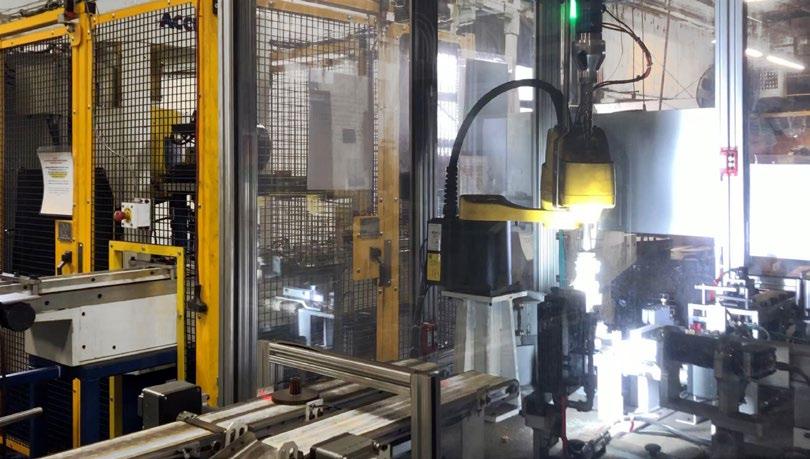
8 Upper left and right:
Metals; bottom: a vision/resonance inspection and honing cell
Phoenix Sintered Metals)
“Both plants predominantly employ conventional mesh belt sintering furnaces that can operate at up to 1,120°C, but each also has a high temperature (typically 1,315°C) pusher furnace employing ceramic sintering plates.”
The Brockway facility has an impressive machining area, used primarily for higher-volume components, including gantry-loaded lathes and 3- or 4-axis mills with pallet changers, as well as an automated honing line for precision hole sizing. Both plants have long been ISO
9001:2015 certified, and, in addition, International Automotive Task Force (IATF) 16949:2016 certification was gained for both the Brockway and Galeton facilities in 2021. The Brockway facility also received a Sprig Award from its customer, MTD, in 2019.

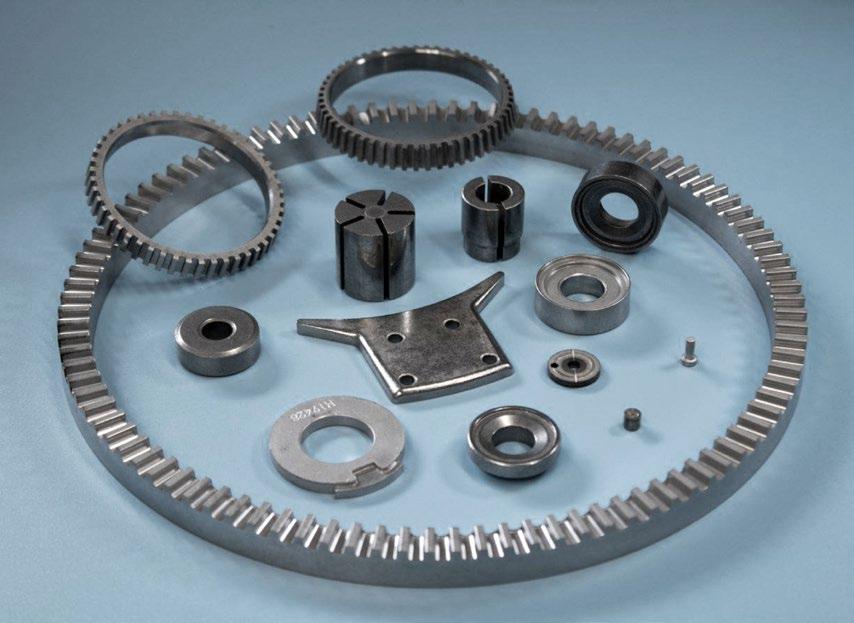
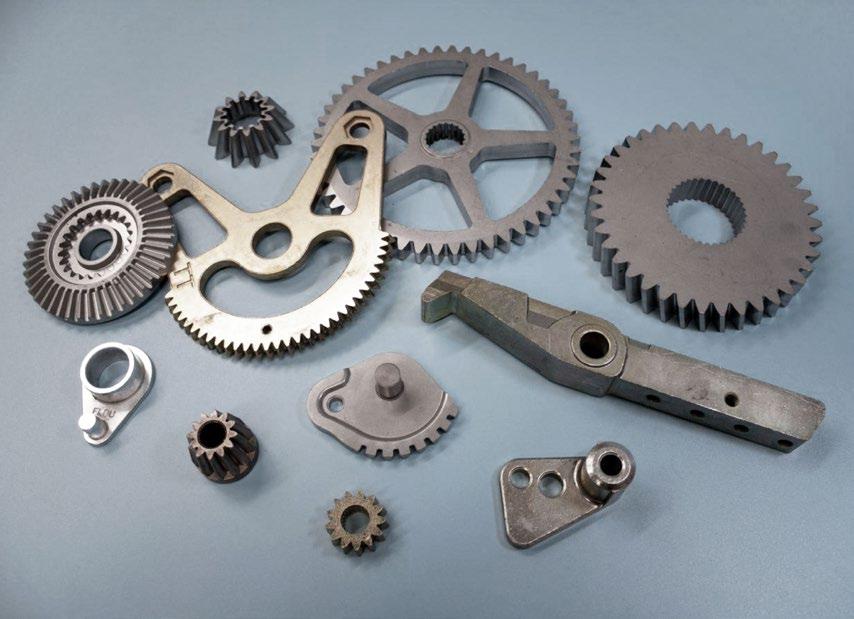
Products and markets
The majority of products are shipped to North American customers, although, in some cases, the parts are subsequently shipped overseas.
Fig. 7, which shows the breakdown by market for the two facilities, highlights that while the definitions differ somewhat at this very early stage of integration, it is clear that automotive is the largest single category at a little under half of sales covering a wide variety of products. The balance consists of sporting goods; recreational and hobby; outdoor power equipment such as lawn mowers, snowblowers, tillers, generators, agricultural, all-terrain vehicles, snowmobiles, marine motors etc.; and industrial parts for pumps, valves, gears, and housings, as well as some miscellaneous categories.
PM Review readers will recall that, during the COVID-19 pandemic, automotive plants worldwide were initially closed down, later operating in reduced production mode for a long time, and that many people were on reduced work schedules or working from home. In addition, the ability to travel and take vacations was very limited, and, in consequence, there was an explosion in people doing projects in their yards and gardens. Von Arx said the company’s diverse market mix helped it not only to remain open, but actually grow during that difficult time, in turn helping employee retention.
“It is noteworthy that the Brockway facility produces firearm components by near-net shape uniaxial press and high-temperature sintering, plus some finish machining, that would otherwise be made by MIM.”
By material type, both plants are predominantly ferrous, but with a significant 15% or so of stainless steel from the Brockway facility and rather less from Galeton. A broad range of PM alloys is processed, including materials used in electricity generation and for their electromechanical properties, specialist alloys for soldering iron heads, and high-density steels. It is noteworthy that the Brockway facility produces firearm components by near-net shape uniaxial pressing and high-temperature sintering, plus some finish machining, that might otherwise be made by MIM.

Customer interactions on new components involve a high degree of engineer-to-engineer interaction, with 3D modelling and design optimisation to ensure both high process capability in manufacturing as well as required product performance. An inside sales staff at Brockway, including former Catalus colleagues formerly based in St. Marys, works with customers directly and through manufacturers’ representatives, who Leuschel stressed are organised by customer account rather than territory.
Automotive industry electrification
As I always do when visiting PM companies or speaking to delegates at PM conferences, I engaged the Phoenix Sintered Metals management on their expectations for the speed and direction of electrification in the automotive market, in this case for the North American portion
“...staff were unanimous that the 16% BEV forecast is unlikely to be met by 2030, never mind the much larger share discussed by federal and some state governments, and some automotive company circles.”
thereof, specifically referencing the 2030 projection presented in the plenary session of the MPIF’s PowderMet 2021 conference of 16% Battery Electric Vehicles (BEVs), 6% Plug-in Hybrid Electric Vehicles (PHEVs), and 7% Full Hybrid Electric Vehicles (FHEVs).
Phoenix staff were unanimous that the 16% BEV forecast is unlikely to be met by 2030, never mind the much larger share discussed by federal and some state governments, and some automotive company
circles. By contrast, they expected hybrids to continue to experience rapid growth. Recent data appear to support this, with the Q4 2023 share for the US automotive market being 8.1% BEV and 10.5% (FHEV+PHEV), with BEV growth flattening and hybrids accelerating, so the data seem to be trending thus.
That said, Phoenix staff were clear that it is important for the industry to find new PM applications and grow PM’s share in BEVs and hybrids, both in powertrains and in applica -


tions such as suspension, steering, and body components, which are propulsion system-agnostic. Von Arx added that the downsizing of internal combustion engines still has some way to go (V8 to V6, V6 to L4, L4 to L3, etc), and he even anticipates turbocharged two-cylinder engines becoming prevalent.
Regarding hybrids, the group discussed that most (but not all) hybrids use an Atkinson combustion cycle, which results in hybrids usually having larger capacity engines than their non-hybrid counterparts (in itself a positive for PM), but many have CVTs (continuously variable transmissions) which gener -
“...due to the virtual stop in the development of new IC engines and associated transmissions, current automotive PM components are having unusually long production runs, which, at least in the near-term, is a positive for parts producers already tooled up and qualified on these components.”
ally use fewer PM components than, for example, conventional eight speed automatic transmissions.
Taking everything into account, the expectation is for automotive PM parts production to be in gradual decline (factoring out individual business cycles), but at a far slower rate than a cursory reading of much of the media output on vehicle electrification might indicate.
Stebick added a further point: due to the virtual stop in the development of new IC engines and associated transmissions, current automotive PM components are having unusually long production runs, which, at least in the near-term, is a positive for parts producers already tooled up and qualified on these components.
Supporting the MPIF and APMI
The company strongly supports the Metal Powder Industries Federation (MPIF) trade body and APMI professional body, and several staff members play important roles. Stebick is Chair of the MPIF Technical Board, whilst Rob Hayes, Vice President of Engineering, is president of APMI. Tom Burdick and Joe Hinchliffe are members of the MPIF Standards Committee, whilst Steve Leuschel is on the Powder Metallurgy Parts Association (PMPA) Statistics and Benchmarking committee. Von Arx is a past multiterm chair of the MPIF’s Industry Development Board.
Both Phoenix Sintered Metals and Catalus Corporation have received MPIF Design Excellence Awards for specific customer parts, most recently for an access hole cover in the Engine Category in 2019 (Fig. 12), and an 82:1 dual reduction planetary gear system in 2021 (Fig. 13).
In closing
In reviewing my thoughts and impressions after the plant tours and discussions with von Arx, Stebick,

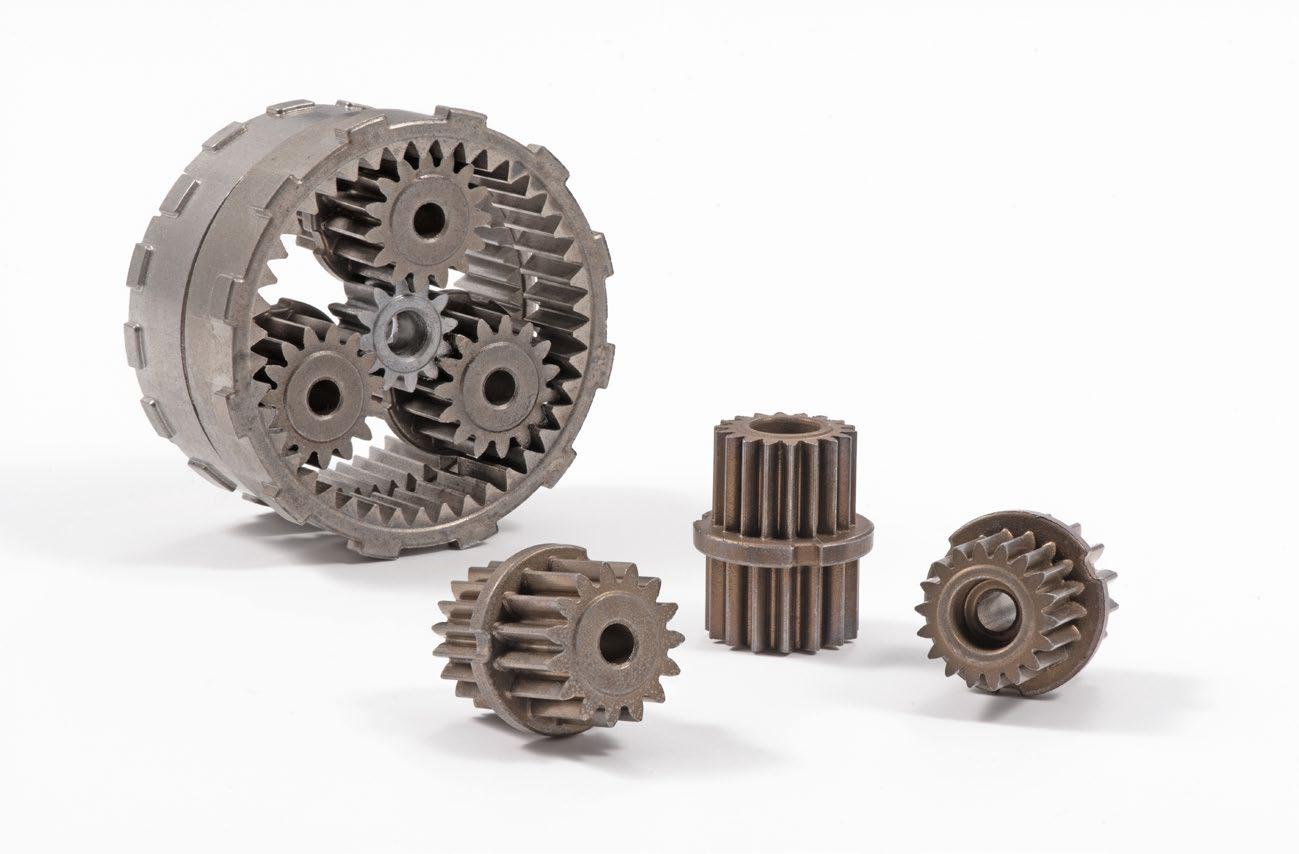
Fig. 13 This planetary gear system was awarded a Grand Prize in 2021’s MPIF PM Design Excellence Awards (Courtesy MPIF)
and Leuschel, and deciding how to condense them into a closing statement for this article, the predominant message is one of how, if a company really takes care of the basics of employee involvement and satisfaction, sound technologies, skilled, experienced leadership, and a practical application of operational excellence to eliminate waste, the value created will flow through as high quality, on-time products. Customers will, in turn, collectively reward their supplier with more business, and thus create substantial business and personal growth – even in a mature market.
Many (if not most) companies ‘talk the talk’ but, at least in my experience, few ‘walk the walk’ as comprehensively as Phoenix Sintered Metals – and they have the results to prove it. Business does not have to be a ‘zero-sum game’ - do things right and the involved constituencies – owners, employees, customers, suppliers, and the broader community – will all benefit. It will be fascinating to follow the progress of Phoenix Sintered Metals – now including the former Catalus Corporation Galeton facility – in the years ahead.
Author
Bernard North
North Technical Management, LLC Greater Pittsburgh area, Pennsylvania, USA bnorth524@msn.com
Contact
John von Arx Director of Sales and Marketing Phoenix Sintered Metals, LLC Brockway, Pennsylvania, USA John.vonArx@phoenixsintered.com www.phoenixsintered.com


















































World PM2024 Yokohama: The stage is set for the PM industry to find a path to sustainable growth
In October, the Powder Metallurgy World Congress series returns to Asia for the first time in six years. Yokohama, the host city of World PM2024, last welcomed the international PM community in 2012. In the intervening period, the commercial landscape for PM, Metal Injection Moulding, and metal Additive Manufacturing has changed beyond recognition. As PM Review ’s Nick Williams reports, our industry now has an opportunity to come together to share knowledge and speak with one voice to a new generation of end-users about PM’s role in the future of sustainable industrial manufacturing.
For decades, Powder Metallurgy World Congresses have been ‘must-attend’ events for those in the PM industry. Since 1994, they have taken place every two years, rotating between Asia, Europe and North America. COVID-19 disrupted the schedule with the cancellation of the 2020 Montreal, Canada, congress. Now, following World PM2022 in Lyon, France, the series is firmly back on track, and World PM2024 returns to Yokohama, Japan, October 13-17.
The last time that a PM World Congress was held in Yokohama was 2012 – a time when the Powder Metallurgy industry was in a very different situation. Tesla had sold just 3,000 cars that year, and few anticipated the EV revolution that is now having such a major impact on the automotive industry. 2012 also marked the moment that the Metal Injection Moulding (MIM) industry found itself at the start of the ‘smartphone boom’, driven by Apple’s adoption of the technology for its Lightning Connector, news
of which first became public knowledge at a World PM2012 MIM Special Interest Seminar. An extraordinary production run of many billions of parts followed, transforming the fortunes of China’s MIM industry, along with those of key international materials and technology suppliers.
As for metal Additive Manufacturing, in 2012 the technology was all but invisible.
Twelve years on, it feels like everything has changed. The future is complex for our industry and, more than ever, there is a need for conversations on a global level


The organisers of World PM2024
The 2024 Powder Metallurgy World Congress & Exhibition is organised by the Japan Powder Metallurgy Association (JPMA) and the Japan Society of Powder and Powder Metallurgy (JSPM).
Organising Committee Chairs
Hiroshi Ii, Diamet Corporation, is Organising Committee Chair as well as president of the JPMA, and Shuzo Sonoda, Fukuda Metal Foil & Powder Co., Ltd., is Organising Committee Vice Chair as well as president of JSPM.
Technical Programme Committee Chairs
Yukiko Ozaki, Osaka University / Kyushu University, is the Technical Programme Committee Chair, and Katsuyoshi Kondoh, Osaka University, is Vice Chair.
“We are delighted to welcome you to the WORLD PM2024 Congress & Exhibition in Yokohama, one of the most popular and attractive cities in Japan. World PM2024 will provide great opportunities to exchange information and solutions, enhance interactive communication, and deepen friendships. We look forward to your participation in the congress to ‘Make a better world with PM,’” stated the Organising Committee chairs.
The PM2024 World Congress is supported by the European Powder Metallurgy Association (EPMA), the Metal Powder Industries Federation (MPIF), and the Asian Powder Metallurgy Association (APMA).
“We are delighted to welcome you to the World PM2024 Congress & Exhibition in Yokohama, one of the most popular and attractive cities in Japan. The event will provide great opportunities to exchange information and solutions, enhance interactive communication, and deepen friendships.”

within the PM industry in order to find a path to renewed prosperity. Despite the current period of geopolitical instability and regional tension, collaboration is urgently needed in order to emphasise the value of metal powder-based technologies to end-users, all of whom are looking for just the type of sustainable manufacturing solutions that Powder Metallurgy processes offer.
Make a better world with PM: sustainability and competitiveness
With the theme “Make a better world with PM”, the organisers of World PM2024 have placed the theme of sustainability at the centre of the technical programme, and numerous presentations offer global perspectives on all aspects of sustainability.
“As we strive for a carbon-neutral society, PM technology guides us toward a future where resource efficiency and environmental stewardship harmonise. This journey holds the promise of a sustainable tomorrow, where technological advancement aligns seamlessly with resource preservation, forging a path towards a brighter, greener world,” states Kohmei Halada, from Japan’s National Institute for Material Science, in the preview to his World PM2024 presentation ‘Empowering PM Technology for a Carbon-Neutral Tomorrow’, part of the ‘Carbon neutrality in PM’ session.
“In response to the climate crisis driven by the ‘take, make, dispose’ model and its heavy reliance on cheap energy, a crucial shift in production technology becomes imperative. Powder Metallurgy technology emerges as a pivotal solution, offering several key advantages,” Halada states, adding that, “The true potential of PM technology shines when applied to Additive Manufacturing, where it revolutionises production by accommodating user-specific customisation, starkly contrasting traditional mass replication.”
Of course, in an age of high energy and raw material costs, combined with supply chain challenges, sustainability and competitiveness go hand in hand. Another presentation that addresses these issues is ‘Considerations and solutions for improving the sustainability and competitiveness of PM structural parts: views in Europe and Japan’, authored by Yoshinobu Takeda, Volker Arnhold and Vladislav Kruzhanov.
In the preview to this presentation, the authors emphasise that improving the sustainability and competitiveness of PM structural parts requires a great deal of focus and effort. Grounded in sciencebased analysis, they will review key priorities for the reduction of energy consumption – specifically sintering, compaction, heat treatment and finish machining. The importance of materials will also be emphasised, including the selection of base powder and alloy systems from the points of view of energy consumption, carbon neutrality, material resources and recycling. Whilst energy mixes vary by region and country, the data that will be presented will offer encouragement to PM structural parts manufacturers to shift from theory to practice in order to remain competitive.
In a further presentation that will be of great interest to sintered parts producers, an expert group of Japanese PM professionals and academics presents ‘The Ideal Sintering Factory to Achieve Carbon Neutrality in 2050’. Here, the authors envision the ideal PM parts factory in 2050. As part of this project, the extent to which CO 2 emissions can be reduced through the further development of existing technologies, combined with the application of new technologies, is estimated. The presentation explores the history of the development of servo presses, examples of improvements that have the effect of reducing CO 2 in each stage of the PM production process, and the impact of materials that improve machinability etc.


WORLD PM2024

Congress Information

“In response to the climate crisis driven by the ‘take, make, dispose’ model and its heavy reliance on cheap energy, a crucial shift in production technology becomes imperative. Powder Metallurgy technology emerges as a pivotal solution...”
The above represent only a small selection of World PM2024 presentations that touch on the theme of sustainability and competitiveness, with other presentations covering soft magnetic composites for high-performance motors, further energy-saving initiatives for furnaces, optimising furnaces through automation and part positioning, and the role of metal Additive Manufacturing, to name but a few.
Global Review session will report on the status of Powder Metallurgy in key world regions. Always highly anticipated, this session has the ability to focus minds on the challenges faced by the industry at a global level.
World PM2024’s plenary presentations
Metallurgy-inspired solar panel recycling
reports
Opening ceremony and global industry
Following the official World PM2024 opening ceremony, a
Developments in Asia will be presented by Chiu-Lung Chu (Porite Corporation, and president of the Asian Powder Metallurgy Association). The status of PM in North America will be reviewed by Michael Stucky (Norwood Medical, and president of the Metal Powder Industries Federation). Ralf Carlström, Höganäs AB and president of the European Powder Metallurgy Association, will review the state of PM in Europe.
GENERAL SESSIONS AT WORLD PM2024 - ORAL PRESENTATIONS
T1 Powder Production
T2 Compaction & Sintering
T3 Modeling and Sintering
T4 Hot Isostatic Pressing
T5 Field Assisted Sintering Technologies
T6 AM Beam Based Technologies
T7 AM Sinter Based Technologies
T8 MIM - New Processing Routes
T8 MIM - Stainless Steel and Heat Resistant Alloy
T9 Innovative Technology
T11 High Profile Automotive Component Technology
T11 PM Technologies to Support Future Society
T11 Tribology in PM
T12 Ferrous Materials
T13 Non Ferrous Materials
T14 High Temperature Materials
T15 Hard Materials
T16 Hard Magnetic Materials
T16 Soft Magnetic Materials
T17 Composite/Hybrid Materials
T18 Non-oxide Materials
T19 High Entropy Alloys
T20 Materials Characterisation of AM Materials
Table 1 Topics covered within general sessions at World PM2024
The rapid growth in c-Si photovoltaic solar panel installations has made end-of-life panel recycling an important topic – both as an environmental challenge and a business opportunity. Current recycling technologies are impractical, hampered by low energy efficiency, high cost, and the use of harmful chemicals. It is, therefore, necessary to develop a highly efficient, low-cost, system to recycle end-of-life solar panels.
Given that c-Si Solar panel recycling is, in nature, a metallurgical process, in the first World PM2024 plenary paper, Yansong Shen, University of New South Wales, Australia, will discuss a highly efficient low-cost closed-loop recycling system to recover valuable metals and silicon from end-of-life solar panels. Inspired by well-developed metallurgical engineering, the work leverages interdisciplinary research expertise in metallurgy (pyro- and hydro-metallurgy), photovoltaics, waste treatment, and close collaboration with industry partners across the whole supply chain.
What is promised is a costeffective, closed-loop and practical solution to recycling photovoltaic panels, ultimately allowing for a more competitive and sustainable photovoltaic industry globally.
Mechanical properties and reliability of structural materials for spacecraft applications
In the second plenary paper, Japan Aerospace Exploration Agency (JAXA)’s Eiichi Sato will consider the use of metal powder-based components for space applications. Parts used in space vehicles are required to have superior mechanical properties and reliability when operating in extraordinary and/or unique environments - in addition to the basic requirements of high specific strength and toughness. This is especially the case for propulsion
systems. Here, Sato will review the low cycle creep fatigue of a copper combustion chamber of a liquid rocket engine and a ceramic/metal hybrid thruster for an interplanetary probe.
Iwatani’s efforts towards the realisation of a hydrogen society Iwatani Corporation is a leading Japanese supplier of hydrogen for domestic and industrial uses, handling everything from gas production to domestic deliveries. In this presentation, the company’s Manabu Tsuyoshi will introduce efforts towards a ‘hydrogen society’, driven by hydrogen’s advantages as an energy source that does not emit CO 2 when burned. Beyond domestic consumption, hydrogen is expected to be widely used in industries such as steelmaking and chemicals.
General sessions and keynote presentations
World PM2024 includes a large number of presentations on the latest technologies for metal powder production and materials development, PM, MIM and AM part production, and applications. Table 1 lists the oral sessions at World PM2024.
The following keynote presentations feature within the technical programme:
Challenges for the Additive Manufacturing of nanoparticleinfused pre-alloyed water atomised iron powder, Jai-Sun g Lee, Hanyang University ERICA, Korea
Processing powders by highpressure torsion for energy application, Kaveh Edalati, Kyushu University, Japan
Metal powder based Additive Manufacturing technologies for realising circular economy society Hirotomo Itagaki, National Institute of Advanced Industrial Science and Technology, Japan
PM World Congress history and organisation
The sponsorship of the world’s largest international PM congress is a collaborative effort between the world’s major regional organisations: Metal Powder Industries Federation (MPIF) representing North America; the European Powder Metallurgy Association (EPMA); and the Asian Powder Metallurgy Association (APMA).
The first international PM conference was sponsored by MPIF in New York City in 1960, with subsequent congresses held at 5-year intervals until 1973, when they were changed to 3-year intervals. MPIF joined with the European Coordinating Committee for PM (ECC-PM) to alternate sponsorship of the biennial conferences between North America and Europe in 1976. The ECC-PM was a coordinating group comprised of PM associations and societies from various European countries. In 1986 the ECC-PM transferred
WorldPM2026
organisational authority for these meetings to the European Powder Metallurgy Federation (EPMF). In 1989, the European Powder Metallurgy Association (EPMA) was formed and assumed coordination of these meetings.
After the Japan Powder Metallurgy Association (JPMA) held its own world congress in 1993, a tripartite alliance was formed between MPIF, EPMA and JPMA to conduct future world congresses alternating between North America, Europe and Japan (or other Asian countries as designated). Congresses are held every two years with each organisation hosting a meeting every six years. Established in 2008, APMA will coordinate future PM World Congresses in Asia. In all cases, the host organisation is responsible for all congress arrangements, promotion, technical programme and finances.
Following World PM2024 in Yokohama, the series moves to Montreal in 2026 and then to Vienna in 2028.

“Japan Aerospace Exploration Agency’s Prof Eiichi Sato will consider the use of metal powder-based components for space applications. Parts used in space vehicles are required to have superior mechanical properties and reliability when operating in extraordinary and/or unique environments...”

SPECIAL INTEREST SEMINARS AT WORLD PM2024
SIS1 Powder Production
SIS2 Novel processing strategies for Beam Based AM
SIS3 Promising Future of Sinter Based AM
SIS4 Trends and Sustainability of MIM
SIS5 MIM Challenges for New Materials
SIS6 Industrial Application of Functional Materials
SIS7 Powder Design for Industrial Application
SIS8 Sintered Materials
SIS9 Hard Materials
SIS10 Amorphous/Nanocrystalline Soft Magnetic Materials
SIS11 Energy Materials
SIS12 Carbon Neutrality (CN) in PM
SIS13 Circular Economy and Sustainability in PM
SIS14 DX in PM
Deformation-resistant multipurpose ultra-high temperature ceramics with superior hardness, toughness, and flexural strength , Oleg Vasylkiv, National Institute for Materials Science, Japan
From understanding flash sintering mechanisms to realise ultrafast sintering without electric fields and creating graded microstructures with electric fields , Jian Luo, University of California, San Diego, USA
Mass production of high accuracy and thin-wall product for electric VVT , Tomoya Sako, FINE SINTER CO.,LTD., Japan
Materials and reactions in solidstate batteries , Ryoji Kanno, Tokyo Institute of Technology, Japan
Informatics approaches to materials science and engineering , Isao Tanaka, Kyoto University, Japan
Material informatics and DX platform WAVEBASE
Tetsuya Shoji, Toyota Motor Corporation, Japan
Empowering PM technology for a carbon neutral tomorrow , Kohmei Halada, National Institute for Materials Science Sustainability Design Institute, Japan
Microstructure engineering to improve the performance of hardmetals
Zhigang Zak Fang, The University of Utah, USA
Special Interest Seminars and JPMA Special Seminars
Special Interest Seminars form a central part of the technical programme at World PM2024 and encompass all aspects of metal powder-based parts production, from raw material to the finished part. Table 2 lists the topics covered.
The JPMA introduced its Special Seminars more than twenty years ago, proving popular with visitors. This year, the seminar programme includes a closer look at JPMA award-winning parts, as well as case studies on production efficiency improvements. These
deep-dives into Japanese PM production efficiency improvements take place within the exhibition hall and are open to all event participants.
Exhibition
The World PM2024 exhibition will feature materials and technology suppliers relating to all aspects of PM technology, as well as part producers. Access to the exhibition hall is free of charge following on-site exhibition registration. Part of the World PM2024 exhibition will include a pavilion showcasing Japan’s Metal Injection Moulding industry (Fig. 3). This pavilion will feature the following Japanese companies, with each engaged in MIM production or the provision of materials and technology to the MIM sector:
• atect Corporation
• CASTEM Co.,Ltd.
• IWAKI Diecast Co.,Ltd.
• JUKI Aizu Corporation
• Nakahara Precision Co.,Ltd.
• Nippon Piston Ring Co.,Ltd.
• Oriental Chain Mfg.Co.,Ltd.
• OSAKA Titanium Technologies Co.,Ltd.
• Osaka Yakin Kogyo Co.,Ltd.
• Pacific Sowa Corporation
• Repton Co., Ltd.
• Taisei Kogyo Co., Ltd.
• Teibow Co., Ltd.
• Toko Tsusho Corporation
A call to action
Whilst Powder Metallurgy parts production is a global business with many ‘universal’ applications in, for example, automotive, each global region has developed unique markets, process innovations and materials capabilities. As with past PM World Congresses, World PM2024 presents an invaluable opportunity to explore developments

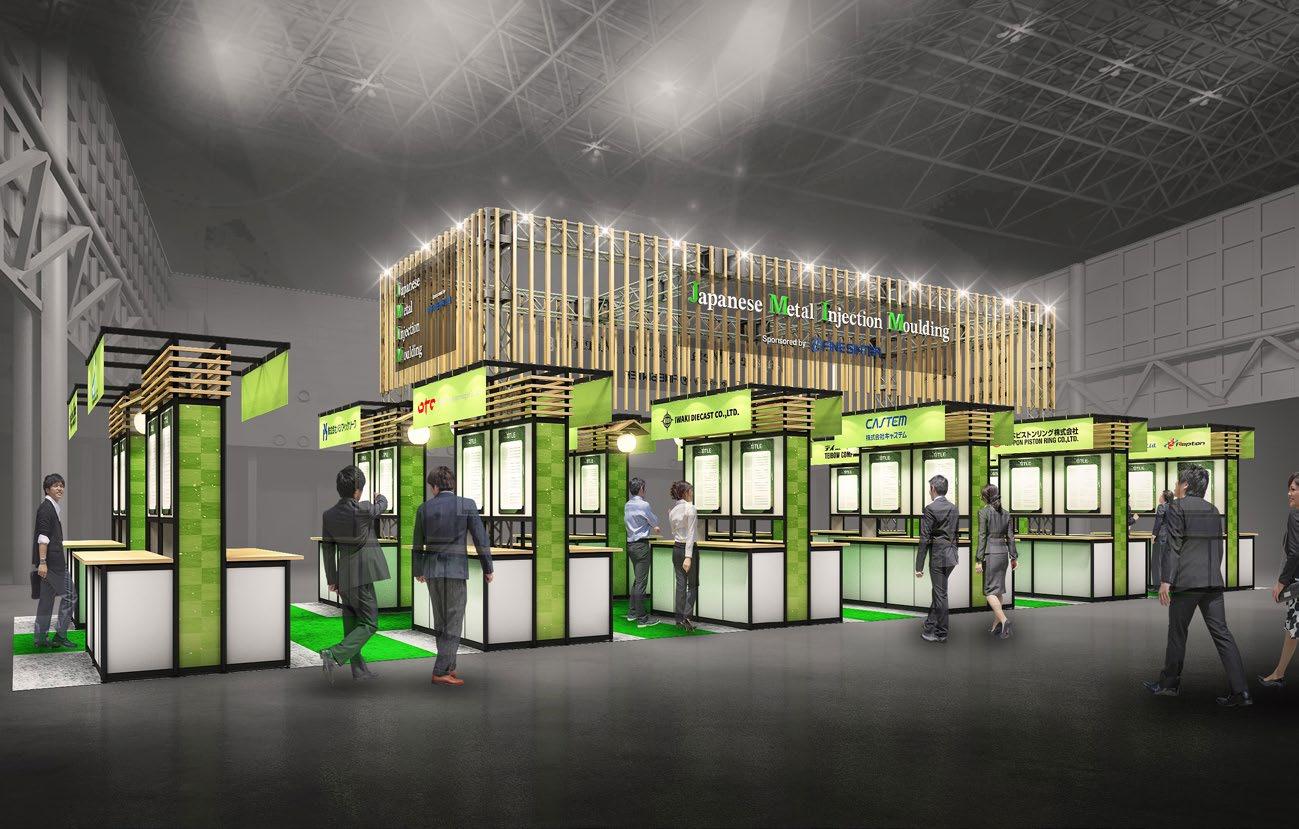
in other world regions and consider innovations that could be applied in manufacturers’ home markets.
James P. Adams, Executive Director/CEO of the Metal Powder Industries Federation (MPIF), told PM Review , “I look forward to meeting face-to-face with the global PM industry, as the energy that you receive from meeting with your colleagues in the same room is unmatched.”
“Being surrounded by likeminded individuals who share the common goal of continuing to advance the PM technology through education, networking, and collaboration expedites the objectives of the World Congress. I believe it is our duty as an industry to meet to explore materials advances, assist in the transfer of technology, and investigate new developments to continue to grow the global PM technology.”
Ralf Carlström, Höganäs AB and president of the EPMA, told PM Review , “In times of fundamental
changes caused by electrification and sustainability challenges, I think it is of importance that the Powder Metallurgy industry stays together and leverages the benefits of our technology. Therefore, I think World PM2024 is a unique opportunity to network with colleagues and sister associations to discuss and conclude on future activities.”
I have been fortunate enough to have attended numerous PM World congresses over the span of more than twenty-five years and have witnessed the positive impact that they have had on the development of the global PM industry. The opportunity to explore innovations from beyond our own PM networks, and support the transfer of knowledge, is now more valuable than ever.
Author Nick Williams, Managing Editor, PM ReviewFurther information
Secretariat of World PM2024
c/o JTB Communication Design, lnc. Celestine Shiba Mitsui Bldg.12F 3-23-1 Shiba, Minato-ku, Tokyo 101-8335, Japan
www.worldpm2024.com worldpm2024@jtbcom.co.jp
Tel: +81 3 5657 0777
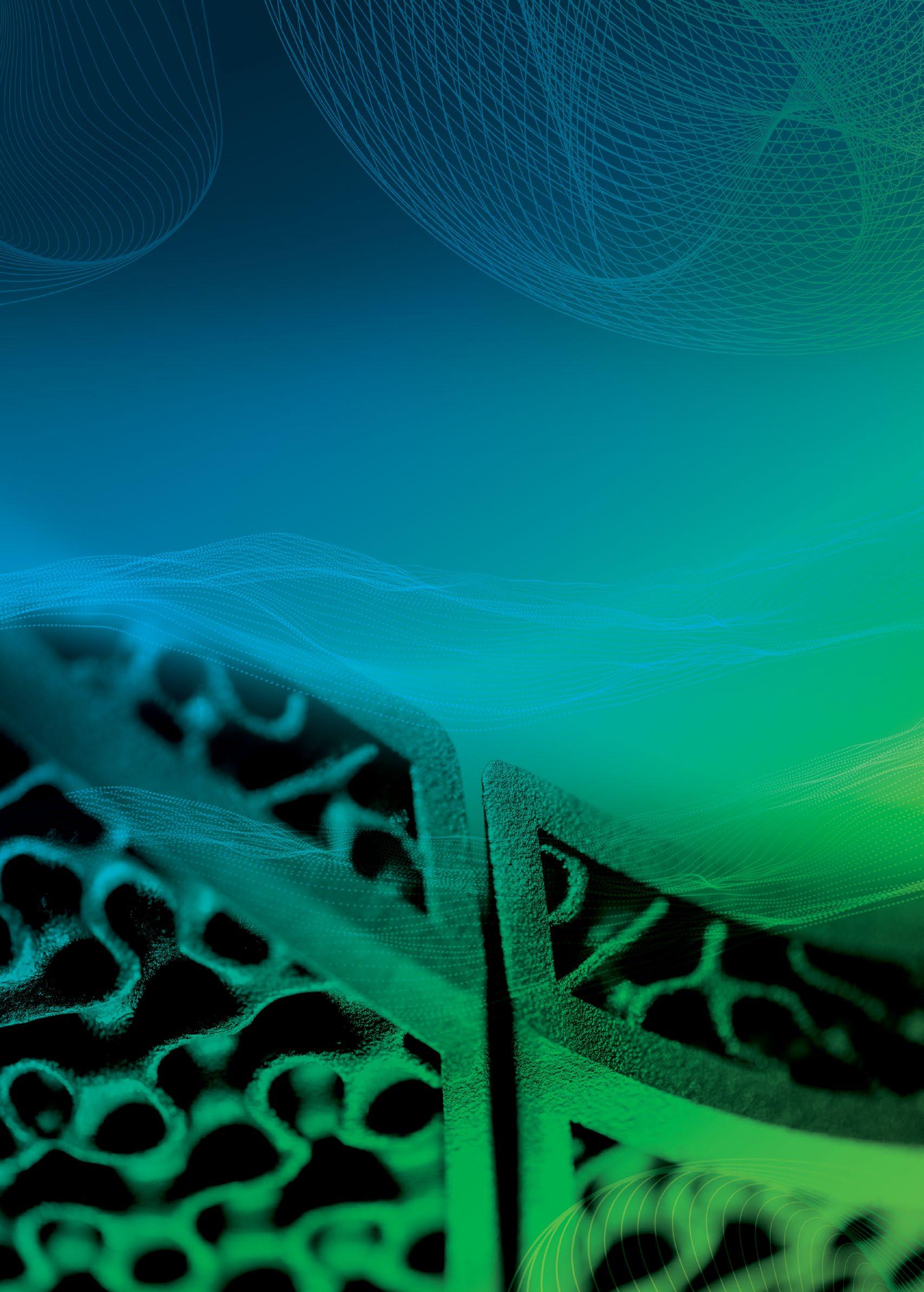
The demands on industrial production are constantly increasing. A rising need for complex and individualized parts, even shorter product cycles, a scrutinization of proven supply chains plus a desire for increased sustainability in this transformation – these are the challenges faced by industries worldwide. It is also a chance for AM to showcase its expertise and creativity.
Formnext 2024 provides the ideal platform to showcase your solutions in Additive Manufacturing or along the entire process chain. Actively design the future of production.
The state of Europe’s hard magnets industry and the challenge of optimising the mass production of Nd 2 Fe 14 B permanent magnets
Europe’s shift towards electric vehicles is driving one of the region’s most significant periods of transformation. As the demand for conventional Powder Metallurgy parts reduces, the need for permanent magnets is rising. Here, GKN Powder Metallurgy Engineering GmbH’s Dr Markus Schneider, Kevin Haffke and Dr Dennis Wawoczny present the story of the rise, fall, and rise again of sintered Nd 2Fe 14B magnet production in Europe. They then explore how the theory of brittle solids, when applied to sintered rare earth permanent magnets (REPMs), offers a path to improved production robustness and quality.
The European automotive industry in general, and in Germany in particular, is undergoing one of its most transformative periods of change. The European Union (EU) has decided to step out of the Internal Combustion Engine (ICE) business by 2035; from then on, no new cars fuelled with fossil fuels (diesel or petrol) may be registered in the EU.
Even if little communicated by the political authorities, this has a huge impact on Germany’s industrial landscape because there is a deep value chain behind the Original Equipment Manufacturers (OEM). The forging, casting and Powder Metallurgy (PM) industries will all be affected. The classical machine element industry (springs, screws, ball and roller bearings) and the heat treatment industry will also shrink accordingly.
Within the global PM industry, there are various visible attempts to compensate for the future decline of traditional businesses and to convince the markets of the inherent features of the PM process
(like high geometry complexity, low scrap rate, usage of recycled metal powders, functional and/or graded materials, high production volumes and high quality levels, as well as a fully digitalised value stream). A few examples of use cases are:
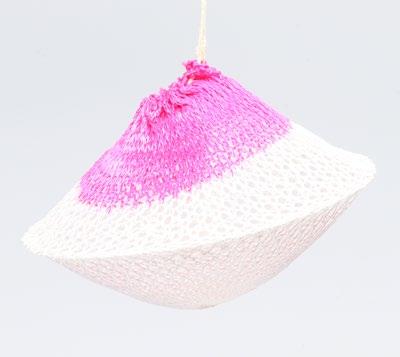
• PM for Battery Electric Vehicles (BEV) applications
• PM for energy applications (focus on nuclear and hydrogen economy)
• PM for defence applications

Fig. 1 Two of the first successful technical products containing Rare Earths (RE). Auer’s incandescent gas mantle lights (left) initially contained radioactive Th; later, Th was substituted by non-radioactive lanthanoids like Y and Ce. This development shows how closely period 6 and 7 elements are related (in mining and application). Ferrocerium flint spark/fire strikers (right) are still made from Auermetall for the Zippo brand by Treibacher Industrie AG. Cerium shows the lowest ignition point of all lanthanoids with �� ≈ 165°C which explains its preferred usage (Courtesy GKN Powder Metallurgy Engineering GmbH)

GKN Powder Metallurgy has identified various products used in BEVs which could gain benefit from its PM technology [1]. A very prominent example that has been on our agenda since 2022 is sintered Nd 2Fe 14B hard magnets (a variant of Rare Earth Permanent Magnets, or REPM). Their chemical composition and processing are very special. Common alloying elements are iron (Fe), neodymium (Nd), praseodymium (Pr), dysprosium (Dy), terbium (Tb), holmium (Ho), gallium (Ga), cerium (Ce), boron (B), copper (Cu), zirconium (Zr), titanium (Ti), aluminium (Al) and cobalt (Co). Sometimes traces of silicon (Si) can be found, too. Since all lanthanoids are well known for their reactivity, the impurity levels of oxygen (O 2), nitrogen (N 2), hydrogen (H 2), sulphur (S) and carbon (C) are of major concern. Moreover, they react with halogens chlorine (Cl), fluorine (F) etc.), inorganic acids and water. The solid-state chlorination recycling process uses that affinity to form water-soluble metal chlorides. This fact also explains its very low corrosion resistance, the need for passivation and/or coating attempts as well as the common storing practice, e.g. of Tb or Dy sputtering targets, in kerosene.
Lanthanoids are a group of fifteen metals (including lanthanum [La]) within the period 6 grouping. They occupy the atomic numbers Z = 57 to Z = 71 on the periodic table of elements. They show some similarities with the radioactive actinoids of period 7 – namely, both lanthanoids
and actinoids are electropositive and reducing in nature, and are f-block elements where additional electrons enter the f-orbital and exhibit the stable oxidation state of + 3. As a result, both period 6 and 7 elements are often geologically associated, which could be a problem during mining (radioactive material and wastewater), e.g. if thorium- (Th) and/or uranium-rich (U) monazite mineral deposits are mined [2]. Monazite and bastnaesite are the most prominent minerals, while the rich Brazilian monazite deposits led to the name ‘monazite-placer era’ for the period of mining activities, ending around 1965 [2]. Together with scandium (Sc) and yttrium (Y), these constitute ‘Rare Earths’ (RE).
The Austrian inventor Carl Auer von Welsbach was one of the earliest users. He separated Nd and Pr, found ytterbium (Yb) and lutetium (Lu) and developed the first technical applications made of RE containing aqueous salt solutions and alloys (ferrocerium, Auermetall or Mischmetall) – see Fig. 1. The Rare Earth companies Treibacher Industrie AG and the former Auer-Gesellschaft arose from his entrepreneurship [3, 4, 5].
Today, Rare Earths are widely used in the ceramic industry (e.g. yttria (Y 2O 3) or ceria (CeO 2) stabilised zirconia ceramic (ZrO 2)), their lighting, fluorescing, emissivity and colouring effects are used in the ceramic, glass, pigment and lighting, illumination and laser industry as well. Moreover, their reactivity is used for catalysts and electrolytes.
“GKN Powder Metallurgy has identified various products used in BEVs which could gain benefit from its PM technology. A very prominent example that has been on our agenda since 2022 is sintered Nd2Fe14B hard magnets (a variant of Rare Earth Permanent Magnets, or REPM).”
In the following, we will focus on their contribution to REPM which are widely used in wind turbines (rule of thumb: 1 MW ~ 1,000 kg Nd 2Fe 14B), electric traction motors, consumer electronics and defence applications.
The chemical composition of a ‘common’ stochiometric Nd 2Fe 14B hard magnet is not consistenteven for virtually the same grade. Therefore, the chemical formula Nd 2Fe 14B is used as a more generic term rather than an exact description of the chemical composition.
The crystallographic tetragonal unit cell of Nd 2Fe 14B consists of sixtyeight atoms, namely fifty-six (14) Fe atoms, eight (2) Nd atoms and four (1) B atoms in an eight-layer structure. The ternary system exhibits three intermetallic compounds T 1 (Nd 2Fe 14B), T 2 (Nd 1.1Fe 4B 4) and T 3 (Nd 5Fe 2B 6).
If the stoichiometric composition of T 1 is shifted to the right (to higher, hyper-stoichiometric, Nd contents), a beneficial Nd-rich grain boundary ε -phase appears [6]. If the stoichiometric composition of T 1 is shifted to the left (to lower, sub-stoichiometric, Nd contents), undesired soft magnetic α -Fe appears, which will reduce the coercivity H cJ and will deteriorate the squareness of the B-H curve (BH) max./H cJB r. A surplus of Fe and/ or a loss of Nd within the chemical composition, as well as too low a quenching rate during strip casting, promote the formation of α -Fe.
Most Nd 2Fe 14B hard magnets consist of the main hard magnetic φ -phase Nd 2Fe 14B (85% to 95%), the boride η -phase Nd 1.1Fe 4B 4 (< 1%) and the Nd-rich grain boundary ε -phase (3% to 6%). The Nd-rich grain boundary ε -phase smoothes the grain boundaries and prevents reverse domain nucleation. Moreover, paramagnetic Nd isolates the hard magnetic Nd 2Fe 14B grains from each other and provides a demagnetisation barrier [6]. Generally, Co substitutes the Fe within the main hard magnetic φ -phase Nd 2Fe 14B to Nd 2Fe 14-xCoxB and increases the Curie temperature TC
As a rule of thumb, the Curie temperature TC ≈ 312°C increases about Δ TC ≈ 10 K for Δ Co ≈ 1%. Dy and Tb enrich the Nd-rich grain boundary ε -phase and shape the beneficial core shell structure of the Nd 2Fe 14B grains to increase the coercivity H cJ if supplied via the Grain Boundary Diffusion Process (GBDP). The chemical composition and the constitution of the phases explain why special care is needed regarding the prevention of corrosion and temperature-triggered deterioration phenomena.
Developed in parallel in Japan (the sintering route of Masato Sagawa’s group at Sumitomo/Hitachi) and the US (the hot deformation route of
John J. Croat’s group at Delco Remy/ General Motors/Magnequench), these routes revolutionised electric traction motor design in terms of smaller size, higher power and lower weight from 1984 onwards and have replaced the older hard magnet grades, namely samarium cobalt hard magnets of the grades Sm 2Co 17 and SmCo 5 and the hexagonal hard ferrites of the grades BaFe 12O 19 and SrFe 12O 19
It is worth noting that all the mentioned hard magnet grades are produced via a 100% PM process route. The different processing routes are explained in Table 1 and 2.
After a pioneering initial phase with various European players, most hard magnet producers withdrew
GENERAL DIFFERENCES
Sintered Nd 2Fe 14B hard magnets
Inventor Sumitomo/Hitachi (Japan)
Manufacturers and Market Share (MS)
Main process steps
Estimated Technical Readiness Level (TRL) and Manufacturing Readiness Level (MRL)
Sumitomo, Hitachi, Shin Etsu, TDK, NingboYunsheng etc. MS ≈ 95%
Cold pressing (with magnetic field alignment) and sintering
TRL ≈ 9, 100%, fully developed MRL ≈ 10, 100%, fully industrialised
from the market due to Intellectual Property (IP) concerns and increasing cost pressures. Table 3 and 4 gives an overview of current and historical hard magnet players in Germany; important REPM producers are/were Vacuumschmelze GmbH & Co KG in Hanau, Magnetfabrik Schramberg GmbH & Co KG in Schramberg, Krupp Widia GmbH in Essen and Thyssen Magnettechnik GmbH in Dortmund.
The first three companies received (in one case indirectly, over the assignment of Krupp Widia’s licence and a spectacular one-day patent dispute between Sumitomo Special Metals Co, Ltd and Magnetfabrik Schramberg at the
deformed Nd 2Fe 14B hard magnets
Delco Remy/General Motors/Magnequench (USA)
General Motors, Magnequench, Daido, Bomatec, Wilo etc. MS ≈ 5%
Cold pressing, hot pressing and hot extrusion (with thermo-mechanical alignment)
TRL ≈ 8, 89%, developed MRL ≈ 8, 80%, poorly industrialised

Material
Density and phase composition
Corrosion resistance (affinity to O 2)
Need of a protection coating (passivation etc.)
Temperature resistance (temperature coefficient β )
Special alloying elements and purpose
Strip cast Nd 2Fe 14B alloy flakes (microcrystalline grains but within a finer particle size d), the former market claims were defined with respect to the grain size d as: d > 1 µm (Sumitomo/Hitachi) and d < 1 µm (Delco Remy/General Motors/Magnequench)
Approx. 95% (less dense) with a welldefined paramagnetic Nd-rich grain boundary ε -phase
Very low (due to the different Nd-rich grain boundary ε -phase distribution and the finer particle size d)
Yes
Approx. -0.5%/K to -0.6%/K (due to the coarser grains)
Nothing special
Melt spun Nd 2Fe 14B alloy ribbons or HDDR processed Nd 2Fe 14B powder (nanocrystalline grains but within a coarser particle size d), the former market claims were defined with respect to the grain size d as: d > 1 µm (Sumitomo/ Hitachi) and d < 1 µm (Delco Remy/ General Motors/Magnequench)
Approx. 100% (fully dense) with more hard magnetic φ -phase Nd 2Fe 14B and less paramagnetic Nd-rich grain boundary ε -phase
Intermediate (due to the different Nd-rich grain boundary ε -phase distribution and the coarser particle size d)
No
Approx. -0.4%/K to -0.45%/K (due to the finer grains)
Ga to increase the forgeability and the coercivity H cJ
Table 1 Overview of general differences between the sintering and the hot deformation route to produce Nd 2Fe 14B hard magnets
Need of a protective atmosphere
PRODUCTION-RELATED DIFFERENCES
Sintered Nd 2Fe 14B hard magnets
Yes, always due to the finer particle size d
Possibility to use existing PM equipment
Need for thermal processing
Preferred shape of the produced Nd 2Fe 14B hard magnets
Possibility to produce Near Net Shape (NNS) Nd 2Fe 14B hard magnets
Preferred magnetising direction
Crystal alignment mechanism
Needed main competences
Effect and property gain due to a GBDP
No, the entire equipment is different (especially the presses), the flowability of the powder is very poor due to the finer particle size d
Yes, at least with four process steps (H 2 decrepitation, sintering, high temperature annealing, low temperature annealing and GBDP)
Bricks and cubes
Difficult, the shrinkage is too large and too anisotropic, the produced bricks and cubes have little or no NNS capabilities (axial: difficult, lateral: impossible) and further machining steps (cutting and grinding) are needed
Axial and lateral (the lateral magnetising direction is preferred due to its better correspondence between the mechanical and the magnetic axis)
Magnetic field alignment
Various (powder production, thermal processing, coating etc.)
High (due to the pronounced Nd-rich grain boundary ε -phase an efficient diffusion flux can be maintained, the planar- and rectangular-shaped bricks and cubes can be arranged with a dense space occupancy during the coating)
Chance for differentiation Difficult
Hot deformed Nd 2Fe 14B hard magnets
Not at all due to the coarser particle size d, but it is recommended (e.g. argon (Ar) for the hot pressing, the cold pressing and the hot extrusion process can be done in air)
Yes, PM compaction presses can be used after a retrofit for all three process steps mentioned above, the flowability of the powder is very good due to the coarser particle size d
Not necessarily, sintering is not needed but a GBDP process can be applied too (the hot pressing and the hot extrusion are done at elevated temperatures, e.g. �� > 700°C, which also has an effect on the energy consumption)
Cylinders, rings and cylindrical shells
Yes, most dimensions are tool-related (inner and outer diameter), further machining steps can be avoided
Radial
Thermo-mechanical alignment (plastic deformation)
Tool design, compaction and forging knowhow (hot extrusion)
Low (due to the less pronounced Nd-rich grain boundary ε -phase an efficient diffusion flux cannot be maintained, the convex- or concave-shaped cylinders, rings and cylindrical shells are hard to coat)
Yes
Table 2 Overview of production-related differences between the sintering and the hot deformation route to produce Nd 2Fe 14B hard magnets
European patent office in Munich, where the Schramberg party pulled out older results on that ternary system derived in the Soviet Union by Professor Nadija F. Chaban and Professor Yurij B. Kuzma from the University of Lviv, Ukraine) the IP rights from Sumitomo/Hitachi from Japan for the application
of the sintering route. Thyssen Magnettechnik was too late and focused on the hot deformation route from Delco Remy/General Motors/ Magnequench from the US [7].
The bulk of the hard magnet business, and consequently also processing knowledge and suppliers, disappeared from Germany due to
cost pressure from Asian – and predominantly Chinese suppliers – as well as IP and technological dominance.
The concentration of the global hard magnet industry in China, especially in the city of Ningbo, happened for several reasons. The needed raw materials were avail -
able locally, with Light Rare Earth Elements (LREEs) – commonly defined as the elements of period 6 having atomic numbers of Z < 65, from bastnaesite mineral deposits, which contain less radioactive elements compared with monazite mineral deposits – from the Bayan Obo mine in Inner Mongolia and Heavy Rare Earth Elements (HREEs) – the elements of period 6 having atomic numbers of Z ≥ 65, from Ion Adsorption Clays (IAC) – from the Longnan, Xunwu, Xinfen, Chongzou,
Company
Baermann Magnettechnik GmbH
Changting and Guangdong Provinces in south China.
As well as the availability of the materials, the labour costs and Health, Safety and Environmental (HSE) restrictions are low [2]. Ningbo is close to Shanghai, has a population of approx. nine million people and the world’s largest container port, well-developed infrastructure (e.g. photovoltaic industry) and supply chain industry for further processing. Moreover, it was designated as the
Products
first of China’s pilot cities, ‘Made in China 2025’, with a strong focus on high-tech products [8].
The two big German steel makers and their subsidiary companies, Thyssen Magnettechnik and Krupp Widia, both had a long tradition in hard magnet production. They stepped out of the production business and what remained was finally sold and consolidated to Tridelta Magnetsysteme GmbH in Dortmund and Tridelta Hartferrite GmbH in
Location
All kinds of plastic bonded magnets Lindlar
Dr. Brockhaus-Messtechnik GmbH & Co. KG Measuring equipment
Lüdenscheid
FME Freiberger Metallrecycling und Entwicklungsdienstleistungen GmbH Recycling Freiberg
GKN Powder Metallurgy Engineering GmbH NdFeB magnets (sintered) Radevormwald
GMB Deutsche Magnetwerke GmbH AlNiCo magnets (cast), all kinds of magnets Bitterfeld-Wolfen
Heraeus Amloy Technologies GmbH Recycling, REE processing, melt spinning Hanau
HyProMag GmbH Recycling Pforzheim
IGE Hennemann Recycling GmbH Recycling, scrap materials Espelkamp
Magnet-Physik Dr. Steingroever GmbH
Magnetfabrik Bonn GmbH
Max Baermann GmbH
Measuring equipment Köln
Hard ferrite magnets, all kinds of magnets Bonn
All kinds of plastic bonded magnets Bergisch Gladbach
MIMplus Technologies GmbH & Co. KG MIM magnets Ispringen
MS-Schramberg GmbH & Co. KG**
Plastic bonded magnets, NdFeB magnets, magnet systems Schramberg
Nickelhütte Aue GmbH Recycling
Tridelta Hardferrite GmbH
Tridelta Magnetsysteme GmbH
Vacuumschmelze GmbH & Co. KG**
WILO SE

Aue-Bad Schlema
Hard ferrite magnets, magnet systems, tool shop Hermsdorf
Hard ferrite magnets, magnet systems Dortmund
All kinds of magnets, REE processing, strip casting, melt spinning Hanau
NdFeB magnets (hot deformed) Dortmund
Bosch TDK Magnet-Technologie GmbH Hard ferrite magnets Herne
Krupp Widia GmbH**
Philips Valvo-Werke GmbH
Theodor Goldschmidt AG
Thyssen Magnettechnik GmbH
All kinds of magnets Essen
Hard ferrite magnets, all kinds of magnets, magnet systems Hamburg
SmCo magnets, REE processing Essen
All kinds of magnets Dortmund
**License holder from Sumitomo (Hitachi). Red indicates no longer operating.
Table 3 Hard magnet landscape of Germany (personal selection of the authors) of the most relevant current and historical companies, excluding end-users (system integrators), engineering companies, trading companies, (national) raw material alliances, sales offices of foreign companies and general manufacturing equipment producers. Companies no longer operating in this field are marked in red
Research Centre
Activity area
FEM Forschungsinstitut Edelmetalle und Metallchemie Recycling
Fraunhofer-Einrichtung für Wertstoffkreisläufe und Ressourcenstrategie IWKS
All kinds of magnet research
Fraunhofer-Institut für Fertigungstechnik und Angewandte Materialforschung IFAM MIM magnets
Fraunhofer-Institut für Fertigungstechnik und Angewandte Materialforschung IFAM, Institutsteil Dresden
Location
Schwäbisch Gmünd
Hanau and Alzenau
Bremen
All kinds of magnet research Dresden
Helmholtz-Institut Freiberg für Ressourcentechnologie HIF - Helmholtz-Zentrum Dresden-Rossendorf REO&REE processing, recycling Freiberg
Hochschule Aalen
All kinds of magnet research Aalen
Hochschule Pforzheim Recycling Pforzheim
Leibniz-Institut für Festkörper- und Werkstoffforschung Dresden e. V.
Max-Planck-Institut für Chemische Physik fester Stoffe
Max-Planck-Institut für Eisenforschung
Magnetic material development, REE free magnets Dresden
Magnetic material development Dresden
Magnetic material development Düsseldorf Technische Universität Bergakademie Freiberg Recycling Freiberg
Technische Universität Darmstadt
Max-Planck-Institut für Metallforschung
All kinds of magnet research Darmstadt
All kinds of magnet research Stuttgart
Table 4 Hard magnet landscape of Germany (personal selection of the authors) of the most relevant current and historical research centres (red indicates no longer operating in this field)
Hermsdorf (formerly Thyssen’s hard magnet business) and Kolektor doo in Idrija in Slovenia (formerly Krupp Widia’s hard magnet business).
Fortunately, a piece of Thyssen’s expertise in the hot deformation route survived at WILO SE and remained in Dortmund.
Whilst there is still a vital research and development community, there is a lack of Total Rare
Earth Oxide (TREO) mining companies, Rare Earth Oxide (REO) separation companies, (Total) Rare Earth Element ((T)REE) or Rare Earth Metal (REM) refining and metallisation companies to produce REPM.
Moreover, the number of German hard magnet producers has declined in recent decades. The company closures and relocations of Bosch TDK Magnet-Technologie GmbH in
“Later on, when hexagonal hard ferrites were developed and industrialised, all steel-making companies used internal resources, e.g. the iron oxide hematite (Fe2O3), from other divisions (casting and forging divisions) as cheap raw material.”
Herne, Philips Valvo-Werke GmbH in Hamburg, Krupp Widia in Essen, Thyssen Magnettechnik in Dortmund (Aplerbeck) and the predecessor of Tridelta Hartferrite GmbH (VEB Kombinat Keramische Werke Hermsdorf) in Hermsdorf have cost thousands of employees their jobs. Most German hard magnet producers have their origins in the steel or special metal-making industry (Krupp Widia, Thyssen Magnettechnik and Vacuumschmelze), the ceramic industry (Tridelta Hartferrite) or the electrical and electronic equipment industry (Bosch TDK Magnet-Technologie and Philips Valvo-Werke). There is also some theoretical expertise in recycling of End Of Life (EOL) REPM which suffers from the low local recirculation rate of EOL REPM and the complexity of the needed disassembly steps as well as of the entire recycling infrastructure.
Thyssen’s and Krupp Widia’s engagement in the hard magnet business was more an artefact of their long steel-making tradition since the first hard magnets were chromium (Cr), tungsten (W) and Co-alloyed steels. Those steel materials showed a good correlation between their
mechanical hardness H and their magnetic hardness (the coercivity H cJ) which led to the classifier ‘hard.’
Later on, when hexagonal hard ferrites were developed and industrialised, all steel-making companies used internal resources, e.g. the iron oxide hematite (Fe 2O 3), from other
divisions (casting and forging divisions) as cheap raw material. It is interesting to note that Krupp Widia also had a Nd 2Fe 14B hard magnet business besides its hardmetal (cemented carbide) business. This provokes the question of whether there were analogies and similari -

Powder particle size
Cobalt content and related risk assessment (dust exposure, REACH, need of encapsulation etc.)
Pyrophoric behaviour
Safety considerations to deal with the pyrophoric behaviour
Flow behaviour
Typically used compaction press type
Very fine with particle sizes (of the tungsten carbide (WC), varying from d 50 < 0.2 µm (nano) to d 50 > 6 µm (extra coarse)) averaging d 50 ≈ 1 µm, commonly milled with ball mills or attritor mills
Yes, commonly with cobalt contents of Co > 3.5%
Yes, if not wet milled, spray-dried and granulated (agglomerated)
Yes, stored in Ar flooded containers
Bad (no Hall or Carney flowability), if not spray-dried and granulated (agglomerated)
Electric press due to the small product size (multi-die cavity solutions are possible to increase the productivity)
Sintering related similarities Hardmetals
Sintering mechanism
Shrinkage behaviour
Resulting microstructure
Sintering furnace type and sintering atmosphere
Nd 2Fe 14B hard
Very fine with particle sizes of d 50 ≈ 3 µm, commonly milled with jet mills
Yes, commonly with cobalt contents of Co < 3.5%
Yes, all material conditions after the H 2 decrepitation are pyrophoric
Yes, stored in Ar or N 2 flooded containers
Bad (no Hall or Carney flowability), sucking volumetric die cavity filling during the axial magnetic alignment needed (or vibratory or shaking devices within the powder feed shoe needed)
Electric press due to the small product size (multi-die cavity solutions are possible to increase the productivity) but equipped with a protection gas atmosphere and a magnetising coil for the magnetic alignment, moreover the stiffness in magnetising direction must be higher to compensate the deflections caused by the magnetic forces
Sintered Nd 2Fe 14B hard
Liquid Phase Sintering (LPS) LPS
Large, commonly with a linear shrinkage of ε ≈ 20% which often requires grinding afterwards
Metal Matrix Composite (MMC) with hard carbides within a Co-rich binder phase with a very fine grain size d
Vacuum or H 2, sometimes Ar if pressureassisted sintering or Hot Isostatic Pressing (HIP) is used
Large, commonly with a mean linear shrinkage of ε ≈ 20% (highly anisotropic) which requires grinding afterwards
MMC with the hard magnetic φ -phase Nd 2Fe 14B within the Nd-rich grain boundary ε -phase with a very fine grain size d
Table 5 Similarities between hardmetals and hard magnets to facilitate the topic for REPM-inexperienced readers (the suggestions were taken from [9, 10, 11]) - continued on next page
General
Material behaviour in terms of Vickers hardness H and fracture toughness K Ic
Grain size dependent material properties
B-H curve dependent characterisation methods
Hard and brittle but with certain hardness-toughness trade-offs according to composition and grain size
Clear inverse correlation between the grain size d and the Vickers hardness H
Coercivity H cJ and saturation magnetisation B s to characterise the Co-rich binder phase
Hard and very brittle
Clear inverse correlation between the grain size d and the coercivity H cJ
Coercivity H cJ, remanence B r, maximum energy product (BH) max. and squareness (BH) max./H cJB r to characterise the hard magnetic properties
Need for subsequent machining
Need of diamond grinding tools
Yes, the cutting edges must be very precise and the as-sintered tolerances are not that good (due to the large volumetric shrinkage), valid for metal cutting tools
Yes, due to its very hard material behaviour only diamond grinding tools work efficiently
Yes, the plain surfaces must be very precise and the as-sintered tolerances are not that good (due to the large anisotropic volumetric shrinkage)
Yes, due to its very brittle material behaviour only diamond grinding tools work efficiently
Need of a final coating
Coating deposition methods
Yes, in most cases a coating with e.g. titanium nitride (TiN) or titanium carbide (TiC) is needed to increase hardmetals’ wear resistance K and tool life t, valid for metal cutting tools
Yes, in many cases a coating with e.g. Dy or Tb and a subsequent GBDP is needed to increase hard magnets’ coercivity H cJ and maximum operation temperature MOT
Chemical Vapor Deposition (CVD) and Physical Vapor Deposition (PVD) PVD (sputtering) Recycling
Need for closed-loop recycling
Diffusion-based disintegration mechanisms to separate the binder phase or grain boundary phase from the main phase of the MMC to enhance materials recyclability
Yes, due to W’s and Co’s criticality and pricing internal and external recycling processes are needed (EOL hardmetals are collected in groups and are recycled accordingly with a high efficiency, an existing state-of-the-art procedure in Europe)
“Zinc (Zn) decrepitation” to form Co-Zn intermetallic phases out of the Co-rich binder phase of a higher specific volume which cracks the bulk material (popcorn effect), afterwards the Zn is removed by vacuum distillation
Yes, due to Nd’s, Dy’s and Tb’s criticality and pricing internal and external recycling processes are needed (EOL hard magnets are not yet collected and recycled accordingly due to difficult disassembly steps, a missing recycling infrastructure and a missing nomenclature which defines hard magnets’ chemical composition, a corresponding state-of-the-art procedure in Europe must be established)
H 2 decrepitation to form Nd hydrides out of the Nd-rich grain boundary ε -phase of a higher specific volume which cracks the bulk material (popcorn effect), afterwards the H is removed by dehydrogenation
Table 5 (continued) Similarities between hardmetals and hard magnets to facilitate the topic for REPM-inexperienced readers (the suggestions were taken from [9, 10, 11])
ties regarding the processing of both material groups, which were used advantageously by Krupp Widia.
This is, in the authors’ opinion, unlikely to be the case because both Krupp Widia groups were located in different production facilities on the campus without a stronger interrelation. However, since the basic processing knowledge to produce Nd 2Fe 14B hard magnets disappeared (with a few exceptions – see Tables 3 and 4) from Germany, it is worth looking for the similarities between hardmetals and hard magnets.
Fortunately, Germany maintains more expertise in the hardmetal sector compared to the hard magnet sector. Therefore, with the help of the analogy compilation summarised in Table 5, the authors would like to establish an easy entry for readers with a basic PM understanding. It is a stroke of fate that this ignored, neglected and outsourced product group became of strategic importance for all OEMs and the entire German automotive industry due to its importance for BEVs and other high-tech products. The Nd crisis in 2011 – when the raw material price of Nd jumped up by a factor of twenty – and the subsequent Co crisis have shown the extent to which German industry depends on Asian raw material imports. We have also seen the macroeconomic consequences that follow, e.g. supply bottlenecks, production stops, loss of market share and loss of innovative power.
Germany and Europe need their own resilient REPM industry (again), a revitalisation of the (virtually lost) entire value chain and a higher engagement in TREO mining, REO separation and refining and the metallisation of REOs to REMs. European LREE resources and TREO mining activities, e.g. those in Sweden explored by LKAB or the activities in Greenland, and separation attempts, e.g. those in Norway industrialised by REEtec AS, are much too small compared to the predicted demand in the next years. Regardless, it is the first step and worth noting.
“...Germany (and Europe as a whole), have lost major competencies regarding the production of sintered Nd2Fe14B hard magnets and related raw material processing steps.”
Analogies between hardmetals and sintered Nd 2Fe 14B hard magnets
Since Krupp Widia’s Nd 2Fe 14B hard magnet attempts can be seen as a consequent and continuous development from alloyed steel hard magnets, to AlNiCo hard magnets, then hexagonal hard ferrites to Nd 2Fe 14B hard magnets, it is worthwhile to analyse the analogies between both material families. In the following sections, we will repeatedly make clarifying comparisons between the different material groups.
European sintered Nd 2Fe 14B hard magnets 2.0
As explained earlier, Germany (and Europe as a whole), have lost major competencies regarding the production of sintered Nd 2Fe 14B hard magnets and related raw material processing steps. Nevertheless, the German and European PM industry is vital and innovative and has modified and re-invented various process steps in PM technology. Thanks to this, the wider European industry has gained – thanks to the close cooperation with various institutes and universities – a deep understanding of the theoretical interrelationships of particulate materials, leading to modification and improvement opportunities within the existing process chain.
Modern PM knowledge gained in other PM sectors like Press & Sinter (P&S), Metal Injection Moulding (MIM), Powder Forging (PF), Additive Manufacturing (AM) or HIP can improve the mass-production of sintered Nd 2Fe 14B hard magnets and synergies can be utilised:
• Advanced raw material processing (TREO, REO, TREE, REE, LREE, HREE, REM and REPM) and recycling strategies
• Advanced automation, handling, assembly and robotic strategies
• Advanced compaction (shaping), sintering and heat treatment methods
• Advanced machining and quality assessment strategies
• Advanced simulation, digitalisation and data analytics tools
• Advanced testing and characterisation methods
Advanced simulation, digitalisation and data analytics tools are a major topic about which several questions can be addressed:
• Particle code and magnetic field simulation of the magnetic alignment
• Sintering simulation of the expected anisotropic volumetric shrinkage ε 3D and its consideration during the design of the compaction tools
• Simulation of the temperature distribution within the electric traction motor and application of local magnetically hardening mechanisms
• Multivariate data analysis (‘big data’, ‘data mining’, ‘digital twin’ etc.) to link the current chemical composition of the sintered Nd 2Fe 14B hard magnet grade to the resulting magnetic and physical properties (coercivity H cJ, remanence B r, maximum energy product (BH) max., squareness (BH) max./ H cJB r and Curie temperature TC)


Machinability of sintered Nd 2Fe 14B hard magnets
The Sumitomo/Hitachi sintering route and its current realisation as a mass-production method in China is based on the production of mostly transversally aligned (field is orthogonal to the compaction direction) Nd 2Fe 14B hard magnet blocks (typical size: length l ≈ 55 mm, width b ≈ 37 mm and height h ≈ 13 mm) which are sintered, annealed and machined (diamond wire cutting, grinding, chamfering and tumbling) to the final shape. This variant requires a gravimetric die cavity filling.
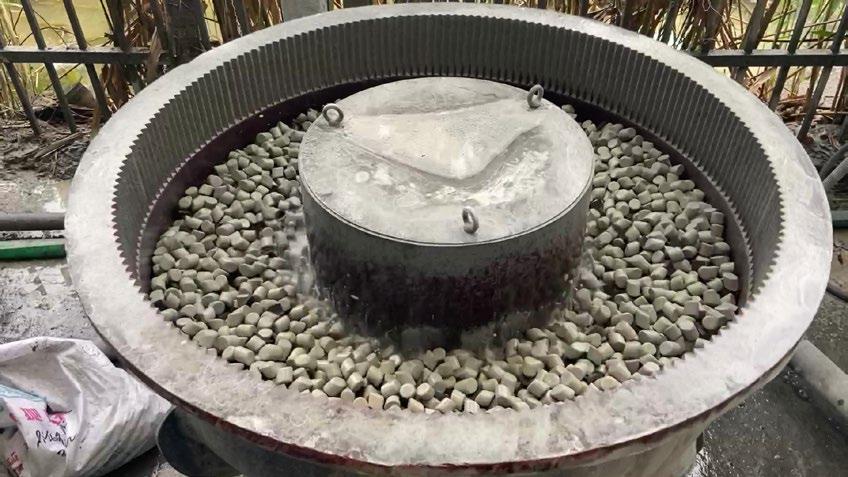

In the following, we will consequently apply two common test methods (Weibull and Palmqvist concepts) from the hardmetals and ceramics industry to gain a deeper understanding of the
grinding response and the production robustness of sintered Nd 2Fe 14B hard magnets. The need for such attempts was addressed within the topic ‘Advanced testing and characterisation methods’ above.
In the past, most German hard magnet producers preferred the axial magnetic alignment, where the field is parallel to the compaction direction, due to its advantageous die cavity filling behaviour. NNS Nd 2Fe 14B hard magnets were produced via volumetric die cavity filling and the use of the axial magnetising coils to induce the poorly flowing Nd 2Fe 14B powder into the die cavities, as well as for axial magnetic alignment. The anisotropic volumetric shrinkage ε 3D was considered during the design of the compaction tools resulting in a minimum of subsequent machining steps (only grinding). This combination has a relatively high productivity and multi-die cavity compaction tools were developed.
The drawback of this variant is the inferior degree of magnetic polarisation. Axially aligned Nd 2Fe 14B particles exhibit a certain instability during compaction. They rotate (like a compass needle) into the desired direction, but collapse to a certain degree when axially loaded [11]. The resulting mismatched angle κ between the symmetry axis and the preferred magnetising direction can be measured with a Helmholtz coil. However, this variant lost its importance due to the advantages of the Chinese machining (slicing) process. Regardless, due to its brittleness, there is an omnipresent possibility of damage to the sintered Nd 2Fe 14B

hard magnet during machining or handling as shown in Fig. 2. The low fracture toughness K Ic values of sintered Nd 2Fe 14B hard magnets are the weak point of this material group, thus encouraging the adoption of injection moulded bonded Nd 2Fe 14B hard magnets which are much more robust and, therefore, preferred for very complex shapes.
Chamfering and tumbling steps are needed to smooth the edges of the sintered Nd 2Fe 14B hard magnets to reduce delicate edges and remove residual flash from the grinding, as shown in Fig. 3. Moreover, their coating response for corrosion protection will be positively affected (less debris and cleaner baths). A circumferential chamfer around the edges improves the subsequent assembly procedure (handling and realisation of clearance or press fits).
Approximately 15% of the sintered Nd 2Fe 14B hard magnet blocks are converted into scrap (swarf, end slices and damaged magnet blocks) [12]. As seen in Fig. 4, all side surfaces are diamond wire cut to generate geometrically perfect Nd 2Fe 14B hard magnet blocks with parallel faces. This is needed for the subsequent handling, alignment, fixing, clamping and machining (slicing) operations.
The degree of oxidation of the current scrap material determines different recycling steps. The higher the degree of oxidation, the longer the recycling loop. Damaged sintered Nd 2Fe 14B hard magnet blocks could be (short loop recycling) H 2 decrepitated and jet milled again (but to a lower grade), whereas fully oxidised Nd 2Fe 14B powder must be processed with hydro- or pyrometallurgical processing methods.
A diamond wire cutting machine of Bejing Sinopoly Technology for multiple slicing cuts is shown in Fig. 5. These machines and the necessarily low labour costs are relatively cheap in China. This explains China’s focus on machined non-NNS sintered Nd 2Fe 14B hard magnet blocks.
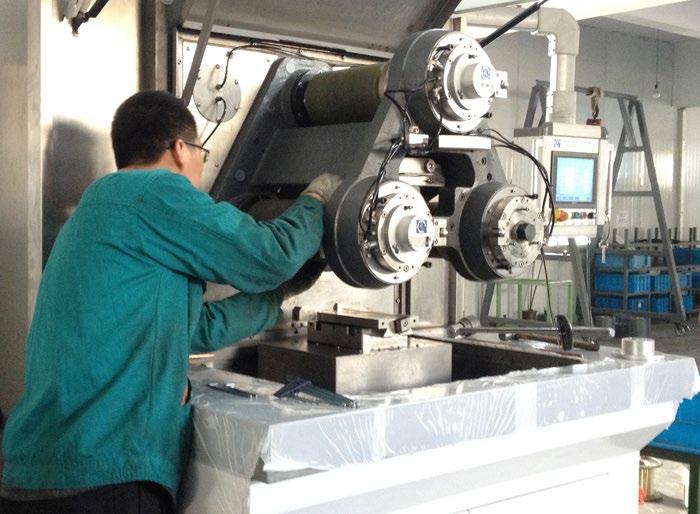
Sintering and shrinkage response depend on the degree of magnetic alignment. Due to more and larger grain boundary contacts in the magnetic alignment direction (c-axis or easy axis), there is a higher contribution of grain boundary diffusion which results in an anisotropic volumetric shrinkage ε 3D. In addition to the anisotropic volumetric shrinkage ε 3D due to the different crystallographic alignments (c-axis or easy axis in width-direction: ε b ≈ 45%, ε l ≈ 13% and ε h ≈ 10%), there is a deviatoric shape deviation which can be related to the O 2 pick-up.
Oxygen residuals in the vacuum sintering atmosphere (e.g. from new trays and supporting plates or from minor leakages) react with the Nd to neodymium oxide (NdO) which will not undergo LPS afterwards. The oxidised outer shell is thermally stable, sintering inactive and remains as a stiff outer layer which constrains free sintering and shrinkage whilst the unaffected bulk material will sinter and shrink accordingly. This effect leads to the characteristic distortion wedges at the triple corners of the sintered Nd 2Fe 14B hard magnet blocks, as shown in Fig. 6. Deviatoric shape
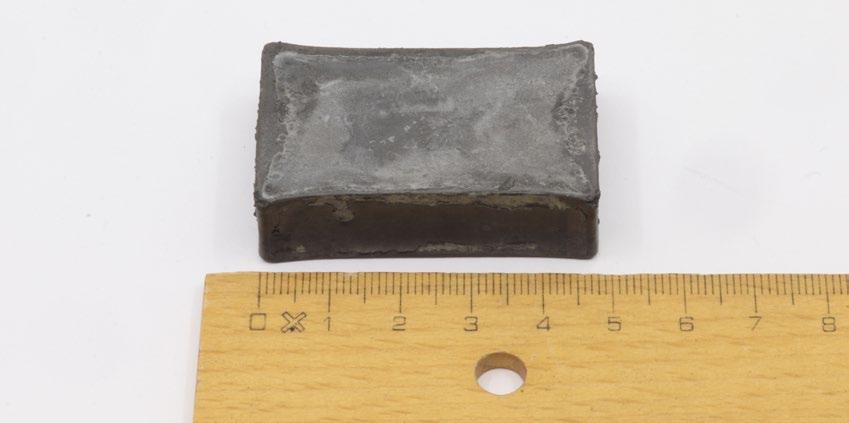

Fig. 7 Glued and stacked Nd 2Fe 14B hard magnet slices on ceramic plates waiting for further slicing (Courtesy GKN Powder Metallurgy Engineering GmbH)
deviation free sintering is therefore a simple indicator (together with a certain anisotropic volumetric shrinkage ε 3D) of a good sintering atmosphere [13].
Even with a careful vacuum sintering atmosphere control and the apparent elimination of undesired deviatoric shape deviations, the outer shell (to a depth of approx. d ≈ 4 µm) of the sintered Nd 2Fe 14B hard magnet blocks is magnetically softer compared to the bulk material and does not contribute much to the maximum energy product (BH) max. [14]. This is the reason why very thin hard magnets are still made from Sm 2Co 17. Sintered Sm 2Co 17 hard magnets have a higher Curie temperature TC, a resulting higher maximum operation temperature MOT (rule of thumb: MOT ≈ TC/3 to MOT ≈ 2 × TC/3 for common Nd 2Fe 14B hard magnet grades with TC ≈ 312 °C or higher [15]) and do not show a step in the demagnetisation curve [16]. To maintain the strict tolerance specifications of the customers, further grinding steps with diamond grinding wheels are needed. Therefore, the machinability of sintered Nd 2Fe 14B hard magnets is a subject with a high optimisation potential regarding cost and performance.
The production of segmented Nd 2Fe 14B hard magnets requires even more machining expertise and effort [17]. At high operation frequencies f, there is a considerable heating effect
and temperature gain Δ �� due to the induced eddy current losses (‘skin effect’ and resulting AC-losses). This effect is very prominent in soft magnetics where isolated FeSi electrical sheets of a high electrical resistivity R are laminated on each other to reduce the effective thickness d*. The same principle can also be applied to hard magnets, in order to maintain good magnetic characteristics below the maximum operation temperature MOT.
It is evident that this process applied on small sintered Nd 2Fe 14B hard magnet blocks is a challenge. Individual thin (of a thickness of approx. t ≈ 2 mm to t ≈ 4 mm) Nd 2Fe 14B hard magnet slices must be diamond wire cut, ground, cleaned, handled, glued, stacked, cured, and finally ground to the needed balancing and surface quality. The attachment of those sensitive (thin and brittle) Nd 2Fe 14B hard magnet slices is done via temporary glueing on ceramic plates, as shown in Fig. 7, instead of mechanical clamping. The removal of residual glue is done with a subsequent soaking procedure.
Daily working experience in the field of PM shows that the handling, manipulation and machining of green compacts is a difficult task, often accompanied by a significant scrap rate due to green damage. The green strength σ g with its scattering behaviour (in terms of a 3-PointBending strength σ 3-P-B) is assumed to be a good indicator regarding green compacts’ robustness during production to resist handling, manipulation and machining stresses. In the following, this experience is transferred to the mechanical characterisation of sintered Nd 2Fe 14B hard magnets over the Weibull distribution (2-parametric) with its characteristic strength σ 63.2% (location parameter) and Weibull modulus m (scattering parameter).
Moreover, one of the important theoretical grinding parameters, the critical grain depth of cut h cu, crit., can be correlated with several material parameters. In the ceramics industry, it is common to investigate the grinding behaviour of a material
over a single grain scratchingtest where the formation of a chip and the conditions of the material separation are studied in detail. The deterministic geometry of that single (e.g. diamond) indentor simplifies the analysis compared to the chipping with geometrically undefined cutting edges. That parameter describes the transition from a ductile grinding regime (according to Professor Wilfried König) to a more brittle grinding regime (according to Professor Ernst Saljé) as [18, 19, 20, 21]:
It depends on Youngs modulus E (expressed in MPa), Vickers hardness H (expressed in MPa), and (plane-strain) fracture toughness K Ic (expressed in MPam 0.5). The factor 0.15 was derived by Bifano et al. and is valid for brittle materials [18, 19]. Since the grinding ductility (and the preferred condition – the ductile or brittle grinding regime – derived with the single grain scratchingtest) cannot be controlled within the grinding process, a further metric is needed to monitor the material removal regime. This can be achieved through the specific grinding energy E sg [22]. A potential relic of the ductile grinding regime during the machining of sintered Nd 2Fe 14B hard magnets is residual flash formation. Initial grinding trials have shown that residual flash formation is hard to suppress, resulting in the need to apply a chamfering and tumbling process afterwards to avoid edge chipping. The ratio (E/H) is characteristic for the formation of cracks in brittle solids and can be found in several formulations (e.g. for the derivation of the fracture toughness K Ic via the Palmqvist toughness method). If the critical grain depth of cut exceeds its critical value h cu = h cu, crit., lateral, radial and axial microcracks will appear which will lead to split off phenomena of whole grains and material clods with a deep material
damage. A ductile grinding regime produces smooth and virtually microcrack-free surfaces which do not require further polishing steps, whereas a brittle grinding regime needs sufficient polishing steps to remove the damaged material layer [20, 22].
In general, the ductile grinding regime (brittle grinding regime) is accompanied by elastic and plastic deformations and subsequent material separation by chipping (scratching or microcracking) [19, 21]. Depending on the infeed of the diamond grinding wheel, the grinding regime can be adjusted in both directions accordingly; a higher local processing temperature T in the contact zone and a higher hydrostatic pressure p increase materials’ ductility [21]. In practice, the critical grain depth of cut h cu, crit. can be reduced by decreasing the infeed of the diamond grinding wheel t grinding wheel
As shown in the equation below (derived by Kassen and Werner), a reduction of the grain depth of cut h cu can be achieved by the decreasing (increasing) of the numerators (denominators). The exponents, α , β and γ , and the coefficient k must be derived empirically (recommendation from Werner: α ≈ 1/3, β ≈ 1/3 and γ ≈ 1/6). They scale the strength of the individual influencing factors, which are the statistical number of cuts ((diamond) abrasive particle distribution and grit number) within the diamond grinding wheel C grinding wheel, the cutting speed (circumferential speed) of the diamond grinding wheel v grinding wheel, the diameter of the diamond grinding wheel d grinding wheel and the workpiece feed speed v workpience as [18]:

Diamond grain
Brittle
Throw-up
Deformed zone
Plastically deformed area
Radial crack
Lateral crack
Fig. 8 Transition from a ductile grinding regime with h cu < h cu, crit. (left) to a brittle grinding regime with h cu > h cu, crit. (right) which is more prone to edge chipping (Courtesy [18])

Si 3N 4, grade SN-A
Si 3N 4, grade SN-B
High grit number
800 grit
Low grit number
Grinding study on ceramics with varying grit numbers of the diamond grinding wheels (silicon nitride Si3N 4 of two grades, SN-A and SN-B)
Fig. 9 Effect of the grit number of the used metal bond diamond grinding wheels on the surface roughness Rz and the characteristic strength σ63.2% (in terms of a 4-Point-Bending strength σ4-P-B) of two different Si 3N 4 grades (SN-A and SN-B), (Courtesy [23])
Fig. 8 exemplifies the two different material separation regimes.
From the ceramics industry (mostly derived from silicon nitride Si 3N 4), it is known that the final grinding step has a major effect on the characteristic strength σ 63.2% and the corresponding Weibull modulus m. The grit number (size
of the abrasive particle distribution) of the diamond grinding wheel is assumed to be the dominant factor. An increasing grit number leads to a diminishing (diamond) abrasive particle size d, resulting in a lower surface roughness Rz and higher values for the characteristic strength σ 63.2% and the corresponding Weibull modulus m as shown in Fig. 9. In Ductile

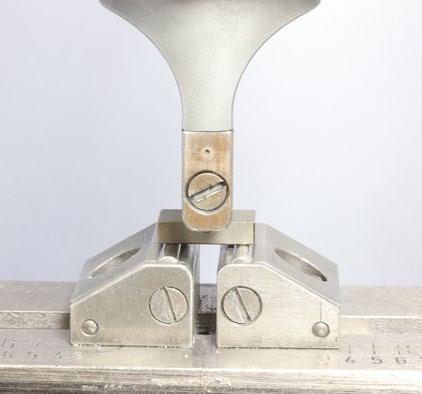
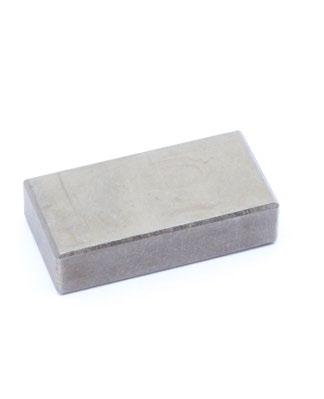
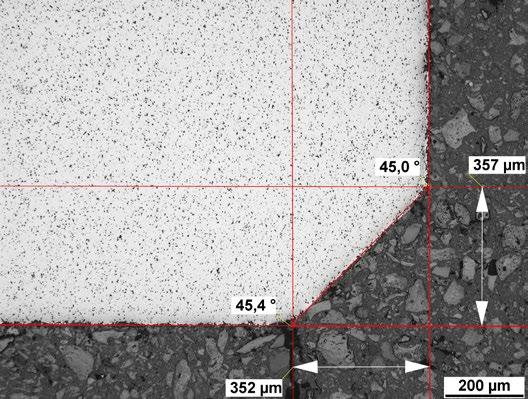
Fig. 10 3-P-B testing procedure on a sintered Nd 2Fe 14B hard magnet with an applied support span distance of
15 mm (left), used rectangular geometry with its dimensions of the length l ≈ 20 mm, width b ≈ 10 mm and height h ≈ 5 mm height (centre) and the corresponding chamfer with chamfer angles of ζ ≈ 45° and chamfer lengths of x ≈ 0.35 mm (right) (Courtesy GKN Powder Metallurgy Engineering GmbH)
general, metal bond diamond grinding wheels are recommended with a #500 grit number or higher [23]. Moreover, the sintering quality of the base material is also relevant. The higher the sintered density ρ , the better the grinding result.
The arguments from above can be summarised within the working hypothesis: The machining (diamond wire cutting, grinding, chamfering and tumbling) response of sintered Nd 2Fe 14B hard magnets and its robustness in terms of scrap rate depend on the chemistry and grain size d which can be characterised with certain stiffness, strength, scattering, hardness, toughness and density parameters. Therefore, the following parameters will be discussed more in detail:
• Youngs modulus E (taken from manufacturers’ data sheet as metric for the stiffness)
• Characteristic strength σ 63.2% (obtained from an assumed Weibull distribution (2-parametric) as metric for the strength)
• Weibull modulus m (obtained from an assumed Weibull distribution (2-parametric) as metric for the scattering)
• Vickers hardness H (as metric for the hardness)
• (Palmqvist) fracture toughness K Ic (as metric for the toughness)
• Porosity f (as metric for the density ρ )
Even if this investigation is focused on sintered Nd 2Fe 14B hard magnets, it would be interesting to include hot deformed Nd 2Fe 14B hard magnets as a reference material, too. Due to their different production routes and magnetic alignment method, they exhibit a different microstructure with platelet-shaped grains with grain sizes of d < 1 µm [16, 24] resulting in a much higher Vickers hardness of approx. H ≈ 776 HV 1 (after hot pressing) and approx. H ≈ 682 HV 1 (after hot deformation), respectively (for a rough comparison: sintered Nd 2Fe 14B hard magnets exhibit a Vickers hardness of approx. H ≈ 600 HV 1).
It is well known that any machining steps on hot deformed Nd 2Fe 14B hard magnets should be avoided (and in turn favouring NNS production without machining) due to its intrinsic brittleness (note the multiple inverse effects of the hardness H in the formula for the critical grain depth of cut h cu, crit. from above).
Hot deformed Nd 2Fe 14B hard magnets exhibit a fibrous slate fracture type which hinders edge-chipping-free grinding [25, 26].
Strength, scattering and toughness assessment
Sintered Nd 2Fe 14B hard magnets belong to the intermetallics material family. Intermetallic compounds are
known to be very hard and brittle. As mentioned before, these materials are mechanically characterised by their stiffness, strength, properties scattering, hardness, toughness and density. The thermal conductivity λ and the coefficient of thermal expansion CTE are also of relevance, because they can be combined with the mechanical parameters – the Youngs modulus E and the characteristic strength σ 63.2% – to the so-called thermal shock resistance R:
Tested
sintered Nd 2Fe 14B
hard magnet grades
Since GKN Powder Metallurgy started its own sintered Nd 2Fe 14B hard magnet development in 2022, some investigations and methodology developments had been initiated in parallel to save research and development time. Therefore – and due to the lack of sufficient self-produced sintered Nd 2Fe 14B hard magnets during this time – the present study was realised with commercially available and as-delivered (ground and passivated (not coated) surface condition with chamfered edges) rectangular sintered Nd 2Fe 14B hard magnet blocks from Repumag Magnetic Materials Co., Ltd. (China) with the nominal dimensions length l ≈ 20 mm, width b ≈ 10
Table 6 Magnetic properties at Room Temperature (RT = 23°C), e.g. of the remanence B r, the normal coercivity H cB, the (intrinsic) coercivity H cJ and of the maximum energy product (BH) max., taken from the manufacturers’ data sheets from Repumag Magnetic Materials Co., Ltd. It can be seen that the maximum energy product (BH) max. (expressed within the CGS-system of units) is taken for the alphanumerical coding of the grades whereas the letter “N” stands for Nd 2Fe 14B hard magnet and the suffix letters for its temperature resistance (“/” = “Normal Temperature” (MOT ≈ 80°C), “M” = ”Medium temperature” (MOT ≈ 100°C), “H” = ”High temperature” (MOT ≈ 120°C), “SH” = ”Super-High temperature” (MOT ≈ 150°C), “UH” = ”Ultra-High temperature” (MOT ≈ 180°C), “EH” = ”Extreme-High temperature” (MOT ≈ 200°C) and “AH” = “Abnormal-High temperature” (MOT ≈ 230°C).

Table 7 Chemical composition of the two investigated sintered Nd 2Fe 14B hard magnet grades Repumag Magnetic Materials Co., Ltd. N50M and N42SH derived with AES of a mass sample of m ≈ 0.5 g. Traces of Ho, Cu, Zr and other elements as well as impurities of O, N and C are not shown here. It can be seen that LREE’s Nd and Pr appear in combination (difficult to separate, in the past both elements were assumed to be a single element with the name didymium (Di), Greek for ‘twin of lanthanum (La)’) whereas grade N42SH offers the HREE Dy, too. The higher Co- and Dy-contents of grade N42SH are due to its higher temperature resistance, expressed in terms of the maximum operation temperature MOT. More Nd-rich grain boundary ε -phase is expected for grade N42SH due to its chemistry with TREE ≈ 30% (N50M: TREE ≈ 28%)
mm and height h ≈ 5 mm as shown in Fig. 10 (centre).
The surface roughness values Ra and Rz are comparable with Ra ≈ 0.9 µm and Rz ≈ 5.7 µm (grade N50M) and Ra ≈ 0.9 µm and Rz ≈ 5.6 µm (grade N42SH). According to Fig. 10 (right), the chamfers were ground with grinding marks perpendicular to the chamfer dimension and exhibit chamfer angles of ζ ≈ 45° and chamfer lengths of x ≈ 0.35 mm. The magnetic properties are given in Table 6 in terms of its Upper and Lower Specification Limits (USL and LSL) and the current tested values of the batch and were taken from the manufacturers’ data sheets. Since there is no simple correlation between the magnetic properties and the chemical composition, each sintered Nd 2Fe 14B hard magnet grade was internally investigated via Atomic Emission Spectroscopy (AES). The results are shown in Table 7.
The
3-P-B testing procedure of sintered Nd 2Fe 14B hard magnet grades
For an adequate approximation of the subsequent Probability Density Function (PDF), a larger sample size
n is required. From each sintered Nd 2Fe 14B hard magnet grade, a sample size of n = 100 specimens were broken. The equipment is shown in Fig. 10 (left). Details of the 3-P-B testing procedure on hardmetals and ceramics, e.g. the effect of the relative humidity RH, temperature T, surface roughness
“The characterisation of hard and brittle materials is more sensitive and error prone. Therefore, there are some special testing methods and procedures which have been successfully applied to ceramics for decades.”
Testing configuration for the derivation of Youngs modulus E and the fracture strengths R m or σ B
Surface quality
Metals
Tension (with fixation/gripping)
Ground or polished (little effect)
PDF to implement the skewness and the scattering Gaussian (normal)
Symmetry of the stress strain curve (elastic domain and tensioncompression anisotropy)
Symmetric (Rp 0.2, tension ≈ Rp 0.2, compression)
Ceramics
Bending (without fixation/grinding)
Ground or polished (dramatic effect)
Weibull (2-parametric)
Asymmetric (R m, tension << R m, compression, R m ≈ R p0.2)
Table 8 Some special testing methods and procedures based on general materials’ behaviour (metals: more ductile, ceramics: more brittle)
Ra and Rz, geometry or chamfer preparation, can be found in [27, 28]. It is important to note that the support span distance of l 1 ≈ 15 mm was chosen according to the available geometry (l ≈ 20 mm) and does not follow the recommendation of [27, 28]. The standards recommend a support span distance of l 1 ≈ 20 mm (ceramics [27]) and l 1 ≈ 14.5 mm (hardmetals) [28]), respectively. The characterisation of hard and brittle materials is more sensitive and error prone. Therefore, there are some special testing methods and procedures which have been successfully applied to ceramics for decades (Table 8 provides a quick overview of the differences.)
Generally, the common tensile testing configuration (T configuration) is avoided due to potential superimposed bending moments and the problems related to the gripping methods. Unconstrained bending testing configurations (3-P-B and 4-P-B configurations, as well as some special ball configurations) or Brazilian disc testing configurations are used as an alternative. Since surface defects are very critical, ground and polished surfaces are needed to extract the intrinsic bulk material behaviour. The asymmetric tension-compression behaviour of ceramics leads to the well-known design rule to minimise damaging (positive) tensile stresses σ + , whereas lower (negative) compression stresses σ - can be tolerated [29, 30, 31, 32, 33].
The Weibull concept
Ceramics and intermetallic compounds are hard and brittle. The ionic or covalent bond atomic structure and the lack of plasticityenabling dislocations are responsible for the brittle behaviour of ceramics. The lack of any macroscopic plasticity (and crack branching or crack arresting effects) is due to the fact that all defects (internally within the bulk material and externally at the surface) exhibit their sharpest effect as predicted with the methods of the classical Linear-Elastic Fracture Mechanics (LEFM) and Neuber’s theory of notch stresses. The defect population within a technical material is also considered to be the reason why the theoretical strength σ th ≈ 1/10 × E >> R m is so much higher than its macroscopic fracture strength R m (tensile strength). Residual stresses from processing do not relax. The lack of plasticity, which could reduce any peak stress or stress intensity, explains the stronger scattering and PDFs loss of symmetry.
PDFs of common ceramics are skewed and broader, which leads to the need to consider the whole PDF and to define local component strength values. The theoretical statistical background of the Weibull distribution is based on a series connection of k volume elements whose failure times t k (or fracture strengths R m or σ B) obey a rank distribution, which is dominated
by the minimum failure time t min = min(t k). This dominance of a single volume element leads to the extreme value distribution and, in turn, leads to the often-used synonym ‘weakest link’ theory, metaphorically speaking, as a series connection of chain links. The failure of brittle ceramics always has its origin within a small highly loaded volume Vcrit. which is populated with defects, whereas the process zone of a ductile material is much larger. The higher effective fracture strength R m (tensile strength) of a hierarchic steel wire rope of a given cross-section and steel grade compared to its monolithic counterpart of a steel rod can also be explained with the ‘size effect’ or ‘volume effect’ as a consequence from the ‘weakest link theory.’ In contrast to the dominance of a single volume element, the Gaussian (normal) distribution was formulated to deal with the sum of many individual random effects. The Weibull distribution (type III) belongs to the family of asymptotic extreme value distributions together with the Gumbel distribution (type I) and the Fréchet distribution (type II) which were derived to describe extreme events associated with natural hazards, e.g. the Gumbel distribution for the prediction of river floods [34, 35, 36]. With the adjustment of the Weibull modulus m, various other PDFs can be approximated: • m = 1: Exponential distribution with a constant failure rate [34, 35, 36]
• m = 2: Rayleigh distribution with an increasing failure rate [36]
• m ≈ 3.6: Gaussian (normal) distribution with an increasing failure rate and a skewness of γ 1 ≈ 0 [34, 35, 36]
Due to its flexibility, it has found a wide range of applications in various fields of engineering:
• General survival, failure and reliability analysis
• Brittle material strength analysis
• Ball and roller bearing analysis (used as a standard)
• Powder particle size analysis (under the earlier name RosinRammler-Sperling-Bennett distribution)
The main advantage of the Weibull distribution (2- or 3-parametric) to describe the failure of hardmetals, ceramics or any other hard and brittle material group, e.g. intermetallic compounds or sintered Nd 2Fe 14B hard magnets, is not the better approximation of the PDF; it is its ability to predict the size effect or volume effect that means the consideration of different specimen sizes, stress states and testing configurations. This is an inherent feature of the Weibull concept.
The Weibull distribution (2-parametric) is defined with two parameters [37, 38]: the characteristic strength σ 63.2% (read at a failure probability of P f = 63.2%) and the Weibull modulus m. The first parameter describes the location (similar to the arithmetic mean x of the Gaussian (normal) distribution) and the second parameter describes the dispersion (similar to the variance s 2 of the Gaussian (normal) distribution) and the skewness γ 1. Common Weibull moduli of ceramics are in the range of m ≈ 5 (high scattering) to m ≈ 20 (low scattering). Very reliable ceramic grades exhibit values of m > 20 [32] whereas steels show a further reduction of the scattering and exhibit values of m > 50 [39]. The higher the Weibull modulus m, the better.
The statistical evaluation was done with the help of the Weibull concept. The Weibull plots (2-parametric) and
Gaussian (normal) plots below were calculated with Origin and Minitab as well [37, 38]. This is of importance since the algorithms for the estimation of statistical parameters (characteristic strength σ 3-P-B, 63.2% and Weibull modulus m) may differ from each other (ranking regression score methods according to Blom, Benard, Hazen (modified Kaplan-Meier), Van der Waerden (Herd-Johnson) or Kaplan-Meier, estimation methods according to the maximum-likelihood method, the method of least squares or the simplified method, according to Gumbel) [33, 34, 35, 36, 39, 40, 41]. As a rule of thumb, the maximum-likelihood method (the method of least squares) is better for sample sizes of n > 100 (n < 100) [35, 41].
The regression method according to the method of least squares tends to predict larger Weibull moduli m (underestimation of the scattering) [35, 41]. In these cases, both software packages deliver the same statistical parameters. The strength raw data must be ordered in an increasing manner and the corresponding rank failure probability P f, i must be allocated accordingly. The lowest strength value σ min (highest strength value σ max) gets the lowest failure probability P f, i (highest failure probability P f, i). Blom’s score-method (default choice in OriginTM) was used for the rank with [37, 38]:
The threshold strength σ 0 can be interpreted as minimum strength. That minimum strength (respectively the corresponding defect sizes) must be examined with NonDestructive Testing (NDT) methods or proof testing to define a sharp cut off of the PDF. Since the existence of a threshold strength σ 0 is hard to verify, it is commonly set to σ 0 = 0 MPa. A common way of proof testing is the application of a preloading, e.g. of a stress of σ 1% (P f = 1%), prior to the operational loading which screens out the weakest samples of the population. This is equivalent to the assumption of the existence of a threshold strength σ 0 = σ 1% (minimum strength) within the 3-parametric formulation of the Weibull distribution. However, a linear-elastic, memory and damage free material condition is assumed. Therefore, the 3-parametric formulation is simplified to the more common 2-parametric form as:

The general form of the Weibull distribution (2-parametric) with its term to describe the size or volume effects is given as [28, 44, 45]:
= ( 0.375) ( +0.25)
= ( 0.375) ( +0.25)
= ( 0.375) ( +0.25)
Nevertheless, most textbooks use Benard’s score-method (the default choice in MinitabTM) of the median rank as [35, 41]:
= ( 0.3) ( +0.4)
= ( 0.375) ( +0.25) = ( 0.3) ( +0.4)
= ( 0.3) ( +0.4)
= ( 0.3) ( +0.4)
Moreover, the maximum-likelihood method (another default choice in Origin and Minitab) was used for the parameter identification. All formulas below can be found in various textbook sources, e.g. in [28-43]. For a better understanding, the Weibull concept is recapitulated in the following. The failure probability P f = 1 - Ps of the Weibull distribution (3-parametric) for σ > 0 is given as:
Here, the highly loaded volume Vcrit. is normalised with the help of an arbitrary reference volume V 0, e.g. V 0 = 1 mm³. For the construction of the Weibull plot (2-parametric) from experimental data a linearisation is needed by taking the double natural logarithm (ln):
Table 9 Derived ratios of the investigated testing configurations as shown in Fig. 17
That equation is used for the regression method according to the method of least squares. In this case, the left-hand side is plotted over ln( σ ). The slope of the linear equation corresponds to the Weibull modulus m and the characteristic strength σ 63.2% can be taken from P f = 63.2% (which corresponds to the only zero point in the transformed formulation) [29, 30, 33, 39]. The decadic logarithms (log 10) can also be used alternatively. Both transformations are common in statistical software packages like Origin (log 10) and Minitab (ln). In the case of the decadic logarithm (log 10), the Weibull modulus m can be calculated as [43]:
ingly, a bit higher. The 3-P-B strength σ 3-P-B is defined over the maximum axial force F, the support span distance l 1, the width b and the height h of the test specimen as [28, 44]:
The corresponding highly loaded volume for the 3-P-B configuration V 3-P-B, crit. is [28, 44]:
The highly loaded volumes Vcrit. reflect the volume of the test specimen, the (positive) tensile stresses
σ + ((negative) compressive stresses
σ - are ignored), the relative stress gradient χ * (3-P-B: χ * ≈ 2/h) of the linear-elastic stress distribution from the applied loading case and a metric which describes the defect population (Weibull modulus m). One should bear in mind that (positive) tensile stresses σ + are the governing and damaging stresses since they can open up existing cracks. Therefore, (negative) compressive stresses σ - have to be excluded from the calculation of the highly loaded volumes Vcrit.. A homogenous tensile stress distribution over the entire sintered Nd 2Fe 14B hard magnet block would lead to [44]:
The characteristic strength σ 63.2% is without a deeper meaning but offers a simple calculation as:
Its definition is similar to the median strength σ 50%, but, accord -
The calculation of the 4-P-B strength
4-P-B includes the inner support span distance l
and is defined as [29, 44]:
The corresponding highly loaded volume for the 4-P-B
In that equation, l 1 is interpreted as length between the gripping ends of the T configuration. Volume elements beyond the support span distance or the gripping ends are unstressed and do not contribute to the highly loaded volume Vcrit. Compressively stressed volume elements are also ignored. In general, the highly loaded volume Vcrit. is integral to the risk of rupture R R [19]. The size or volume effects can be taken into consideration with (here just denoted as condition 1 and condition 2):
Table 10 General parameters, Weibull parameters (2-parametric) and Gaussian (normal) parameters of the two investigated sintered Nd 2Fe 14B hard magnet grades Repumag Magnetic Materials Co., Ltd. N50M and N42SH (3-P-B testing procedure). In addition to the arithmetic mean x values, the minimum x min. values and the maximum x max. values are also given
For an infinitesimally small, highly loaded volume V 2 → 0, the corresponding strength becomes σ 2 → ∞, which is unrealistic. In this case, another damage mechanism, e.g. plastic yielding, will be dominant, and the Weibull concept fails. The failure of a Weibull material needs consideration of volume. In analogy, 4-P-B strength σ 4-P-B values can be converted into 3-P-B strength σ 3-P-B values (here defined over the characteristic strength of the Weibull distribution
63.2%) as [44]:

Repumag Magnetic Materials Co., Ltd. N50M, n=100, Weibull distribution
Geometry:
Length: I≈20 mm
Width: b≈10 mm
Height: h≈5 mm
Condition: Ground
Passivated (not coated) Chamfered
Loading: 3-Point-Bending (3-P-B)
Support span distance I 1 ≈15 mm

It must be noted that identical Weibull moduli m are assumed for both bending configurations. This is a simplification since the Weibull modulus m is neither a material constant nor an intrinsic material property [45].
Results and discussion
The results are summarised in Tables 9 and 10 and Figs. 11-17. The results are interesting since the sintered Nd 2Fe 14B hard magnet grade with the highest characteristic strength in the 3-P-B configuration
σ 3-P-B, 63.2% also delivers the highest Weibull modulus m. The higher the Weibull modulus m, the lower the scattering.
From the data given in Table 10, it can be seen that a higher Weibull modulus m corresponds to a lower scattering, e.g. expressed over the standard deviation s of the Gaussian (normal) distribution. The higher the Weibull modulus m (Weibull distribution), the lower the standard deviation s (Gaussian (normal) distribution). Generally, it is believed that a higher strength is always accompanied with a higher scattering. Therefore, the Nd 2Fe 14B hard magnet grade N42SH exhibits a superior strength behaviour compared to its N50M counterpart.
Fig. 11 Histogram of counts n i of the measured 3-P-B strength σ3-P-B values of sintered Nd 2Fe 14B hard magnets of the grade Repumag Magnetic Materials Co., Ltd. N50M. The PDF is asymmetric with its left-skewed tail and was, therefore, approximated with a Weibull distribution (2-parametric). Due to its shape, a Weibull modulus of m > 3.6 was expected
Gaussian (normal) plot of sintered Nd2Fe 14B hard magnets
Grade: Repumag Magnetic Materials Co., Ltd. N50M x =377.90741 MPa s=32.15004 MPa

Geometry:
Length: I≈20 mm
Width: b≈10 mm
Height: h≈5 mm
Condition: Ground
Passivated (not coated) Chamfered
Loading: 3-Point-Bending (3-P-B) Support span distance I 1 ≈15 mm
Fig. 12 Gaussian (normal) plot of the derived 3-P-B strength σ3-P-B values of sintered Nd 2Fe 14B hard magnets of the grade Repumag Magnetic Materials Co., Ltd. N50M. Significant deviations from linearity correspond to the identified asymmetry of the PDF with its left-skewed tail
The cause-and-effect chain is not clear yet, but it seems that the higher Co- and Dy-contents could be the reason. More Nd-rich grain boundary ε -phase (grade N42SH: TREE ≈ 30%) could surround the Nd 2Fe 14B grains and act as a bonding. The Nd-rich grain boundary ε -phase (and Nd, Pr and Ho as well, Tb is much harder) is soft, more ductile and harder to jet mill, which is one of
the reasons (in addition to the reduction of the milling time, the energy consumption, the O 2 pick-up and a better sintering response) to apply a H 2 decrepitation process prior to jet milling. Nd hydrides are harder, more brittle and more able to be crushed. This hypothesis – that toughness is the determinant of strength – might explain the better strength behaviour. Compared with common steel
Weibull plot (2-parametric) of sintered Nd2Fe 14B hard magnets
Grade: Repumag Magnetic Materials Co., Ltd. N50M
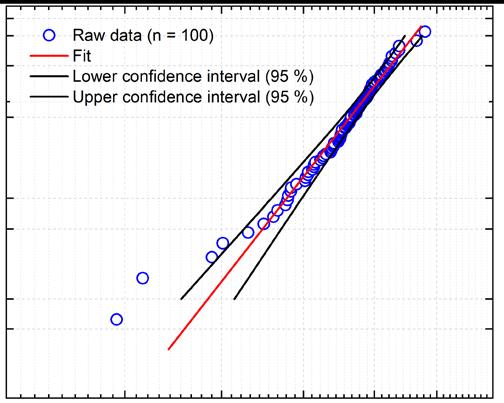
Geometry:
Length: I≈20 mm
Width: b≈10 mm
Height: h≈5 mm
Condition: Ground Passivated (not coated) Chamfered
Loading:
3-Point-Bending (3-P-B) Support span distance I 1 ≈15 mm
Fig. 13 Weibull plot (2-parametric) of the derived 3-P-B strength σ3-P-B values of sintered Nd 2Fe 14B hard magnets of the grade Repumag Magnetic Materials Co., Ltd. N50M. The approximation is virtually linear – with the exception of n = 4 outliers – which indicates a much better agreement compared with the Gaussian (normal) distribution
Repumag Magnetic Materials Co., Ltd. N42SH, n=100, Weibull distribution
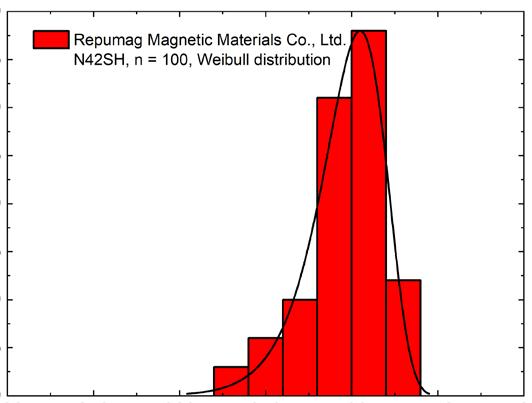
Geometry:
Length: I≈20 mm
Width: b≈10 mm
Height: h≈5 mm
Condition:
Ground
Passivated (not coated) Chamfered
Loading:
3-Point-Bending (3-P-B) Support span distance I 1 ≈15 mm
N42SH). They were measured via Archimedes’ method with a paraffin infiltration to close potentially open pores and to avoid corrosion. Since the theoretical density ρ 0 values are not exactly known due to the complex phase composition and the actual chemical composition with a variety of elements and undesired impurities, the residual porosity f cannot be estimated via the ruleof-mixtures. Additionally, an optical estimation of the residual porosity f from the polished microstructure is hardly possible due to the existence of corrosion products and other dark artefacts. A slight trend towards higher theoretical densities ρ 0 can be expected for higher Co- and Dy-contents (for higher maximum operation temperatures MOT) due to their high theoretical densities of ρ 0, Co ≈ 8.90 g/cm³ and ρ 0, Dy ≈ 8.56 g/ cm³, respectively. Therefore, the theoretical density is assumed to be ρ 0 ≈ 7.70 g/cm³ and the derived density ρ values are assumed to be typical and will not be further discussed.
Fig. 14 Histogram of counts n i of the derived 3-P-B strength σ3-P-B values of sintered Nd 2Fe 14B hard magnets of the grade Repumag Magnetic Materials Co., Ltd. N42SH. The PDF is asymmetric with its left-skewed tail and was, therefore, approximated with a Weibull distribution (2-parametric). Due to its shape, a Weibull modulus of m > 3.6 was expected
or hardmetal grades, the obtained characteristic strength levels in the 3-P-B configuration are very low with
σ 3-P-B, 63.2% ≈ 391 MPa (grade N50M) and
σ 3-P-B, 63.2% ≈ 406 MPa (grade N42SH), respectively.
The derived Weibull moduli of m ≈ 16 (grade N50M) to m ≈ 23 (grade N42SH) are in a reasonable range compared with common ceramic and hardmetal grades. In the ceramics industry, Weibull moduli between m ≈ 5 to m ≈ 20 are considered as typical
[30]. Since the actual Weibull moduli are larger than m ≈ 3.6, it is evident that a symmetric distribution with a skewness of γ 1 ≈ 0, e.g. the Gaussian (normal) distribution, is not applicable. The Vickers hardness H values are in a reasonable range with H ≈ 617 HV 1 (grade N50M) and H ≈ 619 HV 1 (grade N42SH) and do not show any anomalies. The same holds true for the density ρ values; they vary between ρ ≈ 7.53 g/cm³ (grade N50M) to ρ ≈ 7.55 g/cm³ (grade
However, the Weibull concept is not without its doubts. One major criticism point is the formation of new defects and cracks (damage evolution) during loading. That means the defect population is not constant as ad-hoc assumed. Detected Acoustic Emission (AE) signals during the bending loading of a ceramic specimen indicate that new defects and cracks (damage evolution) are generated at stress levels of σ ≈ 0.2 × σ B i.e. much below the fracture strength. Moreover, the individual cracks should not interact; they are assumed to be independent of each other. This leads to the question as to how to interpret the Weibull modulus m. It is important to note that the Weibull modulus m is not a material constant, but rather reflects processing quality and all material inhomogeneities and the resulting defect distribution in combination with the applied loading. Internal defects as well as surface defects, e.g. from improper grinding conditions, will decrease the Weibull modulus m.
Recent numerical fracture mechanics research on distributed
ligaments within an infinite plate with co-linear cracks has shown that the Weibull modulus m reflects more the ligament distribution rather than the defect distribution if the cracks are larger than the ligaments (co-linear cracks). In the case of statistically distributed crack and ligament sizes, the Weibull modulus m will be the weighted average of both populations [45]. With these findings, it can be speculated whether grade N50M contains more internal defects – from the constitution of the microstructure and the phases (oxides, nitrides, carbides, free iron or pores) or from the processing (microcracks) – compared to grade N42SH. The macroscopic surface qualities (surface roughness values Ra ≈ 0.9 µm and Rz ≈ 5.7 µm (grade N50M) and Ra ≈ 0.9 µm and Rz ≈ 5.6 µm (grade N42SH)) were comparable. That means surface defects from the grinding are not considered as significant at this point.
Further microscopical analysis of the fracture surfaces is ongoing. The derived histograms of counts n i (see Figs. 11 and 14) of the derived 3-P-B strength σ 3-P-B values of both sintered Nd 2Fe 14B hard magnet grades N50M and N42SH exhibit asymmetric PDFs with left-skewed tails. That means there is an agglomeration of higher 3-P-B strength σ 3-P-B values at the upper end of the corresponding distribution in association with a long tail towards the lower end of the corresponding distribution. This asymmetric behaviour is a hint for an underlying Weibull behaviour. As a consequence, the Weibull plots (2-parametric) (see Figs. 13 and 16) exhibit a better agreement compared to the Gaussian (normal) plots (see Figs. 12 and 15), especially for higher failure probabilities P f. Moreover, a certain deviation from the linear progression can be seen in Figs. 12 and 15 (sigmoidal progression within the Gaussian (normal) plots). With the exception of a few outliers (n = 4), the raw data points of grade N50M lie within the 95% confidence interval of the Weibull distribution (2-parametric) (see Fig. 13). It is currently under microscopical investigation
Nd 2Fe 14B magnets: improving production robustness
Gaussian (normal) plot of sintered Nd2Fe 14B hard magnets
Grade: Repumag Magnetic Materials Co., Ltd. N42SH

Geometry:
Length: I≈20 mm
Width: b≈10 mm
Height: h≈5 mm
Condition: Ground
Passivated (not coated) Chamfered
Loading:
3-Point-Bending (3-P-B)
Support span distance I 1 ≈15 mm

Fig. 15 Gaussian (normal) plot of the derived 3-P-B strength σ3-P-B values of sintered Nd 2Fe 14B hard magnets of the grade Repumag Magnetic Materials Co., Ltd. N42SH. Significant deviations from linearity correspond to the identified asymmetry of the PDF with its left-skewed tail
Weibull plot (2-parametric) of sintered Nd2Fe 14B hard magnets
Grade: Repumag Magnetic Materials Co., Ltd. N42SH
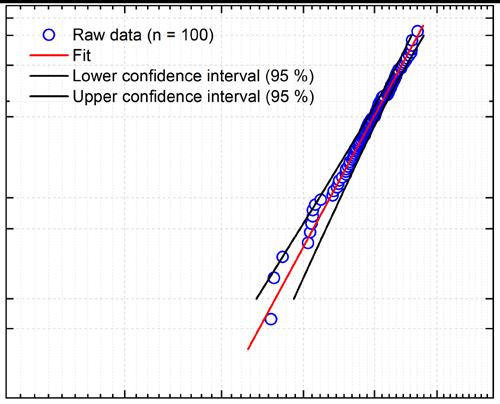
Geometry: Length: I≈20 mm
Width: b≈10 mm
Height: h≈5 mm
Condition: Ground Passivated (not coated) Chamfered
Loading:
3-Point-Bending (3-P-B)
Support span distance I 1 ≈15 mm
Fig. 16 Weibull plot (2-parametric) of the derived 3-P-B strength σ3-P-B values of sintered Nd 2Fe 14B hard magnets of the grade Repumag Magnetic Materials Co., Ltd. N42SH. The approximation is virtually linear which indicates a much better agreement compared with the Gaussian (normal) distribution
whether the n = 4 outliers exhibit a different, and rare, failure mode (different defect type compared to the common defect population) which leads to deviation from linearity. It is important to mention that the authors got the impression that AE events (AE bursts) were audible to the human ears during the 3-P-B testing procedure (a pre-loading is needed to activate/release the transient elastic waves) of the identified n = 4 outliers prior to its final
fracture. That detail could open the door to further AE testing and screening methods, e.g. to monitor the damage-free assembly, and for quality control purposes even if the transversal (shear) speed of sound of Nd 2Fe 14B hard magnets is lower c shear ≈ 2900 m/s compared with common ceramics (Al 2O 3: c shear ≈ 6400 m/s). AE events are well known from a few pure metals (‘tin cry’ of tin (Sn), indium (In), Zn etc.), steels (delayed fracture caused by Stress Corro -
Repumag Magnetic Materials Co., Ltd. N50M, m≈16, σ 3-P-B, 63.2% ≈ 391 MPa, V3-P-B, crit. ≈1.30 mm3
Repumag Magnetic Materials Co., Ltd. N42SH, m≈23, σ 3-P-B, 63.2% ≈ 406 MPa, V3-P-B, crit. ≈0.65 mm3
(MPa) Vcrit. (mm 3)
3-P-B configuration (reference) 4-P-B configuration T configuration
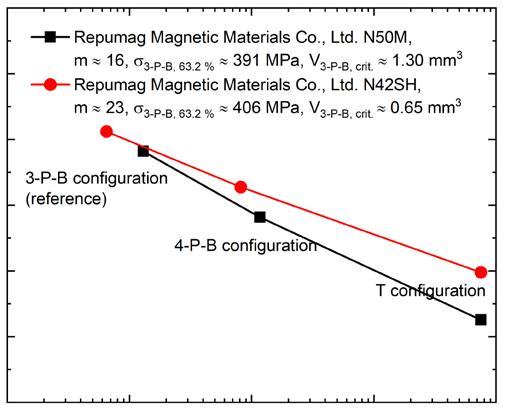
Geometry:
Length: I≈20 mm
Width: b≈10 mm
Height: h≈5 mm
Condition: Ground
Passivated (not coated) Chamfered
Loading:
3-Point-Bending (3-P-B) Support span distance I 1 ≈15 mm
effect) based on the chosen reference 3-P-B configuration are shown in Fig. 17 and Table 9. A significant drop can be seen dependent of the chosen testing configuration. The following proportionalities were derived.
Fig. 17 ‘Size effect’ or ‘volume effect’ predicted with the Weibull distribution (2-parametric) of sintered Nd 2Fe 14B hard magnets of the grades Repumag Magnetic Materials Co., Ltd. N50M and N42SH (assumption: m = const. for all testing configurations). The larger scattering (lower Weibull modulus m) of the grade Repumag Magnetic Materials Co., Ltd. N50M leads to a larger drop of the characteristic strength σ63.2% values as function of the highly loaded volume Vcrit.
sion Cracking (SCC)), woods (‘mine alert woods’ of older mines), glasses, ceramics and fibrous and composite materials. For grade N42SH, all raw data points (n = 100) lie within the 95% confidence interval of the Weibull distribution (2-parametric) (see Fig. 16).
The visually better agreement of the Weibull distribution (2-parametric) compared to the Gaussian (normal) distribution is supported by much better p-values from AndersonDarling test results (null-hypothesis significance testing). For the chosen Weibull distribution (2-parametric), the p-values for both Nd 2Fe 14B hard magnet grades N50M and N42SH are p > 0.25 (Gaussian (normal) distribution: p < 0.005), which means that the hypothesis ‘distribution = Weibull’ cannot be rejected. Note that the scale types of the axis vary with the chosen distribution (Weibull distribution (2-parametric): X-axis: log 10, Y-axis: Double log 10 reciprocal, Gaussian (normal) distribution: X-axis: Linear, Y-axis: Probability) [37].
An underlying Weibull distribution (3-parametric) and the existence of a threshold strength σ 0 can be denied due to the good linear correlation, which does not display as a curve on the Weibull plot (2-parametric).
The better agreement of the Weibull
plots (2-parametric) (see Figs. 13 and 16) to the Gaussian (normal) plots (see Figs. 12 and 15) was achieved by a large testing effort with n = 100 specimens for each hard magnet grade, which is unrealistic in routine production. Even here, the differences between the histograms of counts n i are not very large and potential deviations from the Gaussian (normal) distribution could not be anticipated. This raises the question of whether there is an easier way of null-hypothesis significance testing to confirm an underlying Weibull distribution (2- or 3-parametric)? The inherent feature of the Weibull concept is its ability to predict the size effect or volume effect. Thus, a smaller sample size n could be sufficient if the loading (the highly loaded volume Vcrit.) is varied, e.g. over the comparison of the 3-P-B strength σ 3-P-B and the 4-P-B strength σ 4-P-B as:
• σ 3-P-B, 63.2% ≈ σ 4-P-B, 63.2%: Unconfirmed size or volume effect: Gaussian (normal) distribution or another distribution
• σ 3-P-B, 63.2% > σ 4-P-B, 63.2%: Confirmed size or volume effect: Weibull distribution (2- or 3-parametric)
The prediction of the volumedependent characteristic strength σ 63.2% values (size effect or volume
This means communicated bending strength σ B values must be clearly specified as to whether they are derived with a 3-P-B configuration or with a 4-P-B configuration. Improved processing quality could increase the Weibull modulus m, which would lead to a smaller and less pronounced size or volume effect. As a consequence, we assume a better and more robust machining behaviour of smaller sintered Nd 2Fe 14B hard magnet blocks with a lower risk of damage. This could be of relevance regarding the reduction of the scrap rate during the various handling, alignment, fixing, clamping and machining (slicing) operations. Since the 4-P-B configuration and the T configuration were not physically tested, a verification test is planned for the near future. A 4-P-B fixturing device with a support span distance of l 1 ≈ 16 mm and an inner support span distance of l 2 ≈ 8 mm is currently under construction.
The Palmqvist toughness method and the derivation of the fracture toughness KIc
As shown during the introduction of the critical grain depth of cut h cu, crit to maintain or to establish a ductile grinding regime to avoid surface defects, the fracture toughness K Ic is a relevant factor – with a quadratic effect – in the equation and controls the required grinding process parameters. Toughness in general is an important metric, which characterises a material’s resistance against crack formation, propagation and fracture. In any case, the conventional (plane-strain) fracture toughness derivation method with chevron notched 3-P-B specimens is very expensive due to the required Electro Discharge Machining (EDM) procedure to wire erode the chevron-shaped notch [46, 47]. High processing costs and the
carbide (SiC) 3-7 [29] 3-6 [33] 3-6 [32] 2651* [30] 1428-2651* [32]
Silicon nitride (Si 3N 4)
Aluminum oxide (Al 2O 3)
4-10 [29] 5.5-10 [33] 6.5 [30] 1.8-8.5 [23]
2-8 [29] 3-6 [33] 3.5-5.5 [32]
1631*-1733* [30] 1550* [30] 816-1733* [32]
2345* [30] 1224-2345* [32]
(4-P-B) [32]
(4-P-B) [32]
[39]
[32] Aluminum nitride (AlN) 2-3 [33] 3-3.5 [23] 1122* [32]
Zirconia (ZrO 2 + Y 2O 3/ CeO 2) 3-20 [29] 1.5-15 [33] 5.8-10.5 [23]
[29]
[30]
[23]
Nd 2Fe 14B hard magnets (this study) 3.7 (grade N50M) 3.8 (grade N42SH)
[30]
[30]
[10]
[28]
[30]
(grade N50M) 558-619 (grade N42SH)
(grade N50M) (3-P-B)
(grade N42SH) (3-P-B)
Table 11 Overview of published fracture toughness K Ic and Vickers hardness H values (*converted from GPa hardness values to Vickers hardness values of H = HGPa/0.00980665) together with Weibull moduli m, mostly derived with the 4-P-B configuration (Four-Ball (4-B) configuration, a modification of the ball-on-ring-of-balls configuration [28]). The data were taken from [10, 28, 29, 30, 32, 33]
need for several trials to estimate the scattering were the motivation to apply an alternative method. The qualitative finding that hard materials like hardmetals may exhibit cracks along (Vickers, Rockwell, Brinell or others) hardness indentations is not new [9]. Since the 1940s,
it has been known that the number, width and length of (Vickers, Rockwell, Brinell or others) hardness indentation-induced cracks become smaller with hardmetals’ increasing toughness (in the meantime, the fracture toughness K Ic became the most relevant toughness metric). In
any case, the quantitative investigation and the formulation of derived toughness metrics as well as the consequent usage of the Vickers pyramid intender go back to Palmqvist [9]. For a better orientation, a few published data are summarised in Table 11.


Fig. 18 Different crack fronts obtained by Palmqvist cracks and semicircular (half penny-shaped) median cracks. An incremental polishing study can be used to proof the separation of the individual Palmqvist cracks at a certain polishing depth t as described in [50, 56, 57]. The image was taken from [57]
The Palmqvist concept
After several inter-laboratory round-robin tests between European research institutes and relevant hardmetal producers, the Palmqvist method became standard (ISO 28079:2009: Hardmetals – Palmqvist toughness test) in the hardmetal industry [48, 49, 50] and the ceramics industry, though here without a standard. Due to its simplicity, it is very user-friendly and can be done in parallel with the generally needed Vickers hardness H characterisation for quality control purposes.
The appearance of valid Palmqvist cracks is not always a given for ceramics, however. In most cases, it is not clear what happens underneath the Vickers hardness indentation. Spalling and material clods could lead to results that
are not capable of being evaluated. Moreover, Quinn et al. [51, 52, 53, 54] criticise the very large number of existing indentation fracture toughness equations and the required fitting parameters to calibrate the equation to a special material. However, general recommendations are:
• The grinding and polishing of the surface should be done with diamond-impregnated cloths (6 µm and 1 µm diamond) instead of SiC, to avoid excessive residual stresses. Careful surface preparation is needed to remove grain tear-outs or pluck-outs from the initial machining. Generally, the outer shell should be removed, because, during production, it was in contact with the sintering atmosphere and is therefore not necessarily representative of the bulk material quality [48, 50].
• The application of an annealing heat treatment (commonly with an annealing temperature of �� ≈ 800 °C for an isothermal annealing time of t ≈ 1 h in vacuum) is recommended for ground and polished hardmetal grades to get rid of introduced residual stresses (these could falsify the Vickers hardness indentation diagonal lengths d 1 and d 2 [48, 49, 50].)
• The recommended Vickers hardness indentation force is F = 30 kgf (F = 294 N) for hardmetals; higher Vickers hardness indentation forces F are possible but not recommended due to increasing wear and risk of damage to the Vickers diamond intender. Most ceramics cannot tolerate Vickers hardness indentation forces of F > 10 kgf (F > 98 N) without flaking and spalling marks [48, 50].
• The residual porosity should be f < 2%, otherwise material clods could crush which could lead to crack arrest. Residual porosity f is omnipresent in most ceramics. Moreover, the correct meterreading of the total crack length T is hindered [50].
• Meandering, branching, bifurcating or collapsing and crushing (meandering and branching could be a hint for intergranular failure along grain boundaries) Vickers hardness indentation-induced cracks lead to invalid results [50].
• The total crack length T = l 1 + l 2 + l 3 + l 4 should exceed T > 40 µm to guarantee that a representative material volume and not just a few grains is fractured [48, 50].
• The formation and existence of real Palmqvist cracks – independent shallow arcs emanating from each Vickers hardness indentation tip – must be proven (see Fig. 18). The formulas used to derive the fracture toughness K Ic are based on a special crack configuration [50]. The existence of Hertzian cone cracks and semicircular (half penny-shaped)
median cracks must be excluded. Empirically, it was found that semicircular (half penny-shaped) median cracks are formed at c/a ≥ 2.5 [50, 55].
The Vickers hardness H (expressed in MPa) can be expressed over the applied Vickers hardness indentation force F (expressed in N) and the resulting two Vickers hardness indentation diagonal lengths d 1 and d 2 (expressed in mm) or its mean value d = (d 1 + d 2)/2 as:
�������� = 1.8544 × �������� ��������2 = 1.8544 × �������� ���������1 + ��������2 2 �2
+ ��������2 2 �2
Since the Vickers hardness indentation load P (expressed in kgf) does not correspond to the international system of units (SI-system of units), a conversion is needed, �������� = 1.8544 × �������� ��������2 = 1.8544 × ��������
= �������� ×9.80665 ���������������� 2 ⁄
Care should be taken because most coefficients (e.g. those for the derivation of the fracture toughness K Ic) depend on the chosen system of units. The slope of the F/T line is a metric for the crack resistance and is called Palmqvist toughness W G (expressed in N/mm) [55]. With the help of the total crack length T (expressed in mm), the Palmqvist toughness W G – which is the inverse slope Δ F/ Δ T from Fig. 22 – can be calculated as:
�������� = �������� ×9.80665 ���������������� 2 ⁄
The total crack length T is the sum of the four Vickers hardness indentation-induced cracks.
Two different ways of measuring –one with the independent measuring of l i and one which incorporates the Vickers hardness indentation diagonal lengths d 1 and d 2 – are defined within the standard ISO 28079:2009 [48]. There are several models for the correlation between the Palmqvist toughness W G and the fracture toughness K Ic available. Most of them incorporate the Vickers hardness H or the corresponding Vickers hardness indentation diag
onal lengths d 1 = 2 × a 1 and d 2 = 2 × a 2 (or its mean value d = 2 × a), the Vickers hardness indentation force F (or the Vickers hardness indentation load P), Youngs modulus E, the median crack length c = (T/4) + (d/2) and further coefficients [55, 56]. As a result, the following proportionalities or combinations can be found quite often [56]:
Poisson’s ratio of sintered Nd 2Fe 14B, hard magnets of ν ≈ 0.24 yields to β Shetty = 0.0897/31.62 = 0.0028 (a negligible effect at the fifth decimal place). Based on Shetty’s model and its underlying assumptions the frac
ture toughness K Ic can be calculated as:

That ratio (E/H) was introduced before during the definition of the ductile grinding regime according to Bilfano et al. Another common term is that one which is now called the ‘Palmqvist toughness W G’ (here expressed in kg/mm):
Shetty et al. derived an equation without further fitting parameters in the form of (expressed in MPam 0.5) [58]:
The coefficient β Shetty depends only on the Vickers hardness indenter geometry and the elastic constants (the Poisson ratio ν ) of the intended material as:
This is the common definition of the fracture toughness K Ic for hardmetals derived via the Palmqvist toughness method and can be found in the corresponding literature [28, 48, 49, 50]. For a better differentiation between the conventional (plane-strain) fracture toughness derivation method with chevron notched 3-P-B specimens and fracture toughness K Ic values derived with the Palmqvist toughness method, ISO 28079:2009 denotes the fracture toughness as W K [48, 49, 50]. This differentiation will not be maintained in this publication. The common way to calculate the (plane-strain) fracture toughness K Ic of a material is done with the stress intensity factor K concept, which includes the far-field stress σ , the critical crack length a c and the geometry function of the current crack configuration Y(a) as:
The apex angle of the Vickers hardness indenter is 2 × ψ = 136°. Since his research was about WC-Co hardmetals, he introduced the corresponding Poisson’s ratio of that material group of ν = 0.22 into the equation and derived β Shetty = 0.0889 [58]. It must be noted that in most literature sources – also in Shetty’s original papers – the exponent of π , i.e. 5/2, is missing [51, 59, 60, 61, 62]. A conversion into the required system of units with the factor of (1000) 0.5 = 31.62 yields to β Shetty = 0.0889/31.62 = 0.0028. Assuming the
Results and discussion
As mentioned before, commercially available and as-delivered (ground and passivated (not coated) surface condition with chamfered edges) rectangular sintered Nd 2Fe 14B hard magnet blocks from Repumag Magnetic Materials Co., Ltd. were used for this study. Two sintered Nd 2Fe 14B hard magnet grades – N50M and N42SH – were compared to each other. The required surface preparation steps to derive proper Palmqvist cracks can be found elsewhere [63].
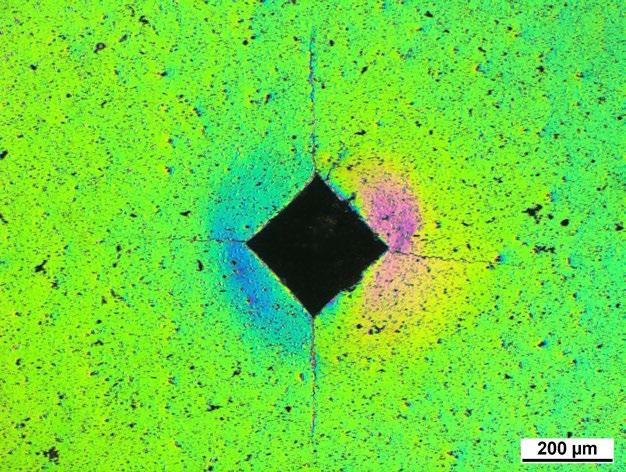

cracks on a polished Repumag Magnetic Materials Co., Ltd. sintered Nd 2Fe 14B hard magnet of the grade N42SH
Moreover, further improvements of that methodology, especially the role of the recommended annealing heat treatment, are still under investigation [64].
The aforementioned sintered Nd 2Fe 14B hard magnet grades were polished with diamond-impregnated cloths (3 µm diamond) but not annealed. Due to its low corrosion resistance, virtually water-free polishing and cleaning suspensions were used. No annealing heat treatment was carried out due to sintered Nd 2Fe 14B hard magnets’
sensitivity towards the recommended annealing temperature (for hardmetals) of �� ≈ 800 °C . One should bear in mind that hardmetals are more thermally stable compared to the investigated material group. In that temperature range, the phase composition and the constitution of the microstructure and the phases will change and the resulting fracture toughness K Ic values will not be representative anymore. Five (n = 5) Vickers hardness indentations were realised for each applied Vickers hardness
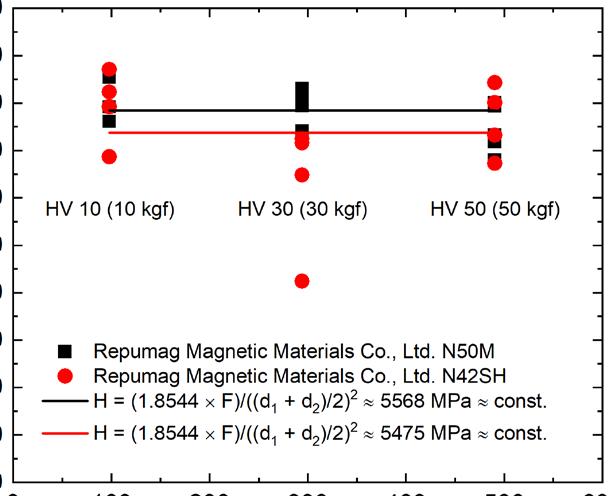
(10
Repumag Magnetic Materials Co., Ltd. N50M
Repumag Magnetic Materials Co., Ltd. N42SH
indentation force F (F ≈ 98 N (HV 10), F ≈ 294 N (HV 30) and F ≈ 490 N (HV 50)).
Figs. 19 and 20 show Differential Interference Contrast (DIC) images of both investigated sintered Nd 2Fe 14B hard magnet grades N50M and N42SH. Due to the sharper contrast, the implemented Palmqvist cracks can be seen and the total crack length T can be measured easily. Further evaluation was done accordingly, whereby all single crack lengths l i were measured independently. The results are
Geometry:
Length: I≈20 mm
Width: b≈10 mm
Height: h≈5 mm
Condition: Ground
Passivated (not coated) Chamfered
Testing condition: Palmqvist toughness test according ISO 28079:2009
Surface preparation: polished (3 µm diamond) and not annealed
Number of indents: n = 5
Total crack length: T>40 µm (valid test)
Multiple corner cracks: no (valid test)
Consistency of indentation shape: yes (valid test)
Fig. 21 Derived Vickers hardness H values of polished Repumag Magnetic Materials Co., Ltd. sintered Nd 2Fe 14B hard magnets of the grades N50M and N42SH. It can be seen that the results are more or less load-independent from the applied Vickers hardness indentation forces F (F ≈ 98 N, F ≈ 294 N and F ≈ 490 N)
T=0.00299 (mm/N)xF T=0.00298 (mm/N)xF

Geometry:
Length: I≈20 mm
Width: b≈10 mm
Height: h≈5 mm
Condition:
Ground
Passivated (not coated)
Chamfered
Testing condition:
Palmqvist toughness test according ISO 28079:2009
Surface preparation: polished (3 µm diamond) and not annealed
Number of indents: n = 5
Total crack length: T>40 µm (valid test)
Multiple corner cracks: no (valid test)
Consistency of indentation shape: yes (valid test)
Fig. 22 Measured total crack length T values of polished Repumag Magnetic Materials Co., Ltd. sintered Nd 2Fe 14B hard magnets of the grades N50M and N42SH as function of the applied Vickers hardness indentation forces F (F ≈ 98 N, F ≈ 294 N and F ≈ 490 N). The good linear correlation is a hint for the formation and existence of real Palmqvist cracks. Further evidence is given by the incremental polishing study shown in Figs. 26 to 29 which shows a separation of the individual Palmqvist cracks at a certain polishing depth t. Note the accordance of the inverse slope ΔF/ΔT ≈ 1/0.002985 to the derived Palmqvist toughness W G values from Fig. 23

Geometry:
Length: I≈20 mm
Width: b≈10 mm
Height: h≈5 mm
Condition: Ground
Passivated (not coated) Chamfered
Testing condition:
Palmqvist toughness test according ISO 28079:2009
Surface preparation: polished (3 µm diamond) and not annealed
number of indents: n = 5
Total crack length: T>40 µm (valid test)
Multiple corner cracks: no (valid test)
Consistency of indentation shape: yes (valid test)
Fig. 23 Derived Palmqvist toughness WG values of polished Repumag Magnetic Materials Co., Ltd. sintered Nd 2Fe 14B hard magnets of the grades N50M and N42SH. It can be seen that the results are more or less load-independent from the applied Vickers hardness indentation forces F (F ≈ 98 N, F ≈ 294 N and F ≈ 490 N).
summarised within Figs. 21-24. The derived Vickers hardness H values show a virtually load-independent character. One extraordinarily low Vickers hardness H value (HV 30) of the sintered Nd 2Fe 14B hard magnet grade N42SH can be identified form Fig. 21. However, the derived mean values of H ≈ 5568 MPa (grade
N50M) and H ≈ 5475 MPa (grade N42SH) are lower compared with the previously communicated Vickers hardness H values (HV 1) from Table 10. A different surface preparation (oxidised outer shell?) and a large step in the applied Vickers hardness indentation force F could be the reason.
The observed very long Palmqvist cracks indicate immediately the materials’ low fracture toughness
K Ic. The longer the Palmqvist cracks, the lower the fracture toughness
K Ic. All generated Palmqvist cracks, characterised over their loaddependent total crack lengths T shown in Fig. 22, exhibit much higher

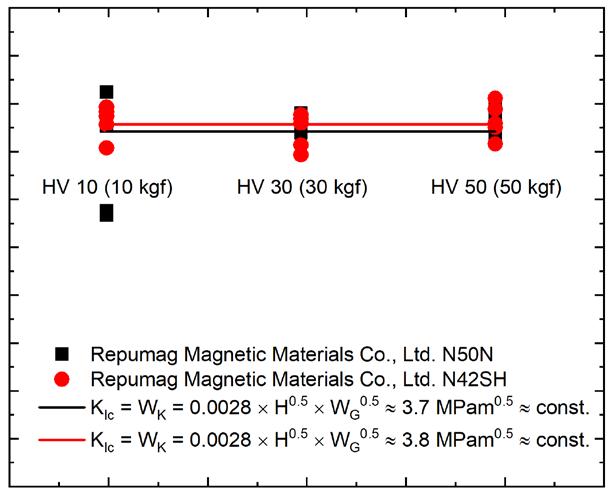
Geometry:
Length: I≈20 mm
Width: b≈10 mm
Height: h≈5 mm
Condition:
Ground
Passivated (not coated)
Chamfered
Testing condition: Palmqvist toughness test according ISO 28079:2009
Surface preparation: polished (3 µm diamond) and not annealed
Number of indents: n = 5
Total crack length: T>40 µm (valid test)
Multiple corner cracks: no (valid test)
Consistency of indentation shape: yes (valid test)
Fig. 24 Derived fracture toughness K Ic values of polished Repumag Magnetic Materials Co., Ltd. sintered Nd 2Fe 14B hard magnets of the grades N50M and N42SH. It can be seen that the results are more or less load-independent from the applied Vickers hardness indentation forces F (F ≈ 98 N, F ≈ 294 N and F ≈ 490 N)
values compared to the minimum requirement of T > 40 µm for a valid test according to the hardmetal standards [48, 50]. In that depiction, no differences can be recognised between the two tested sintered Nd 2Fe 14B hard magnet grades N50M and N42SH; they behave similarly. At the highest load level of F ≈ 490 N, Palmqvist cracks with a total crack length of T ≈ 1.5 mm were gener -
ated. As a consequence, very similar Palmqvist toughness W G and fracture toughness K Ic values are also expected.
That this is the case is shown in Figs. 23 and 24. The very small difference between the two tested sintered Nd 2Fe 14B hard magnet grades N50M and N42SH, K Ic ≈ 3.7 MPam 0.5 (grade N50M) vs. K Ic ≈ 3.8 MPam 0.5 (grade N42SH) is not signifi -

Fig. 25 LOM image of a HV 30 Vickers hardness indentation with initiated Palmqvist cracks on a polished Repumag Magnetic Materials Co., Ltd. sintered Nd 2Fe 14B hard magnet of the grade N50M (initial condition with a mean Vickers hardness indentation diagonal length of d ≈ 316 μ m)
cant. Fracture toughness differences of Δ K Ic ≈ 0.5 MPam 0.5 are not likely to be significant [49]. However, due to the higher TREE content and more Nd-rich grain boundary ε -phase of grade N42SH, a higher fracture toughness K Ic was expected. With the help of the derived fracture toughness K Ic values (expressed in MPam 0.5), Vickers hardness H values (expressed in MPa), see Figs. 21 and
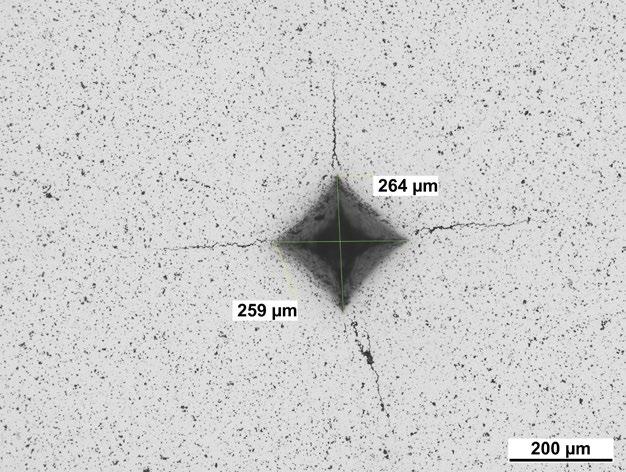
Fig. 26 LOM image of a HV 30 Vickers hardness indentation with initiated Palmqvist cracks on a polished Repumag Magnetic Materials Co., Ltd. sintered Nd 2Fe 14B hard magnet of the grade N50M (condition of separated Palmqvist cracks with a mean Vickers hardness indentation diagonal length of d ≈ 262 μ m)
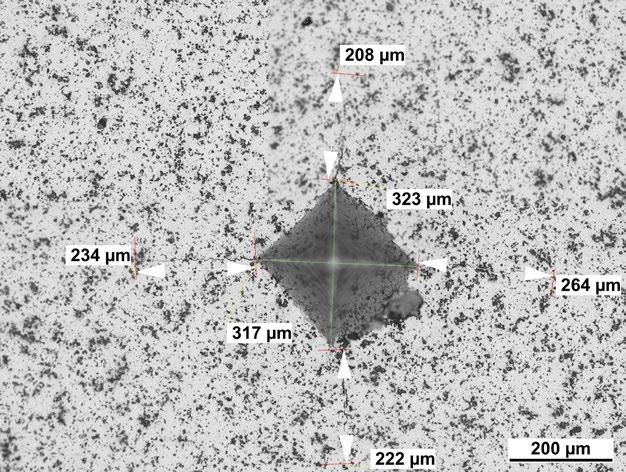
Fig. 27 LOM image of a HV 30 Vickers hardness indentation with initiated Palmqvist cracks on a polished Repumag Magnetic Materials Co., Ltd. sintered Nd 2Fe 14B hard magnet of the grade N42SH (initial condition with a mean Vickers hardness indentation diagonal length of d ≈ 320 μ m)
22, and a common Youngs modulus of E ≈ 157000 MPa, the critical grain depth of cut h cu, crit. can be estimated as h cu, crit. ≈ 1.9 µm (grade N50M) and h cu, crit. ≈ 2.1 µm (grade N42SH) to adjust the grinding parameters to avoid split off phenomena of whole grains and material clods with deep material damage.
An incremental polishing study was performed with water-free polishing suspension (1 µm diamond) on diamond-impregnated cloth to investigate the depth profiles of cracks. According to Fig. 18, this procedure is needed to prove the validity of the concept and the formation and existence of real Palmqvist cracks. The procedure was repeated several times to demonstrate the separation of the individual Palmqvist cracks at a certain polishing depth t. The polishing depth t can be calculated over the geometry of the Vickers hardness indenter and the reduction of the mean Vickers hardness indentation diagonal length d = (d 1 + d 2)/2. The results are shown in Figs. 25-28. Further evidence of the correct assumption of the generation of Palmqvist cracks gives the linear correlation through the origin of the total crack length T as a function
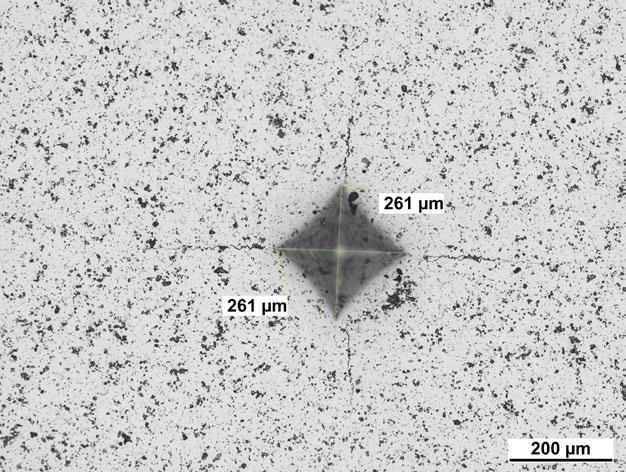
Fig. 28 LOM image of a HV 30 Vickers hardness indentation with initiated Palmqvist cracks on a polished Repumag Magnetic Materials Co., Ltd. sintered Nd 2Fe 14B hard magnet of the grade N42SH (condition of separated Palmqvist cracks with a mean Vickers hardness indentation diagonal length of d ≈ 261 μ m)
of the Vickers hardness indentation forces F as shown in Fig. 22 because a relation of T = const. × F is expected [55]. The Light Optical Microscopy (LOM) images in Figs. 25-28 show a clear separation of the Palmqvist cracks from the Vickers hardness indentation tips.
A comparison between Figs. 25-26 and 27-28 of the different polishing depths t exhibits different residual porosity f of the two grades (whitedark contrasts). As mentioned earlier, these dark artefacts are corrosiontriggered and are not pores in the normal sense of the term (as a relic of incomplete densification during sintering). Their number reflects the local polishing and cleaning quality as well as the corrosion attack time (lag time) between the preparation of the micrograph and its optical investigation (speed is key!). Therefore, an optical estimation of the residual porosity f from the polished microstructure is hardly possible.
Moreover, the empirical size condition of c/a ≥ 2.5 (transition from Palmqvist cracks to semicircular (half penny-shaped) median cracks) was fulfilled for most single (Palmqvist) cracks derived with the two lower Vickers hardness indentation forces F. A maximum value
of c/a ≈ 2.94 was found for grade N42SH for the highest applied Vickers hardness indentation force of F ≈ 490 N (here all values are above c/a ≥ 2.5). The ratio c/a increases with increasing Vickers hardness indentation force F. The residual porosity f was estimated with an assumed theoretical density of ρ 0 ≈ 7.70 g/cm³ as f = 1 - ρ / ρ 0 = 1 - 7.53/7.70 ≈ 2.2% (calculated for grade N50M) which is slightly high compared to the recommendation of f < 2% [50].
The fracture toughness K Ic of REPM was insufficiently investigated in the past. Compared to other brittle material groups (e.g. hardmetals or ceramics), mechanical properties play no big role during operation because functional materials are more characterised by their magnetic, electric or thermal response.
There are four events during sintered Nd 2Fe 14B hard magnets’ service life where large mechanical stresses and impacts must be withstood:
• During production (machining like cutting, grinding, chamfering and tumbling)
• During assembly (handling and realisation of clearance or press fits)

Curtin at el. [46] 1.4 1.9 (taken from [38]) > 2.5 (various grades)
3.9 (grade N45)
3.9 (grade N28)
4.4 (grade N40)
5.5 (grade N32)
Horton at el. [47] / 1.9
5.5 (grade N42)
2.5 (grade MQ2, E1)
2.7 (grade MQ3, E1)
4.4 (grade MQ3, H)
Horton et al. investigated the fracture toughness K Ic of eight different Nd 2Fe 14B hard magnet grades via the conventional (plane-strain) fracture toughness derivation method with chevron notched 3-P-B specimens [47]. His motivation was based on the fact that, for demanding applications (e.g. electric vehicle drive motors in which high Rotations Per Minute (RPM) and small air gaps are necessary), REPMs act as structural elements [47]. This is an additional loading case beside the aforementioned mechanisms. His results are summarised in Table 12.
Schneider e t al (this study) / / 3.7 (grade N50M)
3.8 (grade N42SH)
Table 12 Fracture toughness K Ic values of different REPM grades (note: grade MQ2 and grade MQ3 are hot-deformed Nd 2Fe 14B hard magnets made from melt spun (not strip cast) material, due to their microstructure they are more brittle than sintered Nd 2Fe 14B hard magnets). The following fracture toughness ranking can be derived easily: K Ic (sintered Sm 2Co 17) < K Ic (sintered SmCo 5) < K Ic (hot-deformed Nd 2Fe 14B) < K Ic (sintered Nd 2Fe 14B).
• During magnetisation (major internal stresses can occur associated with volumetric changes based on magnetostriction which could lead to fracture)
• During disassembly (handling and loosening of clearance or press fits)
Therefore, the proneness to edge chipping and fracturing would seem to be a major concern. Nevertheless, only a few studies have addressed this topic in the past [46, 47]. Curtin et al. investigated the fracture toughness K Ic and its microstructural dependencies of sintered samarium cobalt hard magnets of the grade Sm 2Co 17 via the conventional (planestrain) fracture toughness derivation method with chevron notched 3-P-B specimens and via the Palmqvist toughness indentations method [46]. They found the extraordinarily low fracture toughness K Ic value of K IC = 1.4 MPAm 0.5 for the sintered Sm 2Co 17 hard magnet shown in Table 12. The brittle fracture exhibits a transgranular cleavage nature (the
cracks propagate through the grains and show no preference to follow the grain boundaries). Moreover, Curtin et al. concluded that both methods (chevron notched 3-P-B specimens vs. Palmqvist toughness indentations) lead to similar results, whilst the Palmqvist toughness method exhibited a higher scattering within one sample [46]. This is not an astonishing result because the first method delivers a global average whereas the second method gives a more local toughness reading. However, Curtin et al. was able to show that some Palmqvist toughness indentations were invalid because the (corner) cracks did not initiate at the Vickers hardness indentation tip. Their initiations were influenced by the magnetic alignment direction of the sample [46]. The authors did not apply any annealing heat treatment to reduce potential residual stresses from the grinding and polishing procedure (2 µm diamond) with diamondimpregnated cloths as suggested for hardmetals [28, 48, 49, 50].
By comparing the results of various REPM grades from Table 12, it seems that sintered Nd 2Fe 14B hard magnets belong to the most robust REPM grade. Compared with other brittle material groups, e.g. hardmetals or ceramics, the extraordinarily low fracture toughness K Ic values of this intermetallic material group are of borderline character. Hardmetals with a similar Vickers hardness of approx. H ≈ 600 HV 10/ HV 30 (which is a borderline low Vickers hardness H value for the most common hardmetals and can only be realised with extraordinarily high binder phase contents of approx. Co > 25%) exhibit fracture toughness values of K Ic > 15 MPam 0.5 (the coarser the grain size d and the higher the Co-rich binder phase content, the higher the fracture toughness K Ic).
Thus the measured fracture toughness K Ic values of that study are only a quarter, or less, of a comparable hardness hardmetal grade. Even the hardest hardmetal grades with WC grains of d < 1 µm and low binder phase contents of Co < 6% exceed such low fracture toughness K Ic values. The technical minimum of that material group is around K Ic ≈ 5 MPam 0.5 – which corresponds to binderless WC – but for much higher Vickers hardness H values of approx. H ≈ 2000 HV 10/ HV 30 [29, 48, 49, 50]. More similar fracture toughness K Ic values are obtained for ceramics, e.g. for Al 2O 3, AlN and SiC as shown in Table 11 [29, 30, 32, 33].
Summary and conclusions
After a brief overview of the German hard magnet industry and the presentation of an analogy compilation to introduce the subject to REPMinexperienced readers, a few topics were addressed where modern PM knowledge can improve the massproduction of sintered Nd 2Fe 14B hard magnets and where synergies can be readily applied:
• Advanced raw material processing (TREO, REO, TREE, REE, LREE, HREE, REM and REPM) and recycling strategies
• Advanced automation, handling, assembly and robotic strategies
• Advanced compaction (shaping) and sintering methods
• Advanced machining and quality assessment strategies
• Advanced simulation, digitalisation and data analytics tools
• Advanced testing and characterisation methods
Due to the similarities of the lanthanoids and radioactive actinoids of period 7 and their geological associations, it is very likely that nuclear mining companies and countries with a vital nuclear industry will enter into raw material processing.
The nuclear phase-out in Germany after the Fukushima nuclear disaster in 2011 could have a side effect on the REPM business too because important processing know-how disappeared.
According to the formulated topic ‘Advanced testing and characterisation methods’ from above, two common test methods (Weibull and Palmqvist concepts) from the hardmetal and ceramics industries were successfully applied and discussed on two common sintered Nd 2Fe 14B hard magnet grades. These methodology developments were initiated in parallel to save research and development time and will be used in the future for internal purposes.
Based on the need to minimise the scrap rate and to maximise process robustness, different grinding regimes were discussed and required
“Due to the similarities of the lanthanoids and radioactive actinoids of period 7 and their geological associations, it is very likely that nuclear mining companies and countries with a vital nuclear industry will enter into raw material processing.”
parameters were experimentally derived. The Weibull distribution (2-parametric) seems to be a suitable PDF. This is confirmed by much better p-values from Anderson-Darling test results (null-hypothesis significance testing). Weibull moduli of m ≈ 16 (grade N50M) to m ≈ 23 (grade N42SH) were found for both sintered Nd 2Fe 14B hard magnet grades during the 3-P-B testing.
Certain AE events (AE bursts) were recognised on low strength outliers during the 3-P-B testing procedure. That effect can be used for NDT screening attempts.
The existence of a pronounced size effect or volume effect in practice means that slicing operations on larger sintered Nd 2Fe 14B hard magnet blocks will exhibit a higher risk of damage and will cause more scrap material. For the validation of the predicted size or volume effects, the 4-P-B configuration should be tested, too, to see whether the predicted drop of σ 3-P-B, 63.2%/ σ 4-P-B, 63.2% = (0.5 × (m + 2)) 1/m = 1.147 (grade N50M) and 1.116 (grade N42SH) can be recognised experimentally. Due to that, a 4-P-B fixturing device with a support span distance of l 1 ≈ 16 mm and an inner support span distance of l 2 ≈ 8 mm is currently under construction.
It was found that the Co- and Dy-rich sintered Nd 2Fe 14B hard magnet grade N42SH exhibits a more robust behaviour. It was speculated that the higher Co- and Dy-contents, in addition to their positive effect on the corrosion resistance and Curie temperature TC, could be the origin. Potentially, the higher amount of Nd-rich grain boundary ε -phase of grade N42SH and its cladding nature on the Nd 2Fe 14B grains is the root cause.
Valid Palmqvist cracks (independent shallow arcs, with a separation from the Vickers hardness indentation tips at a certain polishing depth t) were derived on both sintered Nd 2Fe 14B hard magnet grades N50M and N42SH. Even though this methodology has not been adopted into ceramic standards (only the hardmetal industry has incorporated the Palmqvist toughness method as a standard), the methodology works on sintered Nd 2Fe 14B hard magnet grades.
The derived fracture toughness K Ic values are in a reasonable range compared with published results. However, the calculated values of K Ic ≈ 3.7 MPam 0.5 (grade N50M) and K Ic ≈ 3.8 MPam 0.5 (grade N42SH) are low enough that the previously communicated concerns regarding their robustness during the production, assembly, magnetisation, operation and disassembly process steps were reinforced by the current work.
In Shetty’s formula for the calculation of the coefficient β Shetty, there is a hidden material dependency. Since he was focused on WC-Co hardmetals, he applied the corresponding Poisson’s ratio of that material group of ν = 0.22 into the analysis and derived that ‘constant.’ Sintered Nd 2Fe 14B hard magnets exhibit a slightly higher value of ν ≈ 0.24. The calculation error to be expected when applying to other material groups must be checked. Here it was found to be insignificant.
The critical grain depth of cut h cu, crit. was calculated as h cu, crit. ≈ 1.9 µm (grade N50M) and h cu, crit. ≈ 2.1 µm (grade N42SH), respectively. Moreover, a fracture toughness ranking was proposed in the form: K Ic (sintered Sm 2Co 17) < K Ic (sintered

SmCo 5) < K Ic (hot-deformed Nd 2Fe 14B) < K Ic (sintered Nd 2Fe 14B). In general, the analysed sintered Nd 2Fe 14B hard magnet grades N50M and N42SH are similar in Vickers hardness H to steels, in Youngs modulus E to porous sintered PM steels, in fracture toughness K Ic to ceramics, and regarding strength value scattering (Weibull modulus m) somewhere in between hardmetals and ceramics.
Recommendations and future work
One of GKN Powder Metallurgy’s goals is the delivery of sintered Nd 2Fe 14B hard magnets of very high processing quality and reliability. This can be achieved and monitored through the progression of the Weibull modulus m and the avoidance of low strength outliers, e.g. through installed acoustic sensors (microphones) which can detect AE bursts. The Weibull modulus m can be improved through better Nd 2Fe 14B powder processing, a better sintering and heat treatment (sintering aids and doping) strategy or a better machining (e.g. grinding) procedure. In general, all improvement steps which reduce bulk material (pores) and surface defects (roughness) are of relevance.
Due to the pronounced size or volume effects, we expect more scrap material and a higher scrap rate when larger sintered Nd 2Fe 14B
hard magnet blocks are machined. For the further systematic characterisation of in-house-produced sintered Nd 2Fe 14B hard magnets, the lack of any REPM-specific standards, and an expected strong size effect or volume effect we recommend:
• The consistent use of the same geometry (rectangular sintered Nd 2Fe 14B hard magnet blocks with the nominal dimensions of length l ≈ 20 mm, width b ≈ 10 mm and height h ≈ 5 mm, modified with chamfered edges with a chamfer angle of ζ ≈ 45° and a chamfer length of x ≈ 0.35 mm)
• The grinding of the surface resulting in surface roughness values of Ra ≈ 1 µm and Rz ≈ 6 µm without any further coating attempts (no epoxy coating, Ni plating, etc.)
• The usage of the 3-P-B configuration with a support span distance of l 1 ≈ 15 mm (it must be clear that results obtained with different (3 or 4)-P-B configurations will not be comparable).
The mass production of sintered Nd 2Fe 14B hard magnets at GKN Powder Metallurgy will demonstrate whether different grades of sintered Nd 2Fe 14B hard magnets will show a different level of robustness in terms of scrap rate and quality level. The avoidance of edge chipping, grain tear-outs and pluck-outs are important process stabilisation
“The mass production of sintered Nd2Fe14B hard magnets at GKN Powder Metallurgy will demonstrate whether different grades of sintered Nd2Fe14B hard magnets will show a different level of robustness in terms of scrap rate and quality level. The avoidance of edge chipping, grain tear-outs and pluckouts are important process stabilisation approaches...”
approaches which will have a significant impact on the cost structure. We will see how different sintered Nd 2Fe 14B hard magnet grades will behave and if further trials are needed.
Since the application of the Palmqvist toughness method is easy and delivers two parameters (the Vickers hardness H and the total crack length T) in parallel, that methodology should become a standard procedure for the qualification of different sintered Nd 2Fe 14B hard magnet grades. It is very likely that this methodology will also be sensitive to different grain sizes d, processing parameters or undesired impurities (oxides, nitrides, carbides, free iron or pores).
An effective way to increase the fracture strength of hard and brittle materials is the introduction of (negative) compressive residual stresses σ -. This modification suppresses the early activation and failure of surface defects. This procedure works very successfully on hardened or tempered glasses as well as on glazed ceramics where the lower coefficient of thermal expansion CTE of the glaze is responsible for that beneficial mismatch. However, higher sintered Nd 2Fe 14B hard magnet grades are magnetically hardened over the deposition of HRRE like Tb or Dy on the surface. Those elements diffuse through the subsurface via GBDP into the bulk material to a certain diffusion depth t. The question then arises whether the residual stress state is also affected (in a positive manner)? According to the present knowledge of the authors, that question is not yet answered.
Authors
Dr Markus Schneider, Kevin Haffke and Dr Dennis Wawoczny GKN Powder Metallurgy Engineering GmbH, Radevormwald Germany markus.schneider@gknpm.com www.gknpm.com
Acknowledgements
The authors would like to thank the REPM team at the University of Birmingham in the UK (Dr. F. A. Burkhardt, Prof. D. Brown and Prof. A. Walton), the REPM team at the University of Aalen in Germany (Prof. D. Goll, Prof. G. Schneider, Dr. T. Bernthaler and Dipl.-Phys. G. Martinek) and the REPM experts Dr. B. Grieb (ppm materials GmbH, Kirchheim/Teck, Germany), Dr. H. Nagel (consultant), Dr. W. Fernengel (consultant), Dipl.-Ing. V. Quast (BOMATEC AG, Höri, Switzerland), Dipl.-Phys. W. Cassing (consultant), Dipl.-Phys. M. Krengel (WILO SE, Dortmund, Germany), Dipl.-Ing. W. Stass (Max Baermann GmbH, Bergisch Gladbach, Germany) and Dr. I. Lindemann (Fraunhofer-Institut für Fertigungstechnik und Angewandte Materialforschung IFAM, Dresden, Germany) for their contributions. Helpful RE processing and recycling information came also from the University of Freiberg in Germany (Prof. M. Bertau and Dr. P. Fröhlich). The similarity compilation to the hardmetals was discussed with Dr. R. Useldinger (CERATIZIT S.A., Mamer, Luxembourg). Helpful comments regarding the application of the Palmqvist concept on hardmetals and ceramics came from Prof. G. D. Quinn (National Institute of Standards and Technology, Gaithersburg, USA), Prof. R. Danzer (University of Leoben, Leoben, Austria), Prof. D. K. Shetty (University of Utah, Salt Lake City, USA) and Prof. B. Roebuck (National Physical Laboratory, Teddington, UK).
References
[1] M. Schneider, K. Haffke, D. Wawoczny: Adaptation of test methods from the hard metal/ cemented carbide and ceramics industry for the characterization of sintered Nd 2Fe 14B hard magnets, ceramic form international, Vol. 101, No. 2 (2024), p. 83-91
[2] P. Friedrichs: Development of a Rare Earth Element Resource Data -
base Management System, Dr.-Ing. Thesis, University of Aachen, 2017
[3] C. R. Böhm: Die Darstellung der Seltenen Erden – Band 1, Verlag Von Veit & Comp., Leipzig, 1 st edition, 1905
[4] C. R. Böhm: Die Darstellung der Seltenen Erden – Band 2, Verlag Von Veit & Comp., Leipzig, 1 st edition, 1905
[5] C. R. Böhm: Die Verwendung der Seltenen Erden, Verlag Von Veit & Comp., Leipzig, 1 st edition, 1913
[6] Dr. Fabian Allen Burghardt (University of Birmingham, Birmingham, UK), personal communication
[7] Dr. Bernd Grieb (ppm materials GmbH, Kirchheim/Teck, Germany), personal communication
[8] Y. Schüler-Zhou: Chinas Rohstoffpolitik für Seltene Erden, Bundesanstalt für Geowissenschaften und Rohstoffe, Hannover, 2018
[9] R. Kieffer, F. Benesovsky: Hartmetalle, Springer-Verlag, Wien, New York, 1 st edition, 1965
[10] H. Kolaska: Pulvermetallurgie der Hartmetalle, Fachverband für Pulvermetallurgie, Hagen, 1 st edition, 1992
[11] Dr. Hartmut Nagel (consultant), personal communication
[12] Prof. David Brown (University of Birmingham, Birmingham, UK), personal communication
[13] Dr. Wilhelm Fernengel (consultant), personal communication
[14] Dipl.-Phys. Gerhard Martinek (University of Aalen, Aalen, Germany), personal communication
[15] Prof. Dagmar Doll (University of Aalen, Aalen, Germany), personal communication
[16] J. J. Croat, J. Ormerod: Modern Permanent Magnets, Woodhead Publishing, Cambridge, 1 st edition, 2022
[17] Dipl.-Ing. Volker Quast (BOMATEC AG, Höri, Switzerland), personal communication
[18] H. Kitzig-Frank, B. Azarhoushang, S. Shamray: Duktile Zerspanung spröder Werkstoffe, 12. Seminar 2018, Moderne Schleiftechnologie und Feinstbearbeitung,
Kompetenzzentrum für Spanende Fertigung (KSF), Hochschule Furtwangen, 2018
[19] Verband der Keramischen Industrie e. V.: Technische Keramik in der Praxis – Seminar 2003, Informationszentrum Technische Keramik (IZTK), Selb, 1 st edition, 2003
[20] L. Behrens: Schleifen von PCBN, Dr.-Ing. Thesis, University of Hannover, 2016
[21] N. Jochum: Zerspanung ultraharter Keramik am Beispiel einer dreigliedrigen Zahnbrücke, Dr.-Ing. Thesis, University of Zürich, 2013
[22] T. G. Bifano, S. C. Fawcett: Specific grinding energy as an in-process control variable for ductile-regime grinding, Precision Engineering, Vol. 13, No. 4 (1991), p. 256-262
[23] J. P. Erauw, W. Hendrix, E. Van Hoof, K. Breder, M. K. Ferber: Machining of silicon nitride: Process parameters – Mechanical properties relationship, in Proceedings of the 6 th International Symposium on Ceramic Materials and Components for Engines, edited by K. Niihara, S. Hirano, S. Kanzaki, K. Komeya, K. Morinaga (Japan Fine Ceramics Association), Arita, Japan 1997, p. 394-399
[24] J. J. Croat: Rapidly Solidified Neodymium-Iron-Boron Permanent Magnets, Woodhead Publishing, Cambridge, 1 st edition, 2018
[25] Dipl.-Phys. Wilhelm Cassing (consultant), personal communication
[26] Dipl.-Phys. Martin Krengel (WILO SE, Dortmund, Germany), personal communication
[27] DIN EN 843-1:2008-08: Hochleistungskeramik
[28] M. Zivcec: Gefüge und Festigkeit eines feld- und druckunterstützt gesinterten Wolframcarbid-CobaltHartmetalls, Dr.-Ing. Thesis, University of Aachen, 2015
[29] W. Kollenberg: Technische Keramik, Vulkan-Verlag GmbH, Essen, 2 nd edition, 2009
[30] Verband der Keramischen Industrie e. V.: Technische Keramik in der Praxis – Seminar 2011, Informationszentrum Technische Keramik (IZTK), Selb, 1 st edition, 2011

[31] H. Salmang, H. Scholze: Keramik, Springer-Verlag, Berlin, Heidelberg, 7 th edition, 2007
[32] Verband der Keramischen Industrie e. V.: Brevier Technische Keramik, Informationszentrum Technische Keramik (IZTK), Fahner Verlag, Lauf, 4 th edition, 2003
[33] L. Michalowsky: Neue keramische Werkstoffe, Deutscher Verlag für Grundstoffindustrie, Leipzig, Stuttgart, 1 st edition, 1994
[34] B. Bertsche, G. Lechner: Zuverlässigkeit im Fahrzeug- und Maschinenbau, Springer-Verlag, Berlin, Heidelberg, New York, 3 rd edition, 2004
[35] H. Wilker: Weibull-Statistik in der Praxis, Books on Demand GmbH, Norderstedt, 2 nd edition, 2010
[36] U. Graf, H.-J. Henning, K. Stange, P.-T. Wilrich: Formeln und Tabellen der angewandten mathematischen Statistik, Springer-Verlag, Berlin, Heidelberg, 3 nd edition, 1987
[37] Origin help: https://www. originlab.com/doc/Origin-Help
[38] Minitab help: https://www. minitab.com/de-de/support/
[39] B. Buchmayr: Werkstoff- und Produktionstechnik mit Mathcad, Springer-Verlag, Berlin, Heidelberg, 1 st edition, 2002
[40] J. W. McPherson: Reliability Physics and Engineering, Springer International Publishing Switzerland, Cham, Heidelberg, 2 nd edition, 2013
[41] G. Linß: Qualitätssicherung –Technische Zuverlässigkeit, Carl Hanser Verlag, München, 1 st edition, 2016
[42] W. Weibull: Fatigue testing and analysis of results, Pergamon Press, New York, Oxford, London, Paris, 1 st edition, 1961
[43] R. M. German, S. J. Park: Handbook of Mathematical Relations in Particulate Materials Processing, John Wiley & Sons, Inc., New York, London, Sydney, 1 st edition, 2008
[44] J. B. Quinn, G. D. Quinn: A practical and systematic review of Weibull statistics for reporting strengths of dental materials, Dental Materials, Vol. 26, No. 2 (2010), p. 135-147
[45] L. Affarrante, M. Ciavarella, E. Valenza: Is Weibull’s modulus really a material constant? Example case with interacting collinear cracks, International Journal of Solids and Structures, Vol. 43, No. 17 (2006), p. 5147-5157
[46] P. R. Curtin, S. Constantinides, P. I. Victoria: Fracture toughness of samarium cobalt magnets, IMECE 2015, Housten, p. 1-5
[47] J. A. Horton, J. W. Herchenroeder, J. L. Wright, D. S. Easton: Fracture toughness of Nd 2Fe 14B magnets, Materials Transactions, JIM, Vol. 37, No. 4 (1996), p. 860-863
[48] ISO 28079:2009: Hardmetals –Palmqvist toughness test
[49] B. Roebuck, E. G. Bennett: Hardness toughness tests: VAMAS interlaboratory exercise, NPL, Report No. 48, 2005
[50] B. Roebuck, E. G. Bennett, L. Lay, R. Morrell: Palmqvist toughness for hard and brittle materials, NPL, Measurement Good Practice Guide No. 9, 2008
[51] Prof. George D. Quinn (National Institute of Standards and Technology, Gaithersburg, USA), personal communication
[52] C. B. Ponton, R. D. Rowlings: Dependence of the Vickers indentation fracture toughness on the surface crack length, British Ceramic Transactions and Journal, Vol. 88 (1989), p. 83-90
[53] C. B. Ponton, R. D. Rowlings: Vickers indentation fracture toughness test – Part 1: Review of literature and formulation of standardised indentation toughness equations, Materials Science and Technology, Vol. 5 (1989), p. 865-872
[54] G. D. Quinn, R. C. Bradt: On the Vickers indentation fracture toughness test, Journal of the American Ceramic Society, Vol. 90 (2007), p. 673-680
[55] R. Spiegler, S. Schmauder, L. S. Sigl: Fracture toughness evaluation of WC-Co alloys by indentation testing, Journal of Hard Materials, Vol. 1, No. 3 (1990), p. 147-158
[56] A. Moradkhani, V. Panahizadeh, M. Hoseinpour: Indentation fracture toughness of brittle materials using irregular cracks: A review, Heliyon, Vol. 9, No. 9 (2023), p. 1-12
[57] T. Aleksandrov Fabijani ć , D. Ć ori ć, M. Šnajdar Musa, M. Sakoman: Vickers indentation fracture toughness of near-nano and nanostructured WC-Co cemented carbides, Metals, Vol. 7, No. 4 (2017), p. 1-16
[58] D. K. Shetty, I. G. Wright: On estimating fracture toughness of cemented carbides from Palmqvist crack sizes, Journal of Materials Science Letters, Vol. 5, No. 3 (1986), p. 365-368
[59] Prof. Robert Danzer (University of Leoben, Leoben, Austria), personal communication
[60] Prof. Dinesh K. Shetty (University of Utah, Salt Lake City, USA), personal communication
[61] Prof. Bryan Roebuck (National Physical Laboratory, Teddington, UK), personal communication
[62] D. K. Shetty, I. G. Wright, P. N. Mincer, A. H. Clauer: Indentation fracture of WC-Co cermets, Journal of Materials Science, Vol. 20 (1985), p. 1873-1882
[63] R. Haubner, R. De Oro Calderon, S. Strobl: Metallographie zur Qualitätssicherung von Sinterstahl und Hartmetall, Vortrag Praktikertag Pulvermetallurgie, 38. Hagener Symposium, Technische Universität Wien, 2019
[64] P. C. Jindal: A new method for evaluating the indentation toughness of hardmetals, Crystals, Vol. 8, No. 5 (2018), p. 1-6
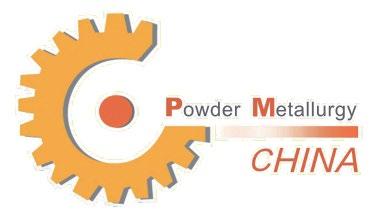
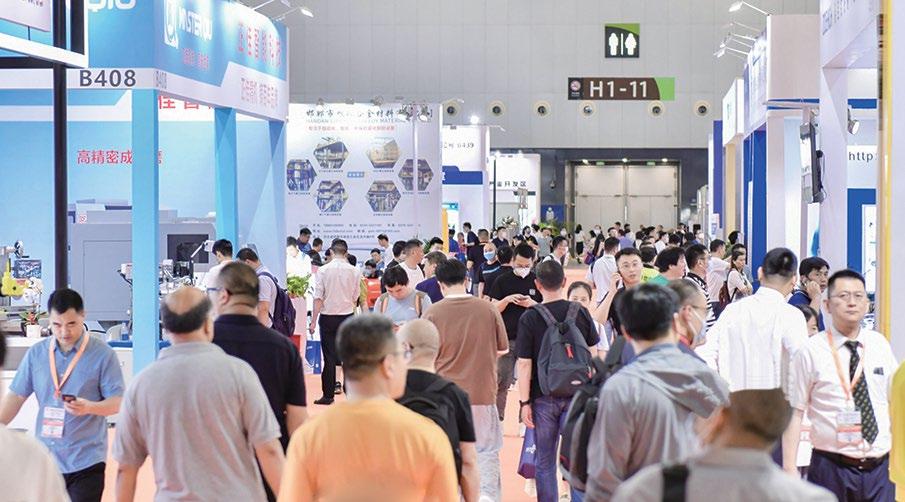
Tel: +86-21-5988
Email: pmchina@unirischina.com pmchina@unifair.com
Web: www.pmexchina.com
Advertisers’ index & buyer’s guide
advertisers’ index and buyer’s guide serves as a convenient guide to suppliers across the PM supply chain. In the digital edition of PM Review magazine, available at www.pm-review.com, simply click on a company name to view its advert, or on the company’s weblink to go directly to its website.
Dorst Technologies
www.dorst.de
Komage Gellner Maschinenfabrik KG 27
www.komage.de
Osterwalder AG 23 www.osterwalder.com
System 3R International AG 16 www.system3r.com
Combining
Reach
Alphabetical index

Industry events
PM Review is dedicated to driving awareness and development of Powder Metallurgy and its related technologies. Key to this aim is our support of a range of international conferences and events. View our complete events listing on www.pm-review.com
EPMA AM Seminar
June 4–5 – Augsburg, Germany seminars.epma.com/event/am-seminar-2024
2 nd European EV Thermal Management Summit 2024
June 6–7 – Frankfurt, Germany www.ecv-events.com/ads/ EuropeanEVThermalManagement
Advanced Manufacturing for Defense
June 11–12 – Pasadena, CA, USA www.idga.org/events-advancedmanufacturing
Dritev
June 12–13 – Baden-Baden, Germany www.vdiconference.com/dritev
PowderMet2024/ AMPM2024
June 16–19 – Pittsburgh, PA, USA www.powdermet2024.org/ www.ampm2024.org
RAPID + TCT 2024
June 25–27 – Los Angeles, CA, USA www.rapid3devent.com
WBE 2024
August 8–10 – Guangzhou, China en.battery-expo.com
Formnext + PM South China
August 28–30 – Shenzhen, China www.formnext-pm.com
PMTi 2024
September 4–6 – Madrid, Spain www.pmti2024.com
Looking for an event partner?
Euro PM2024
September 29 – October 2 – Malmö, Sweden www.europm2024.com
The Advanced Materials Show USA
October 8–9 – Pittsburgh, PA, USA www.advancedmaterialsshowusa.com
World PM2024
October 13–17 – Yokohama, Japan www.worldpm2024.com
Advanced Engineering
October 30–31 – Birmingham, UK www.advancedengineeringuk.com
Formnext
2024 2025
November 19–22 – Frankfurt, Germany www.formnext.com
The Magnetics Show Europe
December 3–4 – Amsterdam, Netherlands www.magnetics-eu.com
PM China
March 10–12 – Shanghai, China en.pmexchina.com
EMO Hannover 2025
September 22–27 – Hannover, Germany www.deutschemesse.co.uk/emo
PM Review collaborates with a variety of Powder Metallurgy and associated events throughout the year, ranging from major trade shows to smaller technical conferences and seminars. If you would like to partner with us for your event, contact Merryl Le Roux: merryl@inovar-communications.com

REGISTER NOW
Organised by:
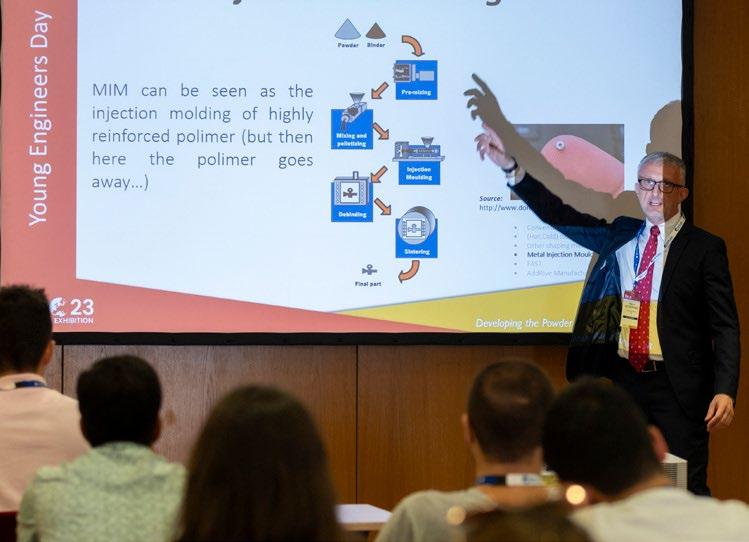


EXHIBITION CONGRESS
Dive into the heart of the PM industry at Euro PM2024, where industry leaders, academics, and professionals converge.
With 250 presentations over three days, including Keynote paper presentations and Special Interest Seminars, this event promises to redefine industry standards and unveil the latest PM advancements.
Explore the latest trends and advancements in PM as you connect with industry-leading suppliers, engage with potential clients, and discover cutting-edge PM solutions
New this year: Micro stands can be reserved by new exhibitor at the Euro PM2024 and the Exhibition will provide an area dedicated to showcasing Sweden’s PM industry!
SOCIAL MEETING
Embark on a journey to meet the driving forces behind powder metallurgy technology, industry and innovation at Euro PM2024.
Don’t miss out the opportunity to attend our social events: The Welcome reception on Sunday evening, the poster reception on Monday and the congress dinner at Slagthuset on Tuesday.



